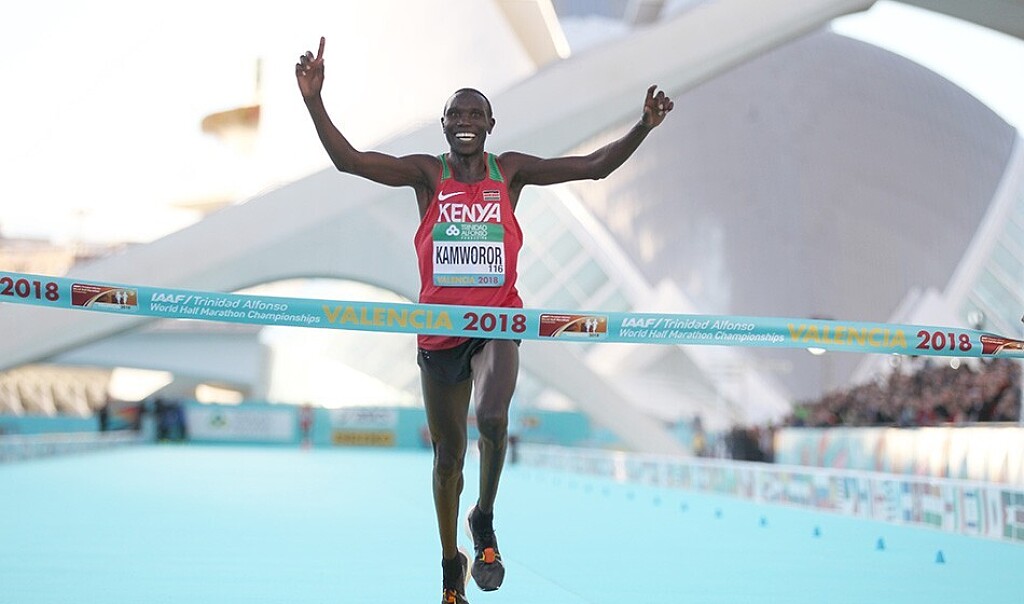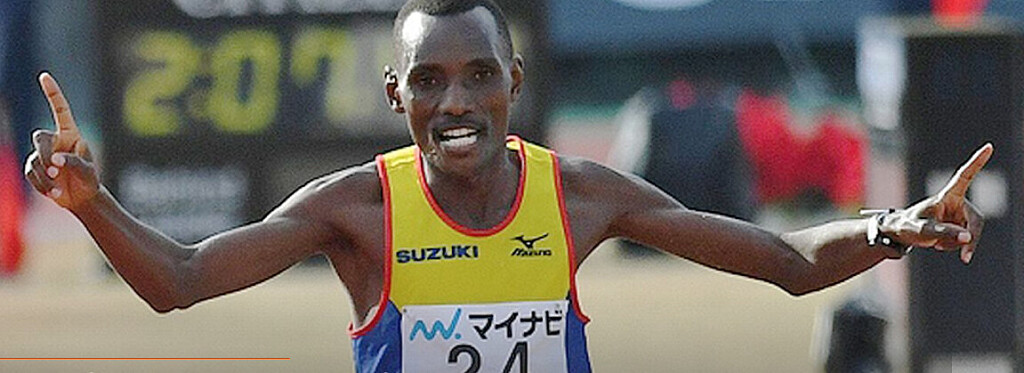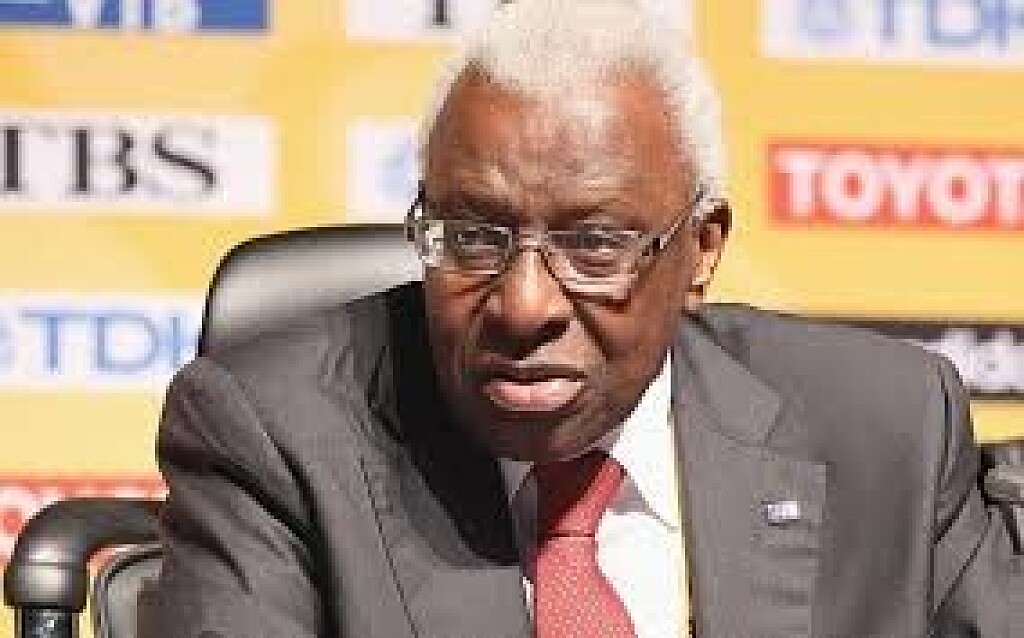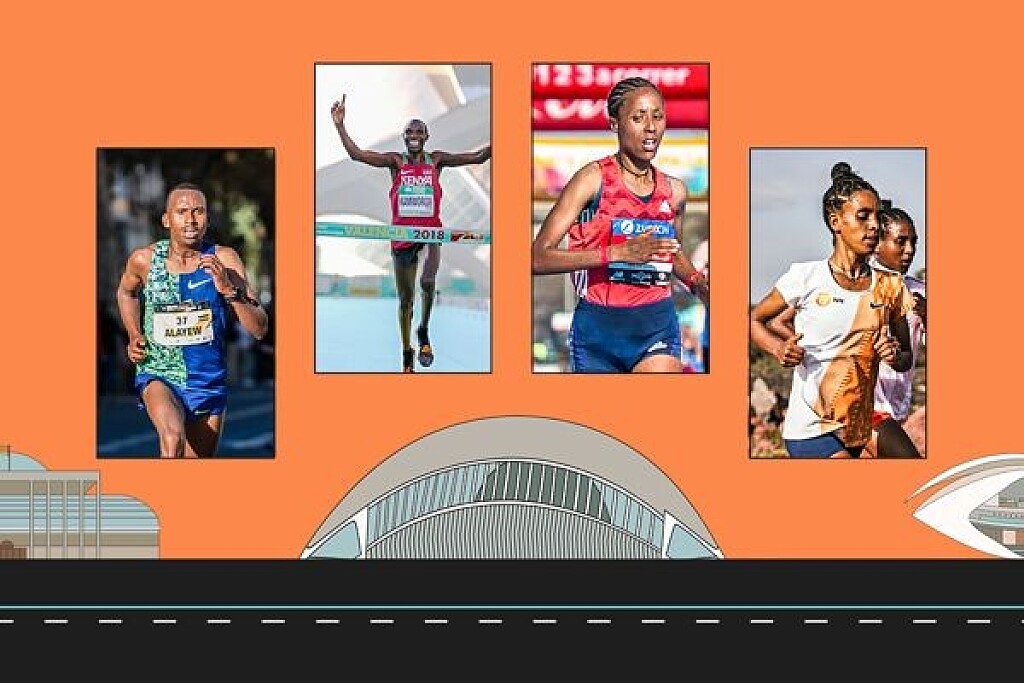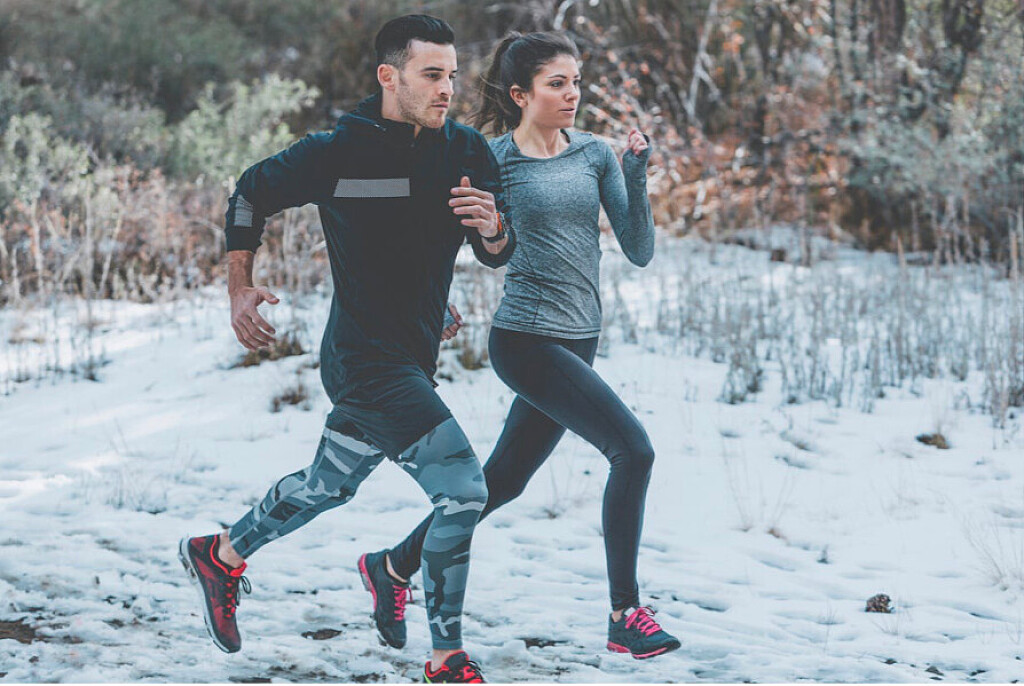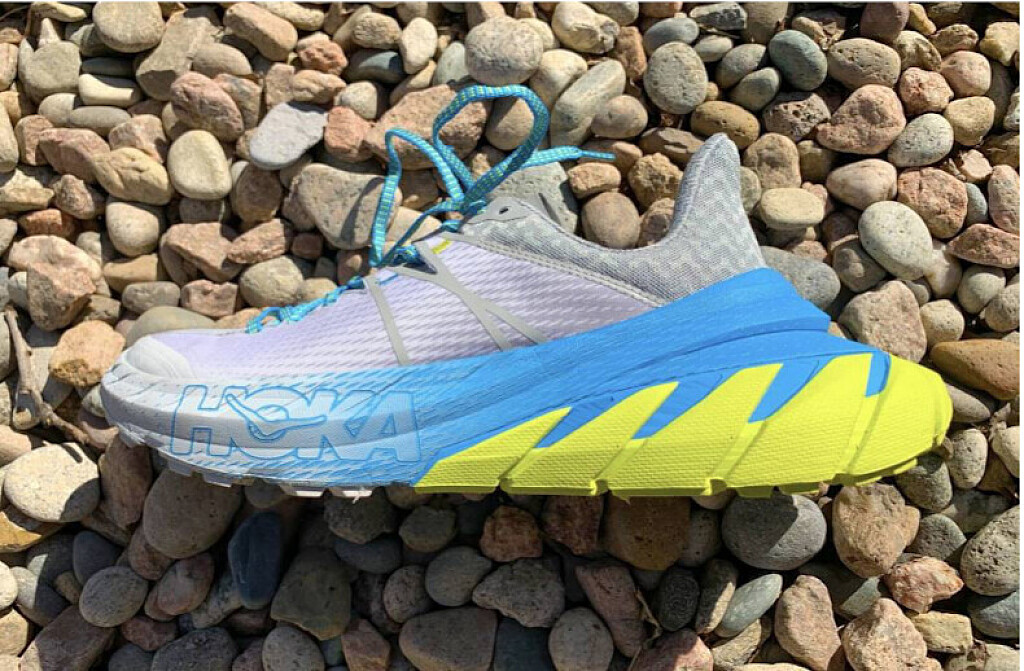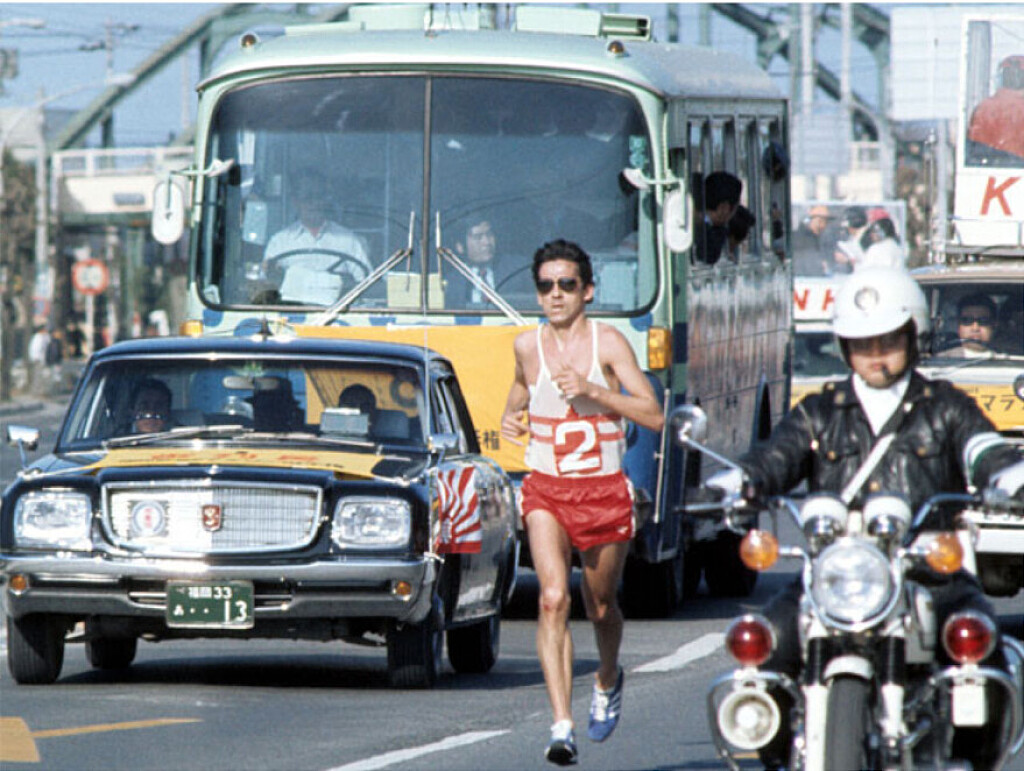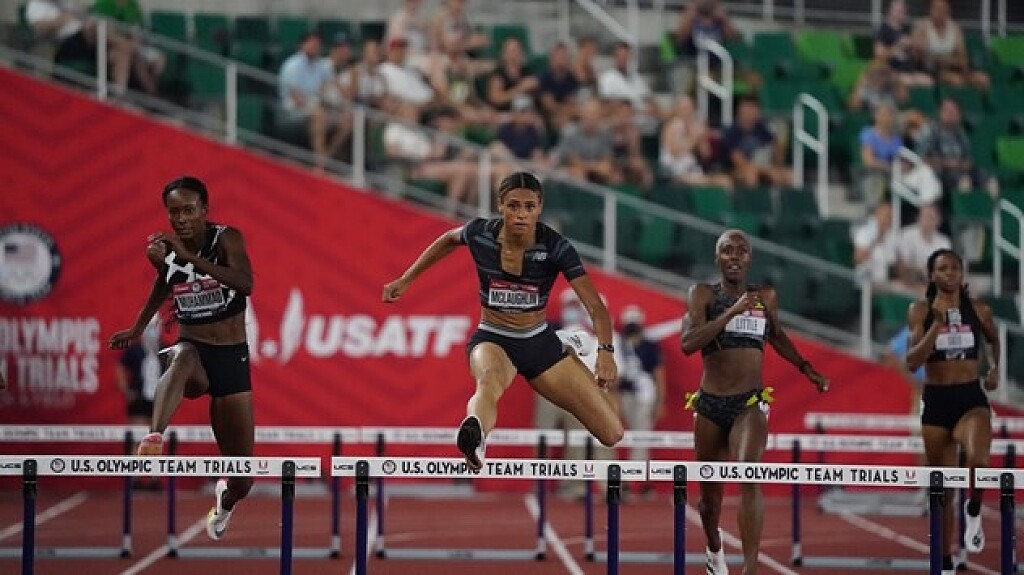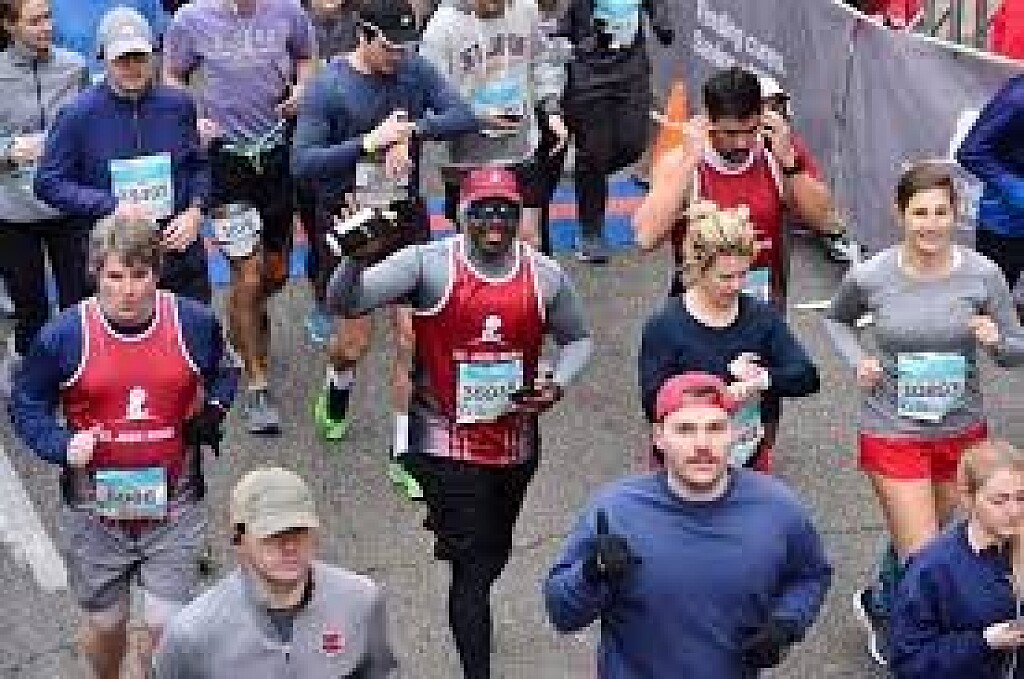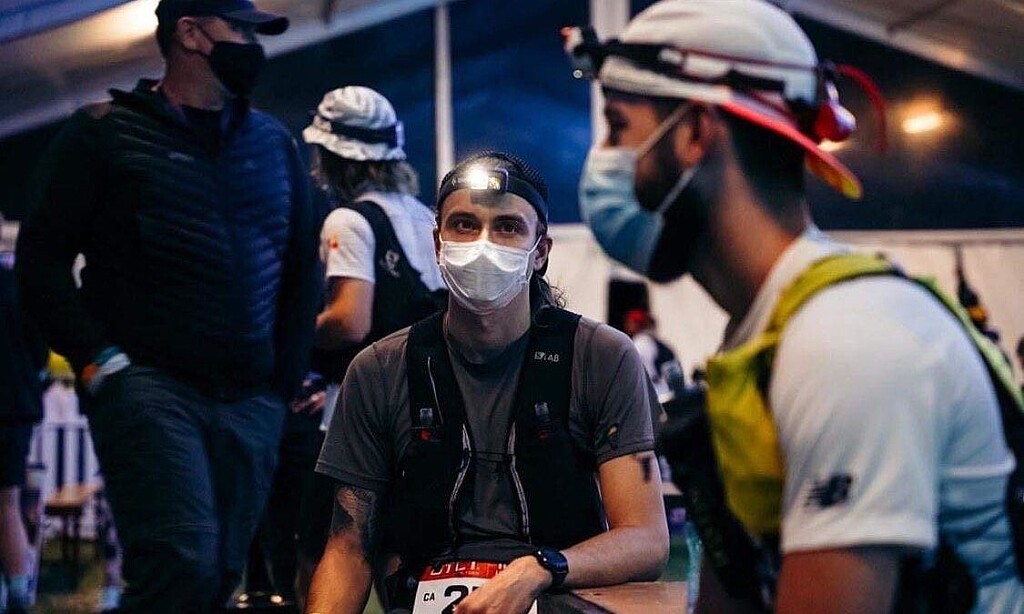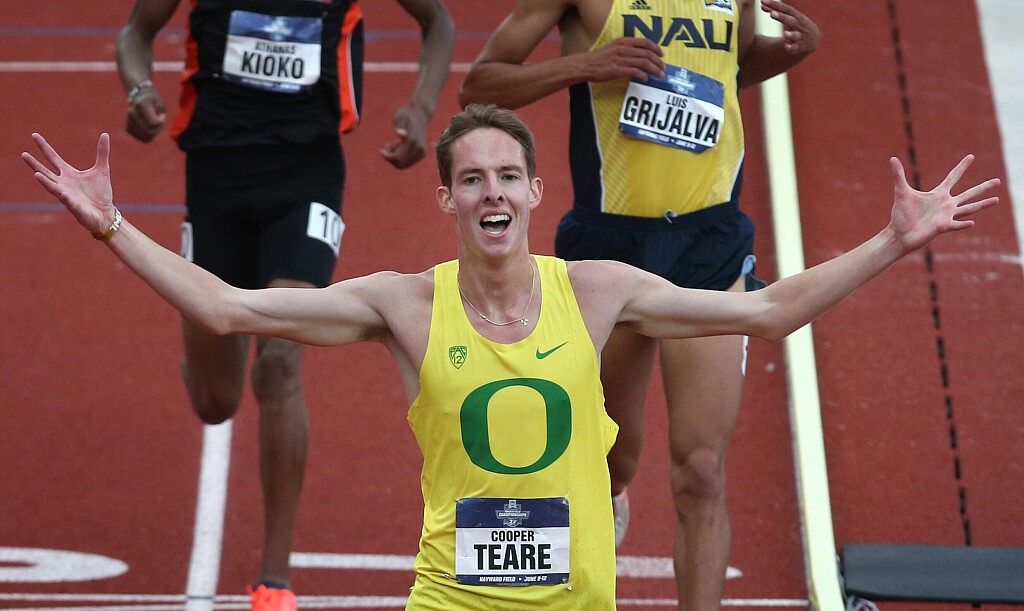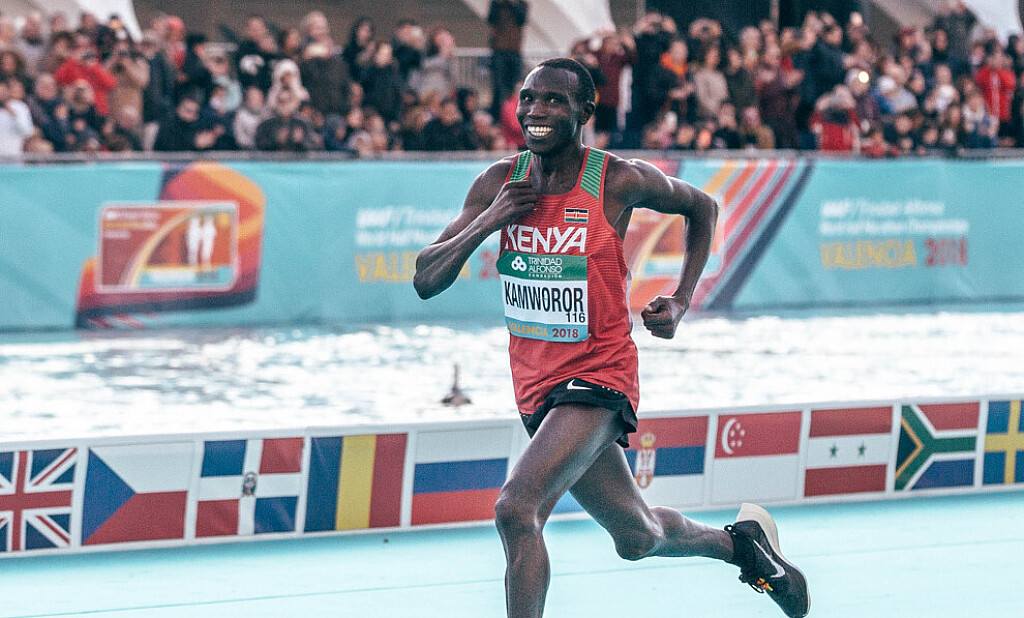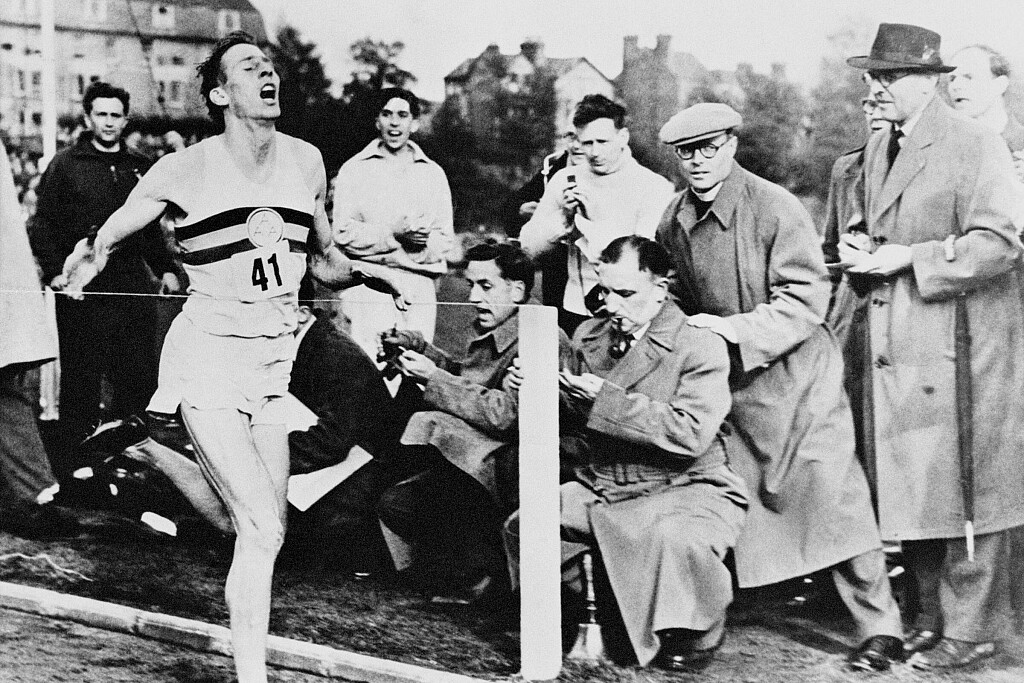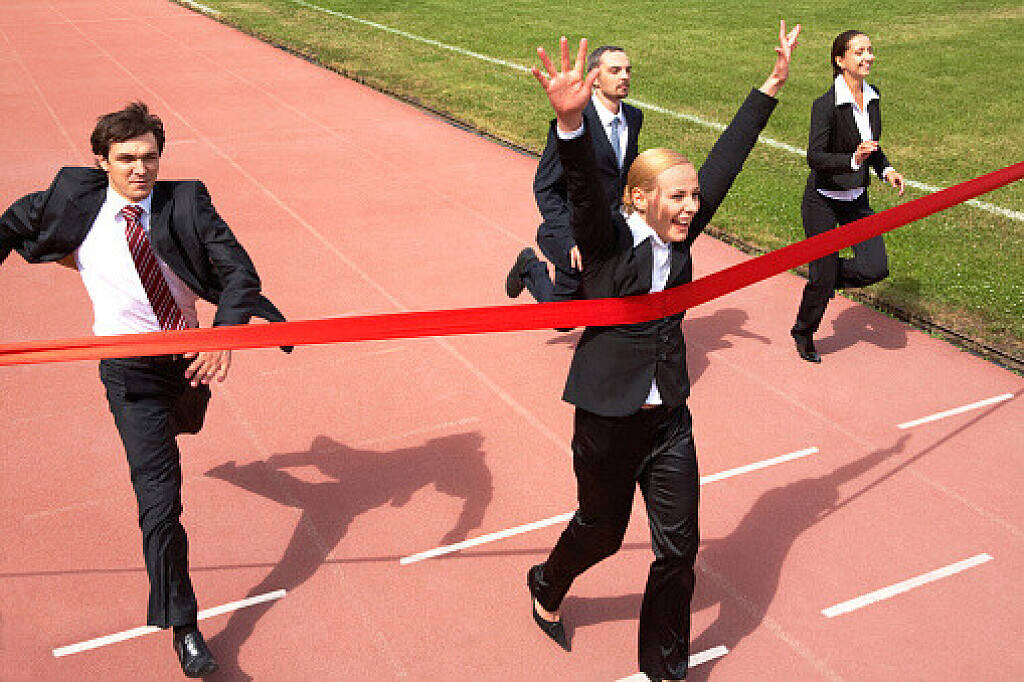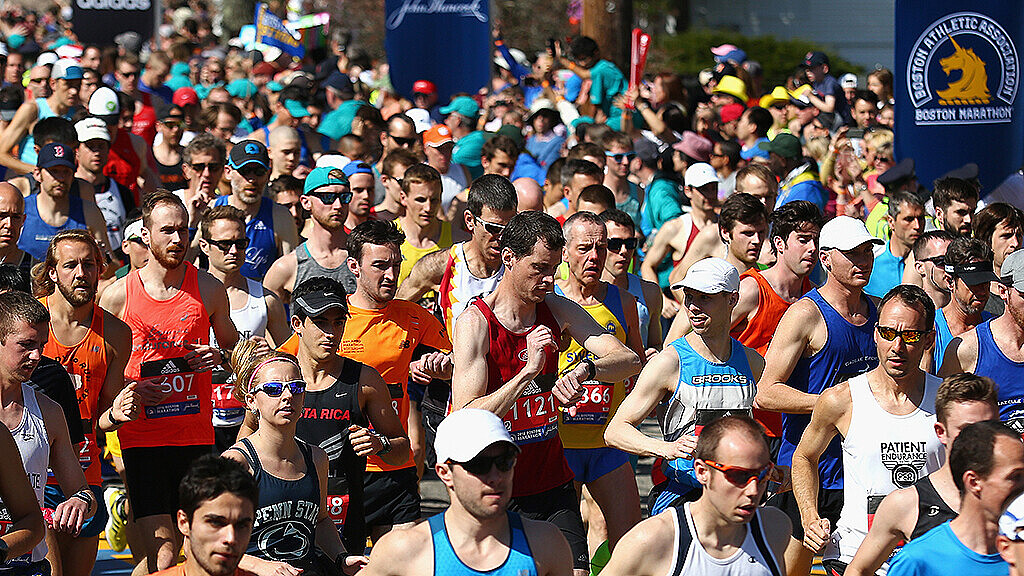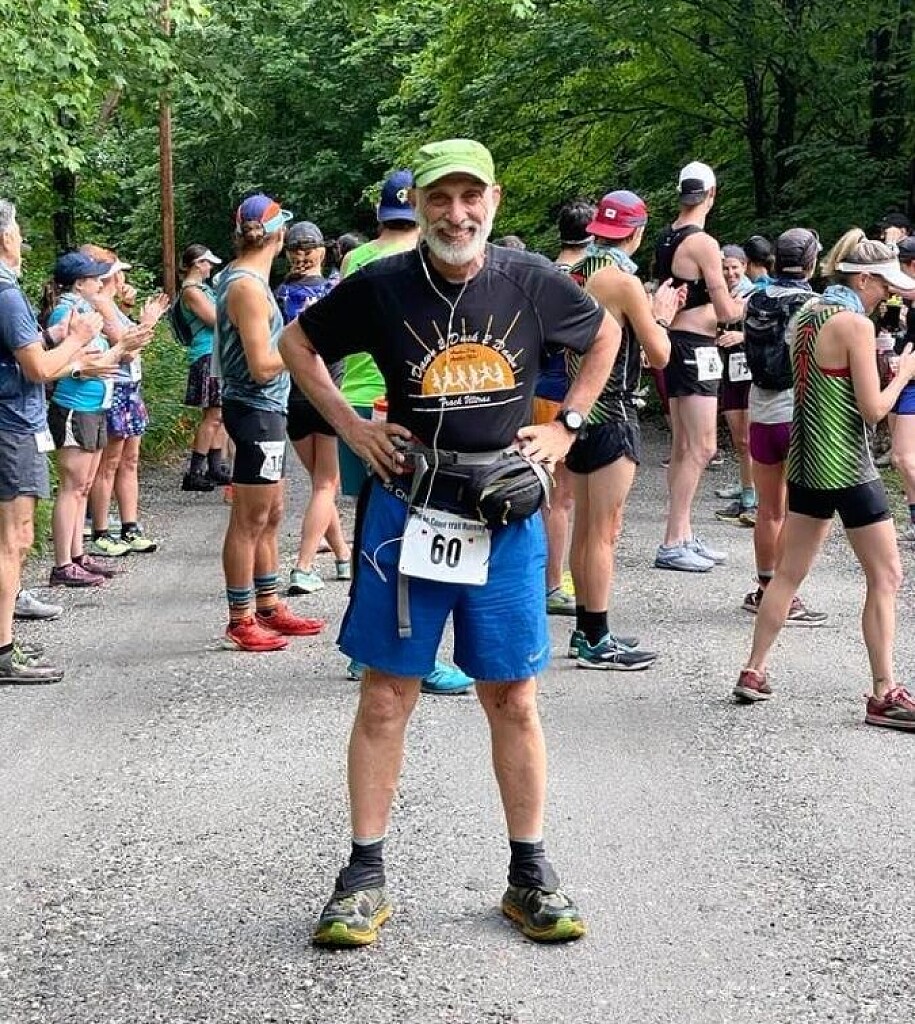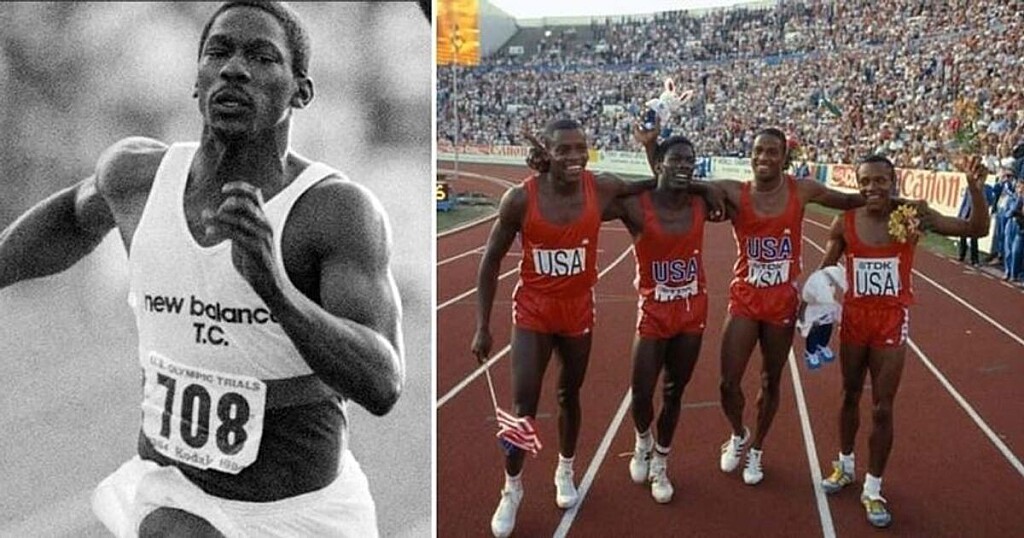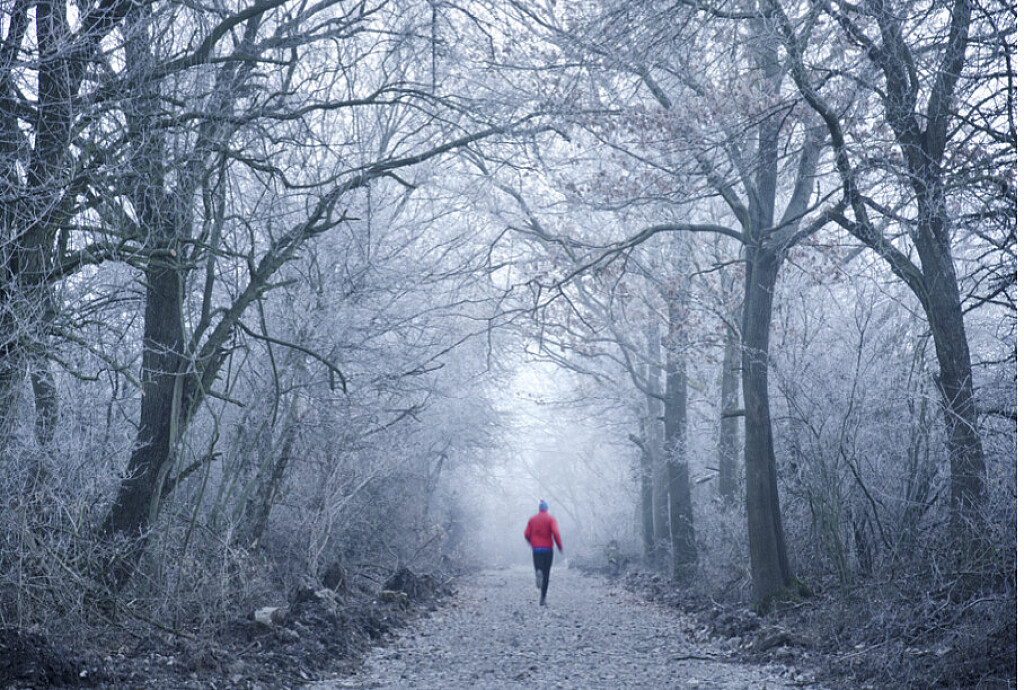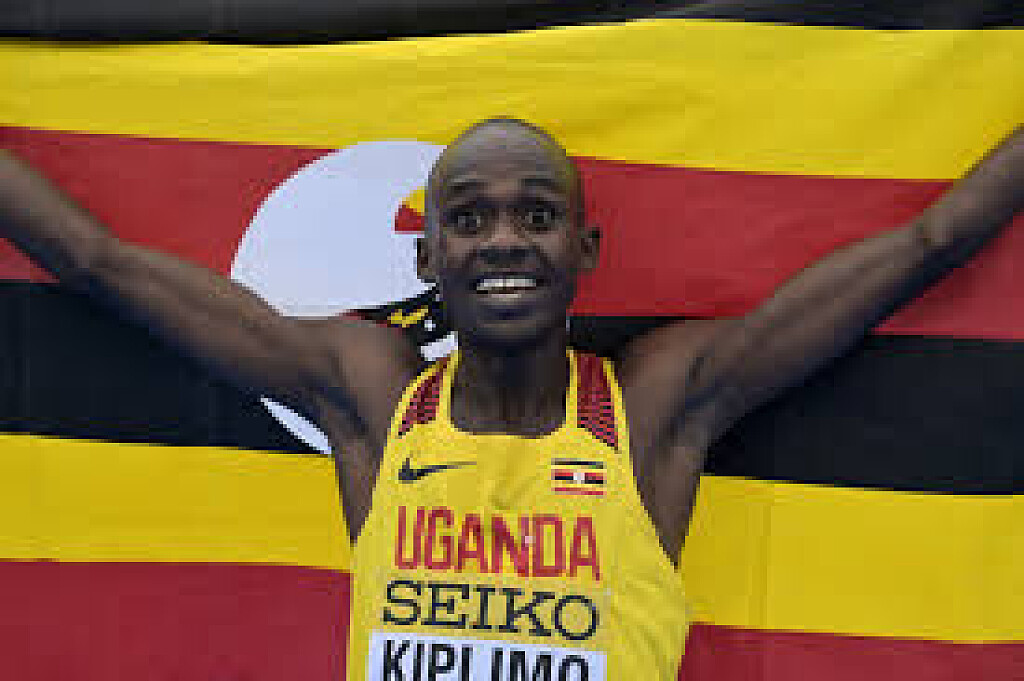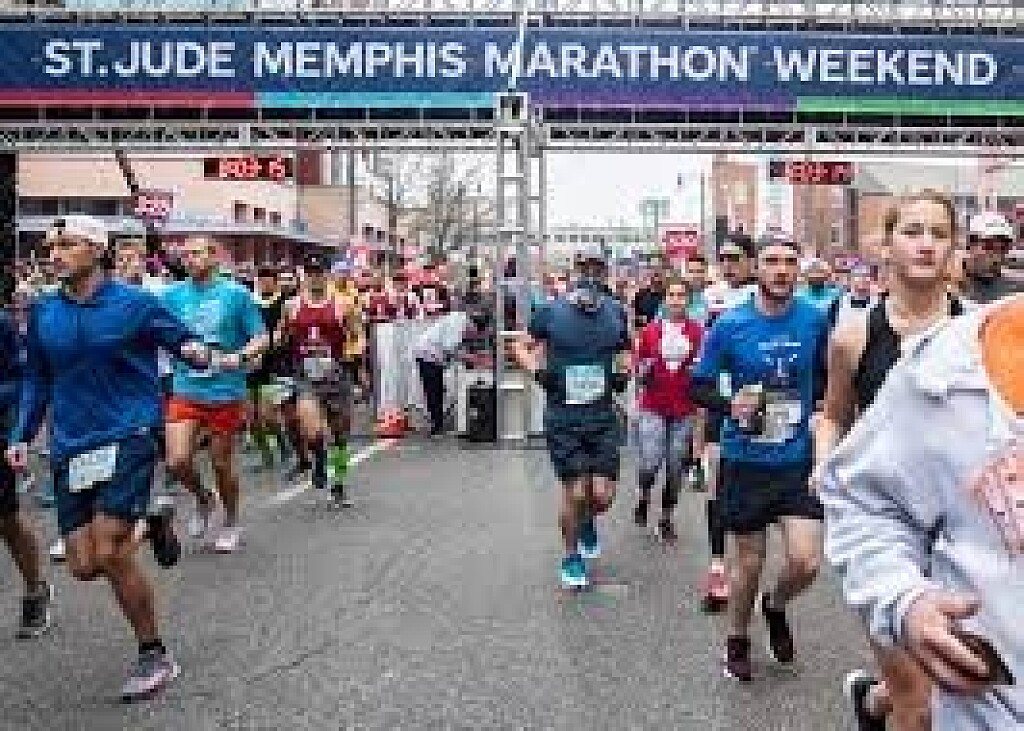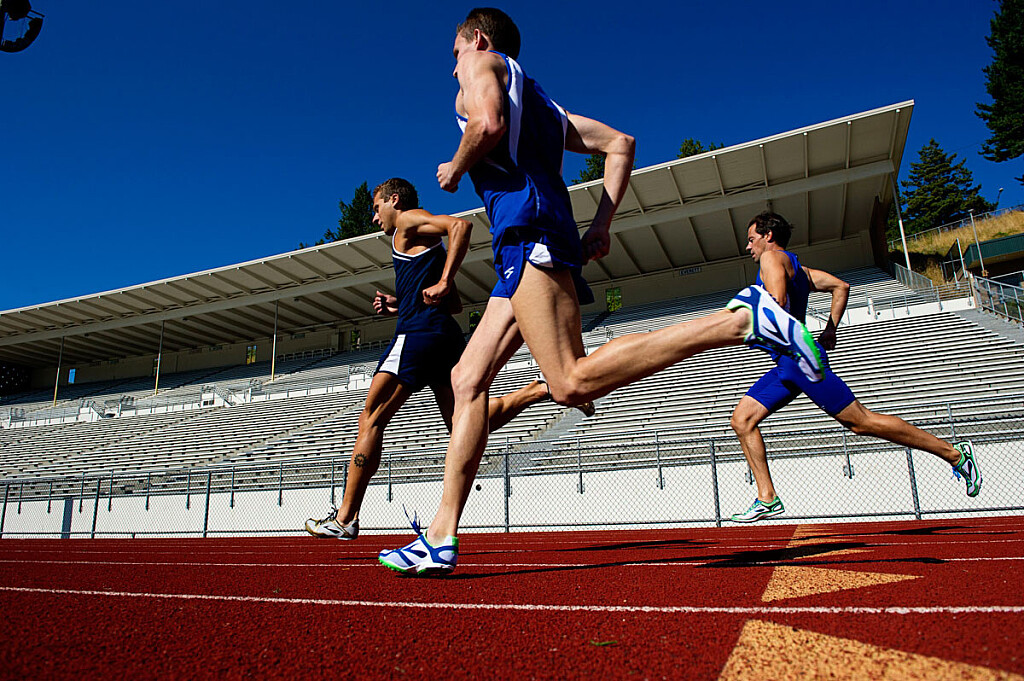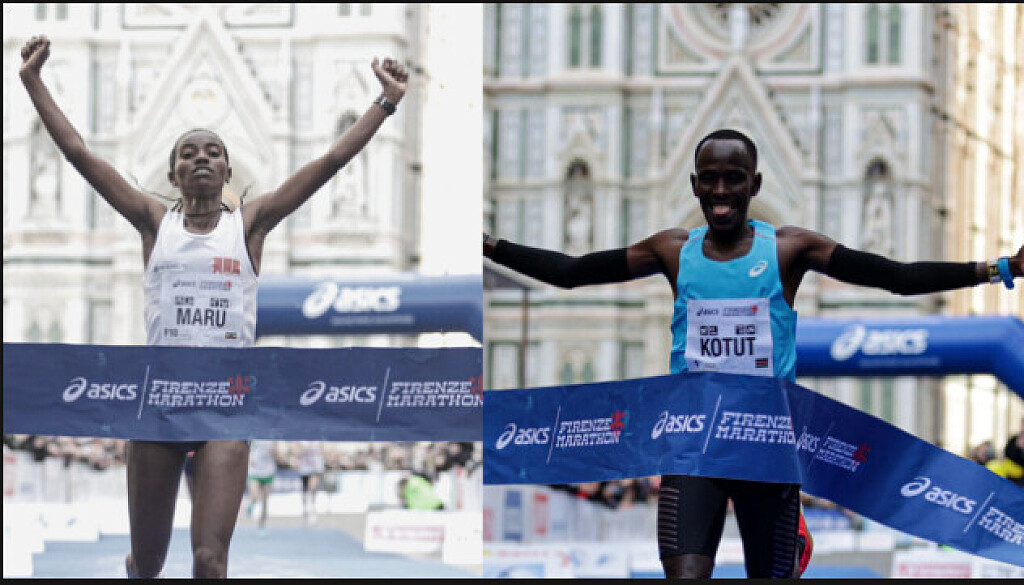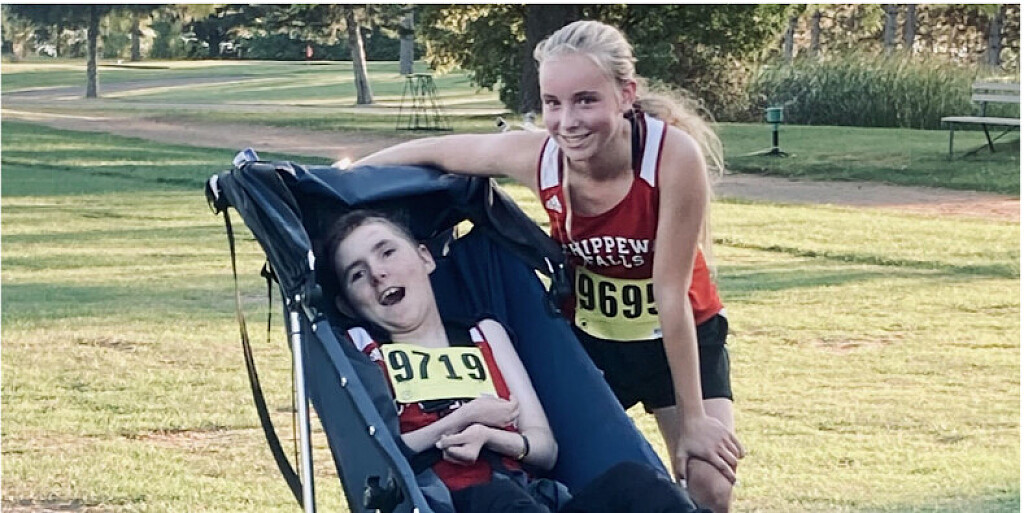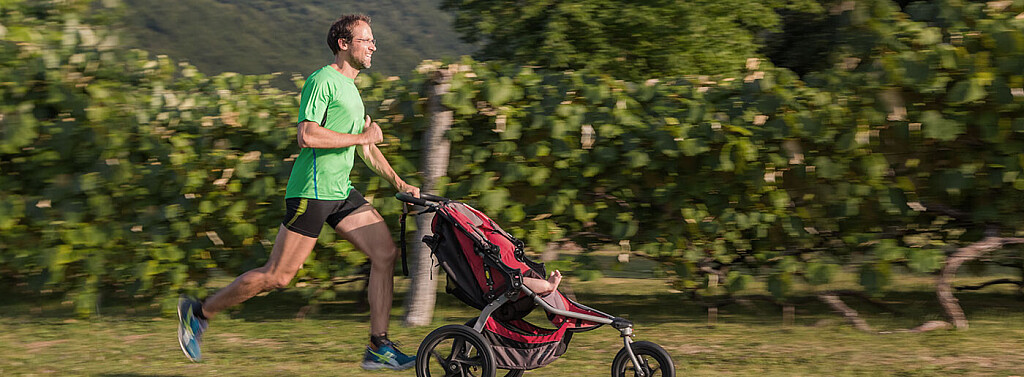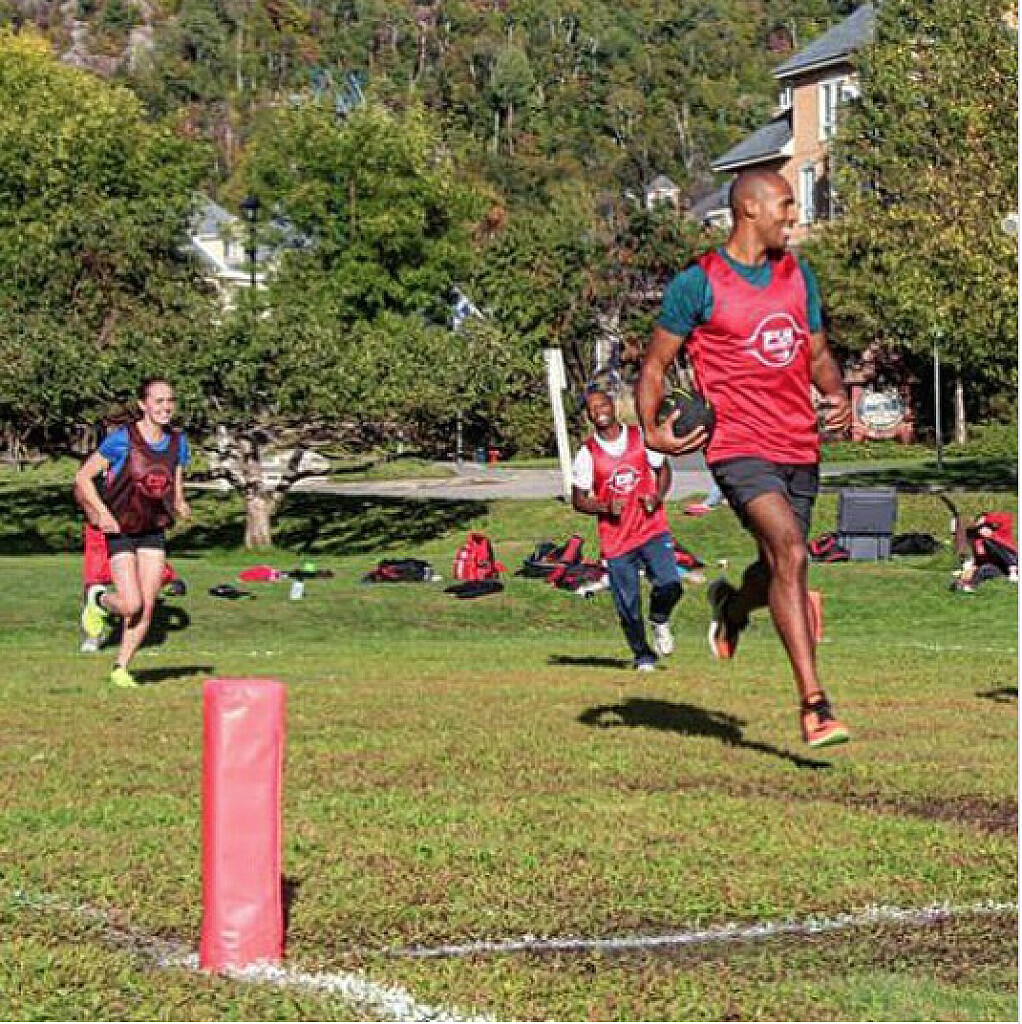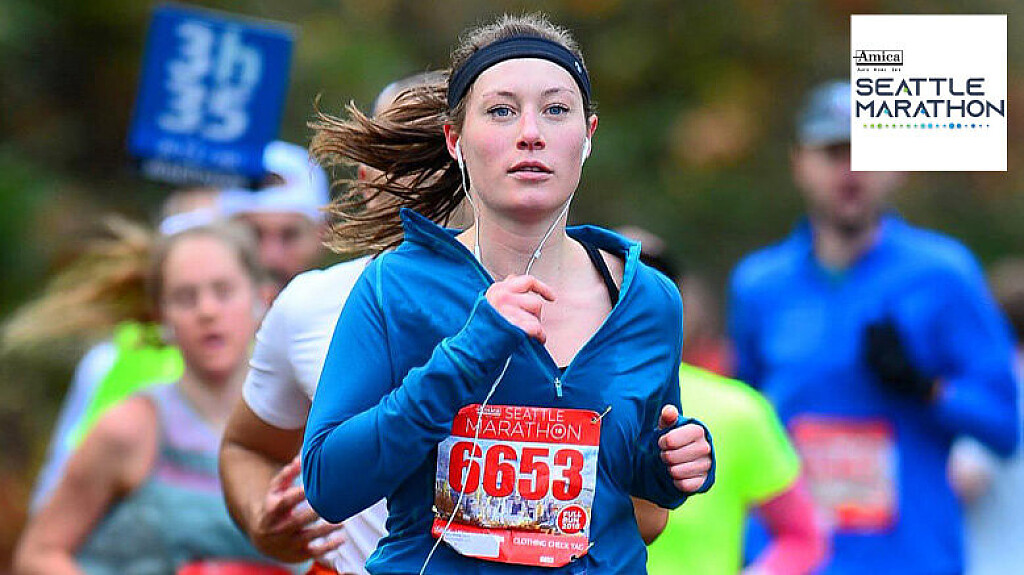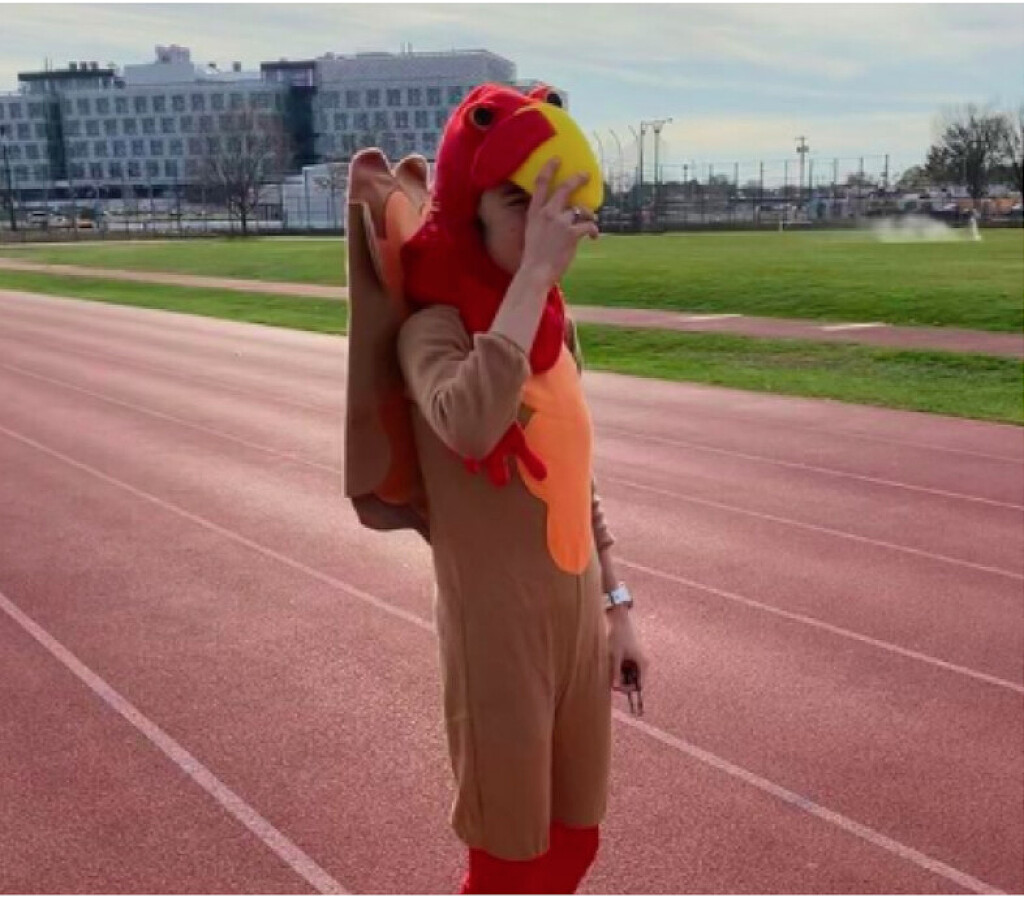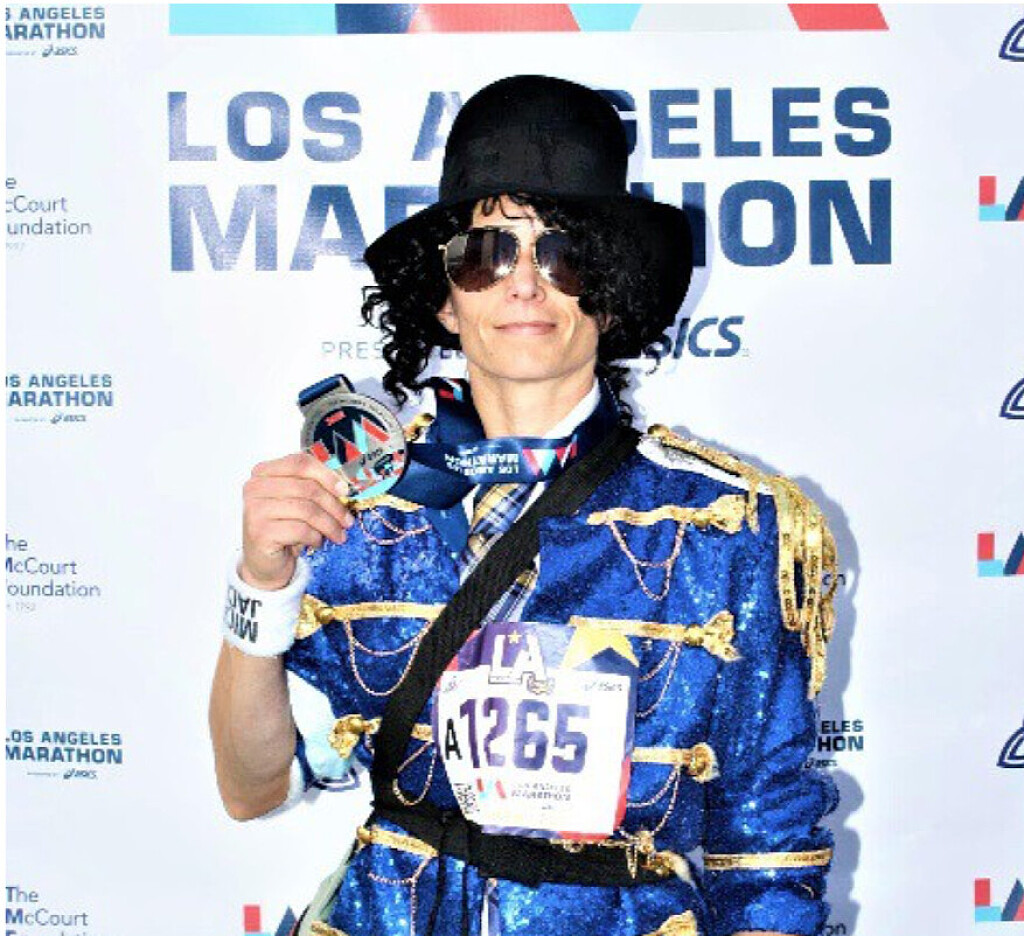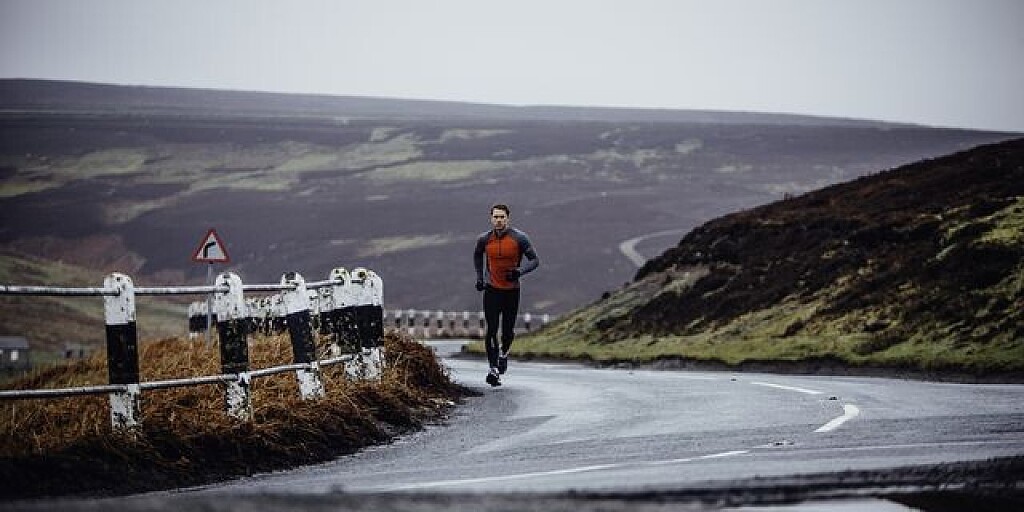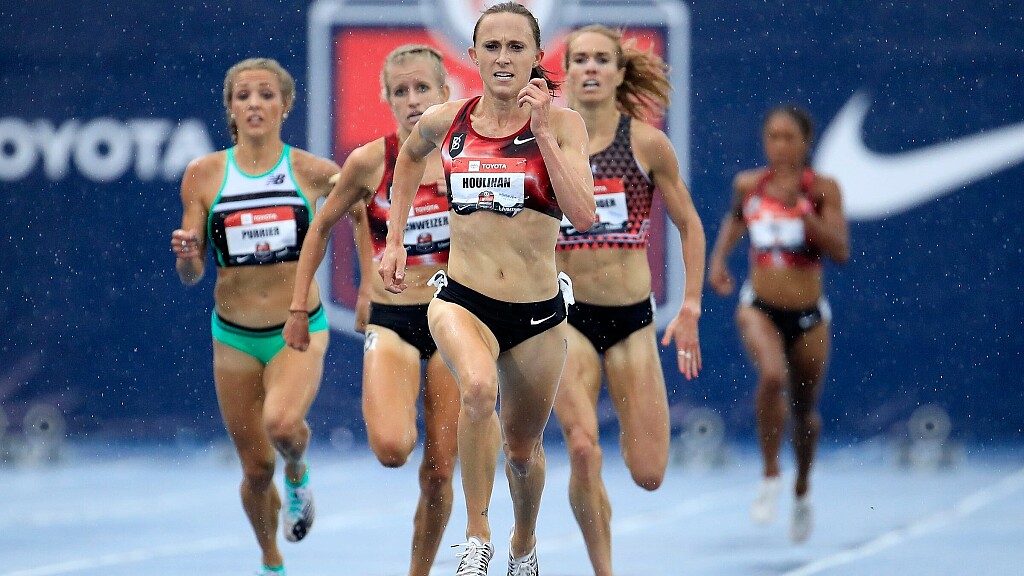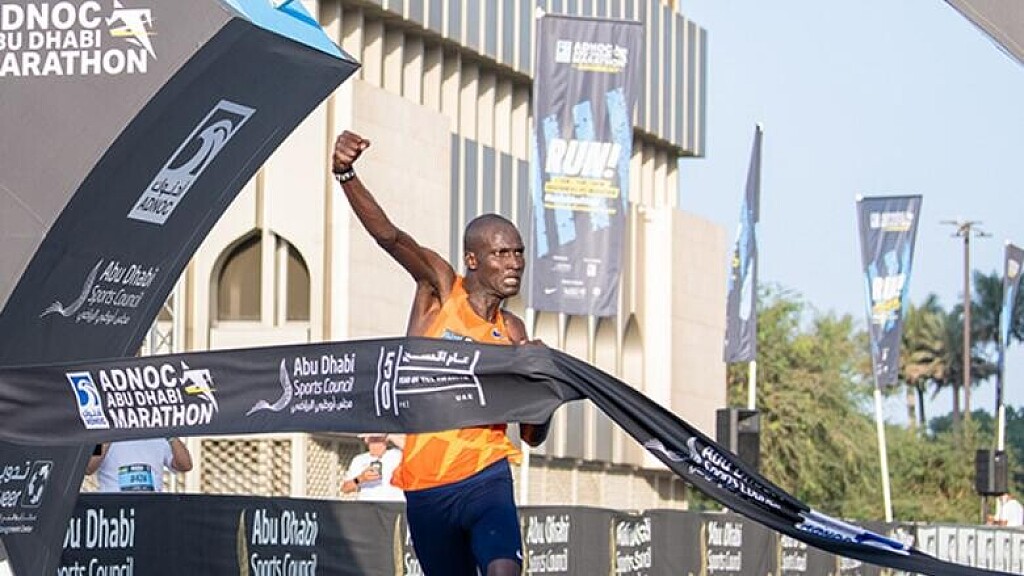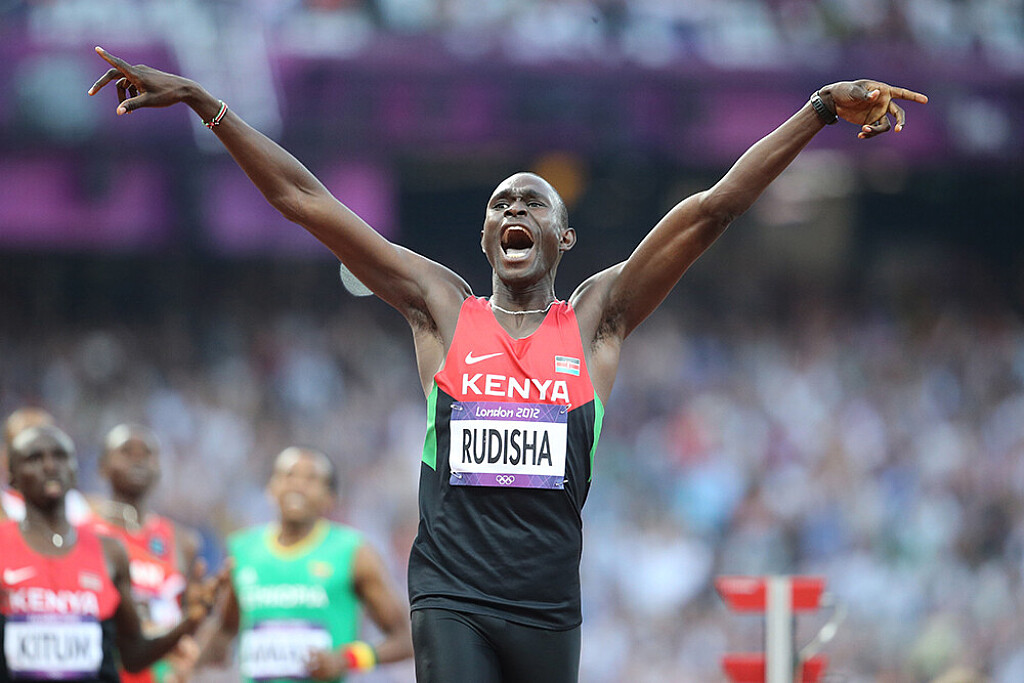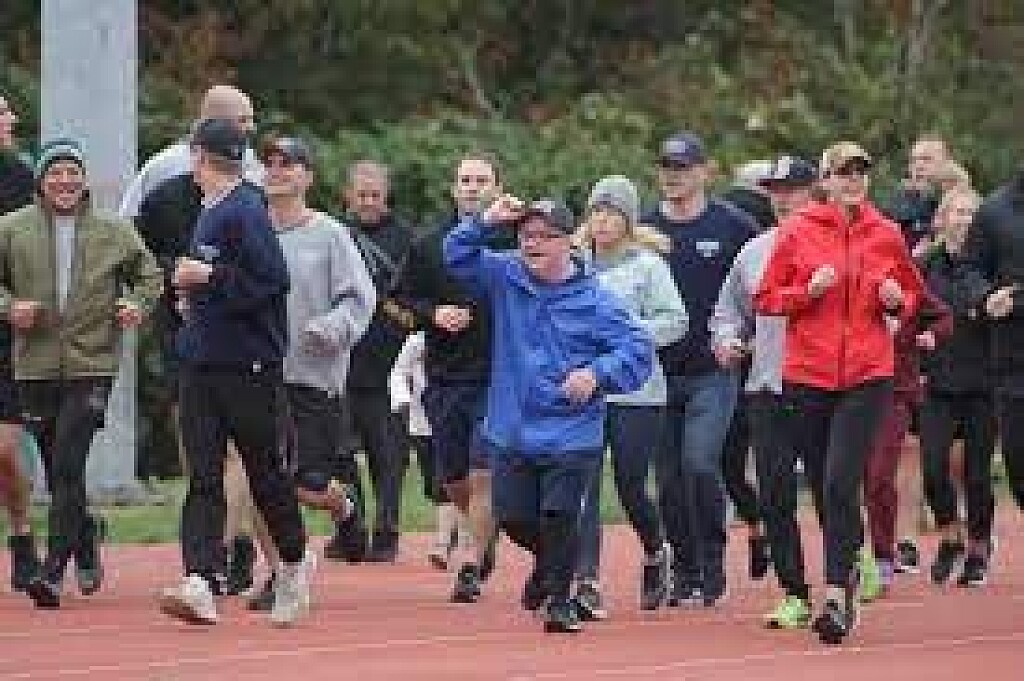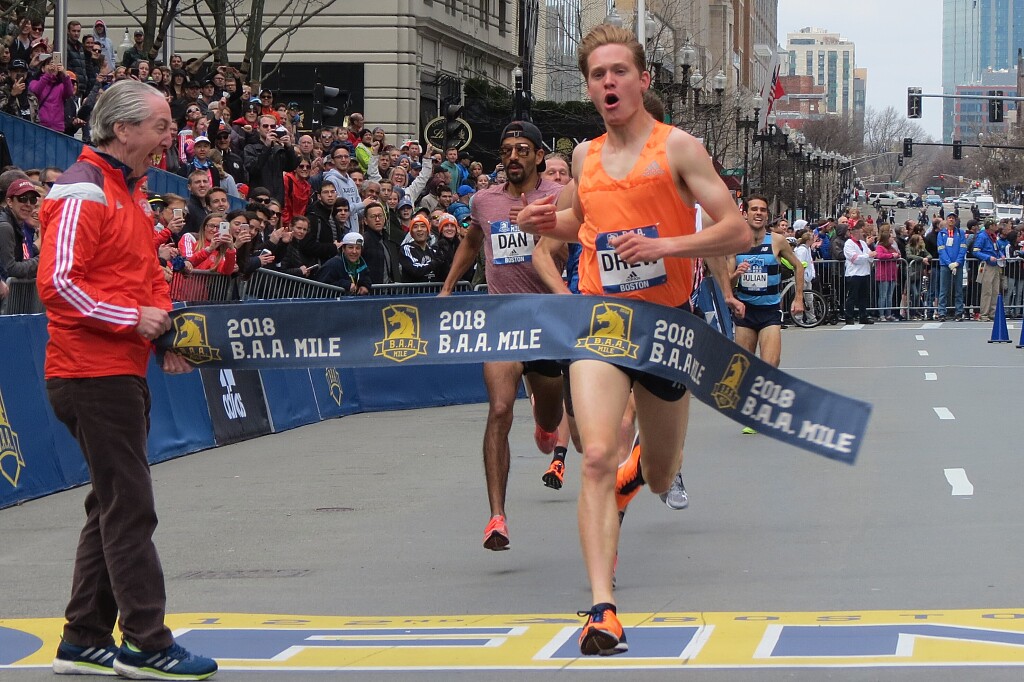Running News Daily
Running News Daily is edited by Bob Anderson. Send your news items to bob@mybestruns.com Advertising opportunities available. Train the Kenyan Way at KATA Kenya and Portugal owned and operated by Bob Anderson. Be sure to catch our movie A Long Run the movie KATA Running Camps and KATA Potato Farms - 31 now open in Kenya! https://kata.ke/
Index to Daily Posts · Sign Up For Updates · Run The World Feed
Cherono, Jelagat dominate Valencia Marathon
In the women's category, Jelagat won her first-ever marathon, clocking 2:19:31 as Ethiopia's Woldu Etagene came second in 2:20:16
The win by Cherono in the Spanish city comes after victories in Chicago and Boston in 2019, Amsterdam Marathon in 2018 and 2017, Honululu in 2017, Czech in 2016 and Sevilla in 2015.
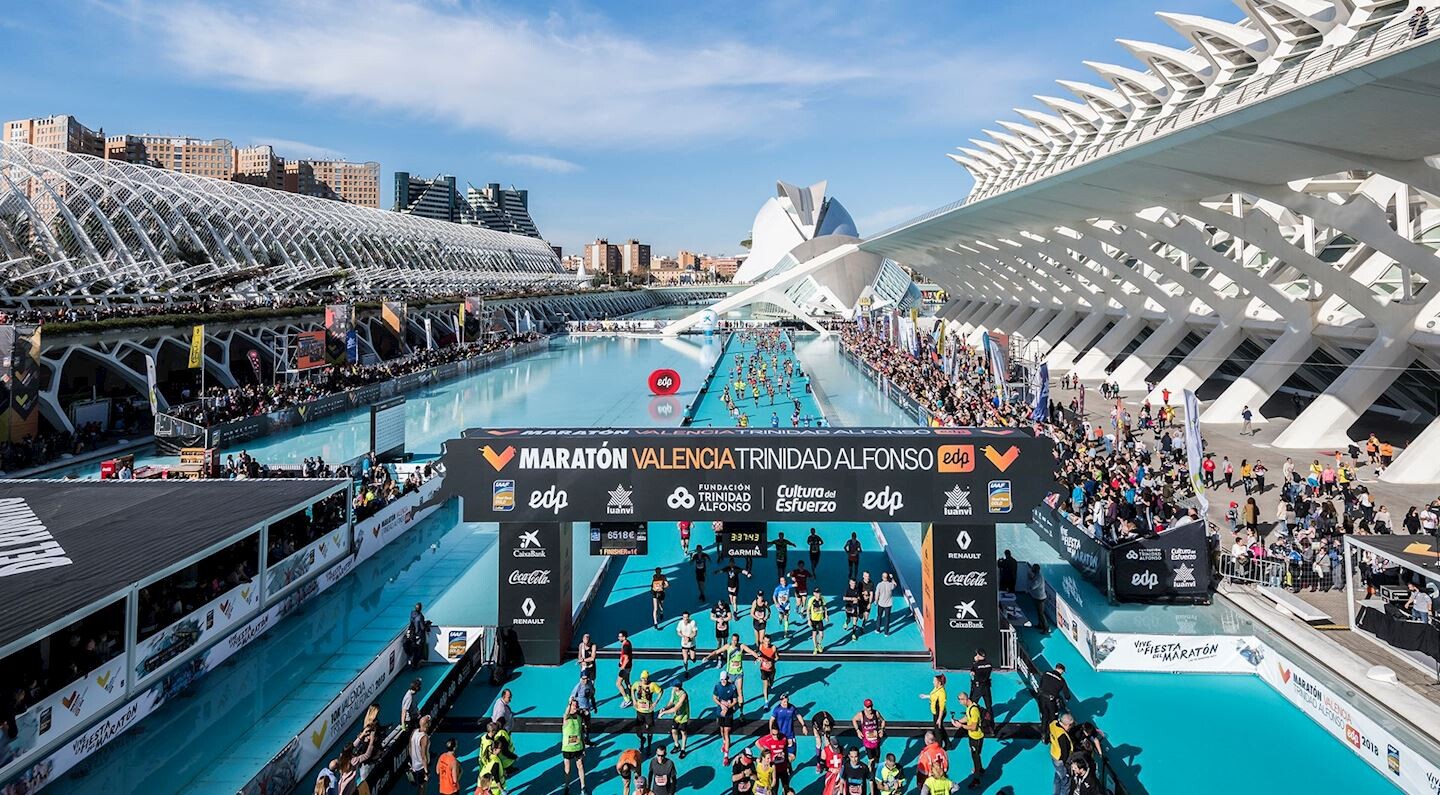
•Cherono clocked 2:05:12 to fend off Ethiopian Deso Chalu (2:05:16) in a sprint finish while Philemon Kacheran rounded off the podium positions by posting 2:05:19.

Lawrence Cherono and Nancy Jelagat secured a Kenyan double at the Valencia Marathon on Sunday.
Cherono clocked 2:05:12 to fend off Ethiopian Deso Chalu (2:05:16) in a sprint finish while Philemon Kacheran rounded off the podium positions by posting 2:05:19. Former winner Geoffrey Kamworor finished fourth in 2:05:23.
The win by Cherono in the Spanish city comes after victories in Chicago and Boston in 2019, Amsterdam Marathon in 2018 and 2017, Honululu in 2017, Czech in 2016 and Sevilla in 2015.
In the women's category, Jelagat won her first-ever marathon, clocking 2:19:31 as Ethiopia's Woldu Etagene came second in 2:20:16 with compatriots Degefa Beyenu (2:23:04) and Tusa Rahma (2:23:20) finishing third and fourth respectively.
Fionnuala McCormack of Ireland completed the top five positions in 2:23:58
(12/05/2021) ⚡AMP
Githae wins final edition of Fukuoka Marathon
Michael Githae was victorious at the 75th and final edition of Fukuoka International Marathon on Sunday (5), winning the World Athletics Elite Label road race in 2:07:51.
Githae, who runs for Suzuki track team, improved his previous best of 2:08:17, which he set when finishing fourth at last year’s Fukuoka Marathon. Japan’s Kyohei Hosoya finished second, 25 seconds adrift of Githae.
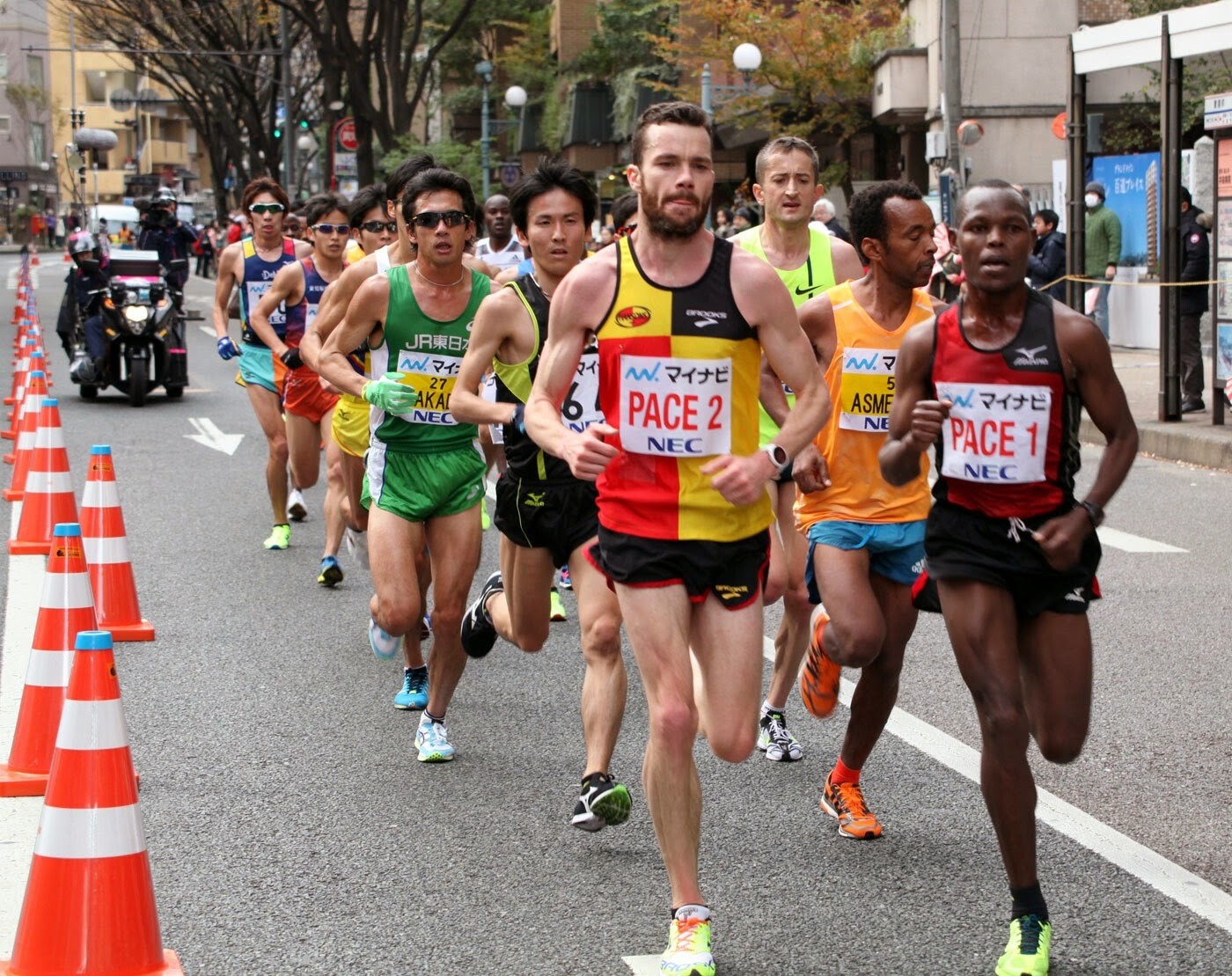
The pacers, led by 2012 Olympian Yuki Sato, directed the huge lead pack through 5km (14:47), 10km (29:39), 15km (44:30) and 20km (59:24) in what turned out to be something of a race of attrition. Yuta Shitara was one of the athletes to fall out of contention before the half-way stage; the former national marathon record-holder dropped out at 20km.
The half-way point was reached in 1:02:41, meaning an attack on the 2:05:18 course record was not out of the question. Simon Kariuki and Charles Wanjiku kept the pace going at the start of the second half, and 30km was reached in 1:29:08. But the pacemakers dropped out soon after, and the pace dramatically slowed down.
Nevertheless, the pack became strung out to almost a single file, and by 34km just Githae, James Rungaru, Hosoya and Ryu Takaku remained in contention. Soon after, Githae surged and Hosoya made a valiant effort to stay close but Githae gradually pulled away to win by 25 seconds in 2:07:51.
In third, Rungaru set a PB of 2:08:25, while fourth-placed Shohei Otsuka and Ryu Takaku and Daisuke Uekado in fifth and sixth respectively were just outside their PBs. Yuki Kawauchi, running his 12th Fukuoka Marathon, fittingly finished 12th in 2:11:33. He is planning on running the Hofu Marathon in two weeks’ time.
Looking back at Fukuoka's history
The Fukuoka International Marathon – which was awarded a World Athletics Heritage Plaque in 2019 – started in 1947 and is the second oldest marathon in Japan behind the now defunct Lake Biwa Marathon.
In its 75-year history, the world record was broken twice there – first in 1967 when Derek Clayton became the first runner to break 2:10 with 2:09:37, and then in 1981 when fellow Australian Rob de Castella ran 2:08:18.
De Castella isn’t the only global marathon champion to have contested the race over the years. Frank Shorter, the 1972 Olympic champion, notched up four consecutive Fukuoka Marathon victories between 1971 and 1974. 2000 Olympic champion Gezahegn Abera won in 1999, 2001 and 2002, while 1996 Olympic champion Josiah Thugwane won in 1997. The late Samuel Wanjiru, winner of the 2008 Olympic title, made a remarkable marathon debut in Fukuoka in 2007, winning in 2:06:39. And two-time world champion Jaoud Gharib won in 2010.
Numerous world record-holders have also competed in Fukuoka, including Haile Gebrselassie (winner in 2006), Belayneh Dinsamo (1990 winner) and Patrick Makau (2014 and 2015 champion).
Japanese runners have also enjoyed moments of victory in Fukuoka. Toshihiko Seko won four times (1978-1980 and 1983), and Takeyuki Nakayama won twice (1984 and 1987). During his 1987 run, Nakayama was on world record pace through 20km (58:37) and 35km until a heavy downpour in the closing stages slowed him down, and he eventually finished in 2:08:18.
When asked about the end of the Fukuoka Marathon, four-time winner Seko said: “It is like part of my history is being erased.”
Japan Running News, a leading authority on the sport in Japan, has produced a docu-film on the Fukuoka Marathon, entitled ‘Inside the Outside – When the World Came to Fukuoka’.
Leading results
1 Michael Githae (KEN) 2:07:512 Kyohei Hosoya (JPN) 2:08:163 James Rungaru (KEN) 2:08:254 Shohei Otsuka (JPN) 2:08:335 Ryu Takaku (JPN) 2:08:386 Daisuke Uekado (JPN) 2:08:567 Kohei Futaoka (JPN) 2:09:148 Masaya Taguchi (JPN) 2:09:359 Toshiki Sadakata (JPN) 2:10:3110 Takuma Kumagai (JPN) 2:10:4111 Ryota Komori (JPN) 2:11:3212 Yuki Kawauchi (JPN) 2:11:33
(12/05/2021) ⚡AMPFormer World Athletics president Lamine Diack has died
The former head of global athletics Lamine Diack, who presided over the sport from 1999 to 2015 but was later convicted for corruption, has died aged 88, his family told AFP.
The Senegalese was head of the International Association of Athletics Federations (IAAF), now renamed World Athletics, the world governing body of track and field, the cornerstone of Olympic sport.
Diack, who was also a powerful figure at the International Olympic Committee (IOC), was found guilty of corruption by a French court in 2020 for covering up Russian doping cases in exchange for millions of dollars of bribes.
He was sentenced to four years in prison, of which two were suspended, and fined 500,000 euros ($560,000).
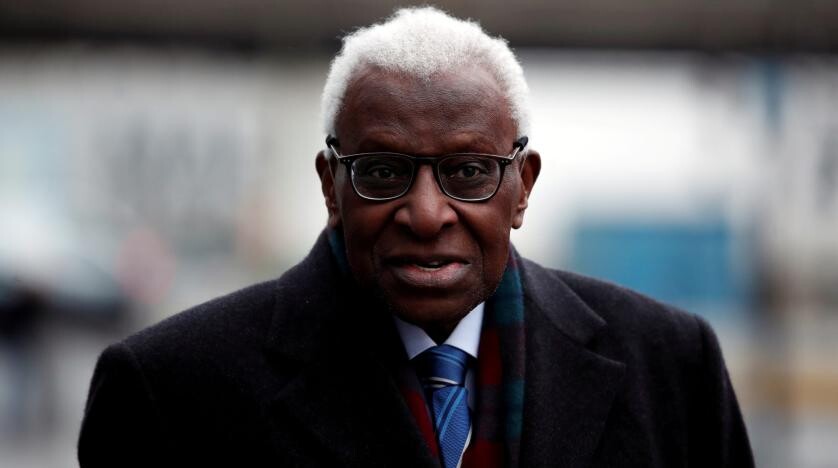
The trial in Paris heard that the money was paid in return for "full protection", to allow Russian athletes who should have been banned to escape punishment.
Twenty-three Russian athletes had their doping offences hushed up so they could compete at the 2012 London Olympics and 2013 world championships in Moscow.
Because of his age, Diack, a former long jumper, football coach and then businessman and politician who was decorated in the Kremlin in late 2011, was spared jail.
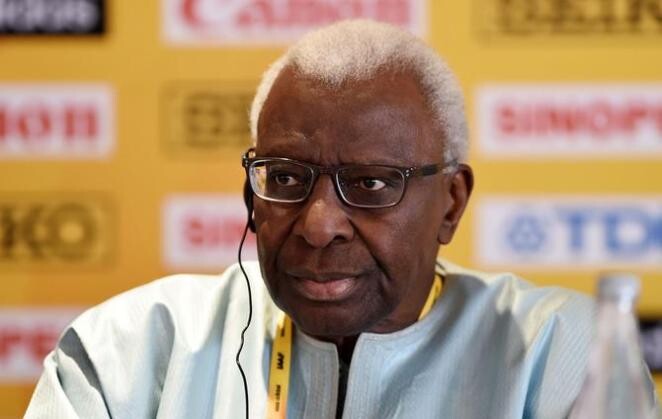
His son Papa Massata Diack, a former marketing executive for the IAAF, was tried in absentia because Senegal refused to extradite him. He was sentenced to five years in prison, fined one million euros and banned from all sport for 10 years.
- Olympic figure -
Lamine Diack, a member of the IOC from 1999 to 2013 and then an honorary member from 2014-15, was embroiled in another corruption affair linked to the awarding of the 2016 Rio Olympics and the Tokyo Olympics, that were postponed because of the pandemic but took place this year.
Despite not being jailed over the Russian corruption, he was held in France because of his indictment in the case involving suspected Olympic vote-buying. His passport had been confiscated.
But a judge soon lifted the ban on Diack leaving France, provided he paid a bond and that he continued to respond to summonses.
Senegalese Premier League side Jaraaf de Dakar, where Diack was club president, said it had sold part of its headquarters property to pay the bail.
Diack was replaced by Britain's Sebastian Coe in August 2015 as head of world athletics. The disgraced Senegalese had resigned from the IOC in the same year.
Coe had been one of Diack's vice-presidents at the then-IAAF between 2011 and 2014.
Born in Dakar on June 7, 1933, Diack started his sporting career as a long jumper, winning the French athletics championships title in 1958. A knee injury prevented him from competing in the 1960 Olympics, however.
He was also a footballer and was technical director of Senegal's national team from 1966 to 1969.
Diack also became head of Senegal's Olympic Committee, mayor of Dakar, a lawmaker and was head of the West African country's national water company before becoming the first non-European to take over as head of the IAAF following the sudden death of its previous president Primo Nebiolo.
The African power-broker said he had played a key role in globalising athletics and his time at the top certainly coincided with a huge boom in its revenues.
Diack was in charge as the sport grew and developed beyond its European and North American core.
He oversaw its move from amateur to professional status, ensured complete equality in events and prize money for men and women, and established international competition circuits for athletes in all the disciplines.
But the Senegalese had previous brushes with scandal before the most recent charges.
Diack and Issa Hayatou, acting FIFA president for four months in wake of the 2015 corruption case against Sepp Blatter, both received warnings from the IOC in 2011 over cash payments they received from International Sport and Leisure (ISL), a marketing company whose collapse caused a major scandal for football's governing body.
(12/04/2021) ⚡AMPby AFP
Former Boston Marathon Lawrence Cherono will be leading Kenyan charge in Valencia Marathon
Former Boston Marathon Lawrence Cherono will be leading an elite field during this years’ Valencia Marathon in Spain on Sunday, a race which is considered to have one of the fastest courses.
According to Cherono, he has had good training and is looking forward to running well after a good recovery for the last two months.
He will be aiming to win the race after he was narrowly beaten last year by Evans Chebet who sprinted in the last 50 metres to bag victory in 2:03:00 with Cherono registering his personal best of 2:03:04. Ethiopia’s Birhanu Legese came third after timing 2:03:16.
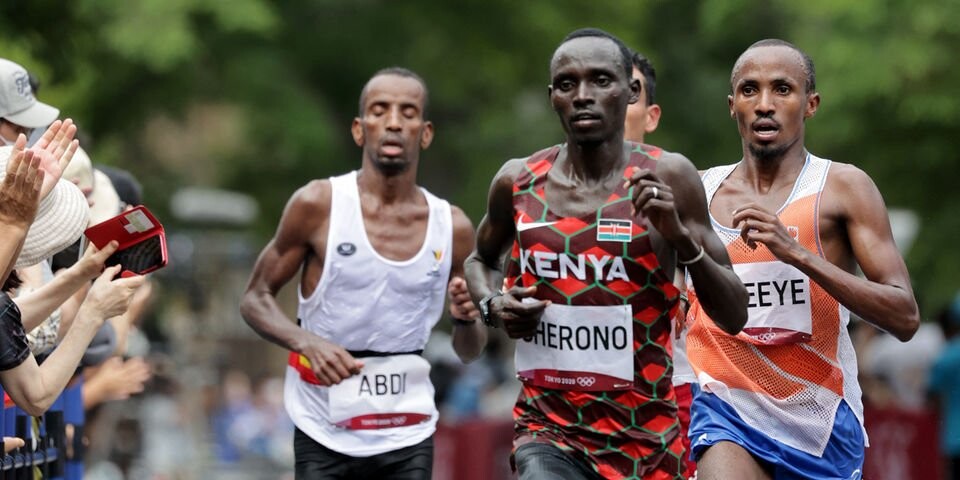
“I have recovered well after participating in the 2020 Olympic Games and went straight to camp to prepare for this race. It is competitive but I believe I will be able to run well on Sunday,” said Cherono who did not defend his Chicago and Boston Marathons races this year.
Also in the race is Geoffrey Kamworor who is seeking a comeback after some time out of competition due to an injury he suffered when he was knocked down by a speeding motorcycle in Eldoret, Uasin Gishu County in June last year.
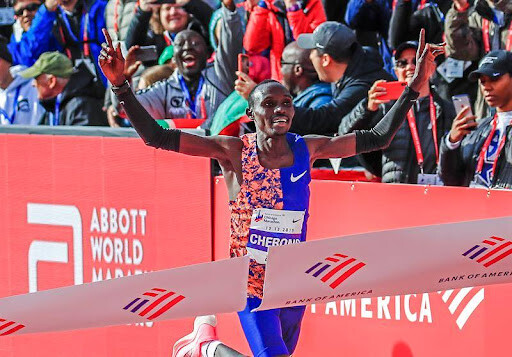
Dr. Victor Bargoria who treated Kamworor then told Nation Sport that he had fractured his tibia and had bruises in his head, something that forced him to take a break from competition.
Kamworor also missed the Olympic Games despite making the team in the 10,000m race after he was advised by his doctor to recover fully before competing again.
The two-time World Half Marathon champion who is fondly referred to as ‘man of all surfaces’ due to his good performance in track, cross country, road races and marathon will be looking to pull another surprise when he competes in Spain.
Cherono, who has the fastest time of 2:03:04 in the elite field will be battling it out with Ethiopians Herpasa Negasa (2:03:40), Kinde Atanaw (2:03:51) and Abebe Negewo (2:04:51), Chalu Deso (2:04:53).
Also in the lineup are Kenyans Philemon Kacheran (2:06:05) who also trains with Kamworor in Kaptagat, Michael Kunyuga (2:06:43), Alex Kibet (2:07:09), Bethwell Kipkemboi (2:07:41) and Japheth Kosgei (2:08:08).
Turkey's Polat Kemboi (2:08:14), Belgium’s Koel Naert (2:07:39), Eritrea’s Goitom Kifle (2:08:09) are the other notable competitors.
In the women's category, 2018 Prague Marathon champion Bornes Chepkirui will be battling it out with other athletes notably Uganda’s record-holder Juliet Chekwel and three-time Rome Marathon champion Rahma Tusa of Ethiopia.
Dorcas Tuitoek, who will be debuting during the race will also be looking to shine having trained with Olympics marathon champion Peres Jepchirchir in Kapsabet, Nandi County.
(12/04/2021) ⚡AMPby Bernard Rotich
VALENCIA TRINIDAD ALFONSO
The Trinidad Alfonso EDP Valencia Marathon is held annually in the historic city of Valencia which, with its entirely flat circuit and perfect November temperature, averaging between 12-17 degrees, represents the ideal setting for hosting such a long-distance sporting challenge. This, coupled with the most incomparable of settings, makes the Valencia Marathon, Valencia, one of the most important events in...
more...Kamworor aims to conquer Valencia
The Valencia Marathon Trinidad Alfonso EDP, a World Athletics Elite Platinum Label event, will return on Sunday (5) and as usual, the organizers have brought together a mouth-watering line-up, headed by Kenya’s Geoffrey Kamworor.
The city of Valencia has witnessed a number of world records in recent years – at 5000m, 10,000m, 10km, and the half marathon – and organizers aim for Valencia to be the epicenter of the running world again this Sunday.
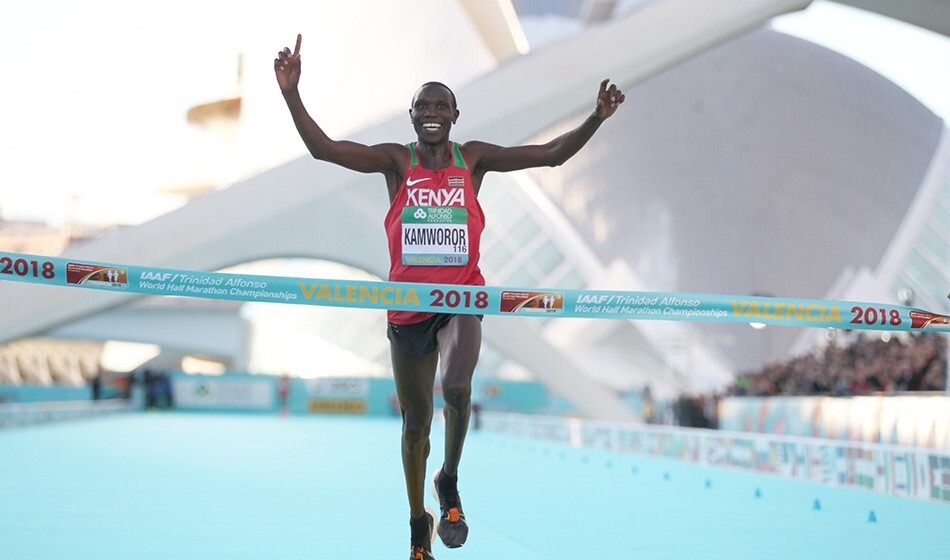
Undoubtedly, all eyes are on the three-time world half marathon champion Kamworor, who turned 29 last month. The Kenyan ace is now fully recovered from the injury which prevented him from competing at the Tokyo Olympics and his last outing was a promising 27:01.06 10,000m at the altitude of Nairobi during the Kenyan trials before he got injured. Once recovered, the two-time world cross country champion focused exclusively on his build-up for Valencia, where he should far improve his relatively modest 2:06:12 lifetime best set on his debut in Berlin back in 2012.
Kamworor has great memories of Valencia, as he became a commanding world half marathon champion in the city back in 2018. “Valencia is the city of running, the atmosphere is special,” he said. “I managed to be world champion here, I know the circuit is incredibly fast and definitely it’s a great opportunity to record a quick time.”
Reflecting after the injury, Kamworor's coach, Patrick Sang, said: “To me, Geoffrey came back stronger physically but also mentally. He is a more professional athlete now. I do not set any target for athletes like Geoffrey, or any other athlete actually, because setting targets is putting pressure. I believe that serious athletes like them, they have the willingness to give their best and that’s always what we should ask from them."
The course record is the goal
A large group of pacemakers – headed by Alexander Mutiso, Bernard Ngeno, and Victor Chumo – will target a steady 2:55 pace to go through the half marathon in 1:01:30, on schedule to break the course record of 2:03:00 set last year by Kenya’s Evans Chebet.
Kenya’s Lawrence Cherono should be one of Kamworor’s stiffest opponents. The 33-year-old was runner-up last year in a career best of 2:03:04 and finished just outside the medals at the Tokyo Olympics with a fourth-place to his credit.
The Ethiopian contingent is also strong as it comprises four athletes to have dipped under the 2:05:00 barrier during their careers: Herpasa Negasa, Kinde Atanaw, Abebe Negewo and Chalu Desu. The former boasts a 2:03:40 PB set in Dubai in 2019 but he has barely competed since then, while Atanaw took the victory in Valencia in 2019 thanks to a 2:03:51 performance, although he could not go faster than 2:11:00 in his only appearance so far this season in Prague.
As for Desu, he finished sixth last year and will be looking to bounce back after a below-par outing in Chicago two months ago, while Negewo, eighth in 2020, will be making his debut at any distance this year. The other sub-2:05 athlete on show is Tanzania’s Gabriel Geay, who ran 2:04:55 in Milan last May and is fresh from a season’s best of 1:00:16 at the Valencia half marathon six weeks ago. Watch out too for Ethiopian debutante Andamlak Belihu, a 58:54 half marathon performer.
Germany’s Amanal Petros, who has a lifetime best of 2:07:18, recently set a national half-marathon record of 1:00:09, also in Valencia, and Norway’s former European record-holder (2:05:48) Sondre Moen, who ran 1:00:15 on that occasion, also promises a fast time over the classic distance on Sunday. Spain’s Hamid Ben Daoud will attack the Spanish record of 2:06:52 following his half marathon PB of 1:01:05 here.
Wide open women’s contest
The women’s cast is led by Ethiopia’s Guteni Shone, holder of a career best of 2:20:11 set in Dubai a couple of years ago, while her season’s best is 2:21:46 to finish runner-up in Prague in May. The 30-year-old will be joined by her compatriots Azmera Gebru, who races her second marathon this year after clocking 2:22:58 in Tokyo in March; Bedatu Hirpa, owner of an identical time in Prague earlier this year; and Rahma Tusa, whose PB stands at 2:23:46.
The Kenyan squad includes 2:21:26 athlete Bornes Kitur, who ran barely six weeks ago in Rotterdam and will be eager to bounce back from her 2:30:41 clocking there, plus debutante Dorcas Tuitoek, a 1:06:33 half marathon specialist, and Nancy Jelagat, holder of a quick 1:05:21 clocking in the shorter distance.
Ugandan record-holder Juliet Chekwel won the Seville Marathon last year in a career best of 2:23:13 and should be a dangerous outsider on Sunday. While the course record of 2:17:16 set by Kenya’s Olympic champion Peres Jepchirchir last year doesn’t seem to be in jeopardy, organisers have planned a sub-70-minute split for the half marathon in the hunt for a sub-2:20 performance.
The weather looks set to be sunny but very windy, with the thermometer reaching 10-12ºC by the time of the event.
(12/04/2021) ⚡AMPThe Importance of Not Getting Too Cold During Winter Runs
There is a man in my neighborhood in Boulder who walks his two yellow labs every morning. No big deal, right? That's just good dog ownership. But here's the thing that makes him the talk of the cul de sac: no matter what, he's wearing shorts. Whether it's rain or shine or snow or probably zombie apocalypse, he lets his shins breathe, as if he's a nudist from ankle to knee.
Apparently, that is a thing, as chronicled by the Wall Street Journal. I imagine that most of us look at always-shorts people and chuckle a bit, wondering what their deal is. Whatever their motivation, that's their prerogative-they are probably not risking much other than some discomfort. What's a much more worrying thing to me is seeing runners pass by our driveway seemingly underdressed.

It'll be 25 degrees F and windy, and someone passes by in short shorts. Or at 0 degrees F, they'll be in light tights. In training logs, I'll see people write comments like this: "Was freezing cold on my run today and couldn't warm up," or "Didn't feel my feet during the entire run."
Often, it's said as if it's a point of pride to demonstrate toughness in northern climates, like they're auditioning as an extra for the Game of Thrones finale. And sometimes, it coincides with a bad workout or an Achilles or foot injury appearing shortly thereafter.
So this article has a simple message. You can wear whatever you want when you run, but letting your body get too cold may increase injury risk and reduce performance, in addition to being way less cozy. Grab some hot cocoa, and we will go over the basics.
Cold muscles may have reduced maximal performance.
Go to run an all-out interval or race with cold legs and you might find yourself paraphrasing an old Seinfeld line to explain your performance: "If you think that's me, then you're under a complete misapprehension." A 2014 study in the Journal of Sports Medicine summarized that moderate cooling may influence maximal muscle performance. That study examined the shrinkage effect by having 16 participants submerge their lower legs in 10-degree-Celsius water for 20 minutes. The shin muscle generated reduced isometric maximum force and the calf muscle showed signs of fatigue. That study had a major caveat that activities at sub-maximal effort (like long-distance running) were not affected, but couched that finding with the idea that the cooling might not have been severe enough.
Other studies dig into the effect of cooling on muscle performance. A 2008 review article in Medicine and Sports Sciences summarized the slowed enzymatic processes and nerve conduction as temperatures drop, along with a likely reduction in local muscular endurance. In other words, a cold calf muscle may not operate as efficiently as a warm one, but where exactly that temperature threshold lies is up for debate. Meanwhile, reduced efficiency of motion was addressed by a 2004 study in the Gait & Posture journal (a fun drinking game would be to make up one journal name a week and see if you can guess it). Using force plates and other gait-measurement tools, that study found that extra-cold feet and reduced plantar sensation changed ground contact and push off.
And there are dozens more similar studies. The basic takeaway is that when local temperature in leg muscles drops below a certain point, max muscle power decreases, too, possibly due to nervous system responses, with too-low core temperature causing similar issues. The same may apply to biomechanical efficiency, which could impact running endurance and speed, though there is uncertainty and individual variability.
Cold muscles and joints may be at higher risk of injury.
This point gets back to the effects on the nervous system and proprioception (awareness of body position and movement). A 2002 article in the Journal of Applied Physiology found that repetitive work in the cold causes changes in electromyogram readings, indicative of increased fatigue. That's a fancy way of saying there are less efficient muscle contractions, which the study concludes creates a higher risk for overuse injuries. You could imagine a similar conclusion from the cold-feet study above, which found changed gait patterns (though the authors did not draw that conclusion). Other studies connect cold with joint stiffness that could impact range of motion. A 2014 master's thesis put it all together and found higher rates of injury per run in the winter than in the summer, a finding I have seen anecdotally in athletes over time, though that could be attributable to the slippery surfaces.
All of this comes with a big, steaming pile of disclaimers. First, the body generates a heck of a lot of heat during running. Core temperature is unlikely to drop far unless severely underdressed, but local temperature may be at risk depending on the intensity of activity and the conditions.
Second, cool temperatures are optimal for performance, as demonstrated by a real-world study in PLoS One that looked at millions of marathon results and found around 50 degrees F or a bit under to be a sweet spot. However, if some is good, more is not always better. In the rain, cold and wind of the 2018 Boston Marathon, the winning men's time was 2:16 and winning women's time was just under 2:40. In the 90-plus-degree day in 2012, the winning times were 2:12 and just under 2:32. That's just a snapshot with no statistical significance, but countless athletes complained of the cold sapping their energy as much as the headwind.
Third, everyone is immensely different in how they handle environmental conditions. Ignore this article if cold isn't a problem for you. Heck, you might have so much leg hair that it's like you are perpetually wrapped in a fuzzy blanket. Or you might have been born in Canada. Or both (that Venn Diagram probably has a lot of overlap).
No matter what, we can agree that being too cold is bad for performance and injuries, though how much work the word "too" is doing in that statement varies a lot. At the very least, you don't want frostbite. So how should you dress?
Ideally, you start the run bundled up so that you can raise peripheral temperature, followed by stripping down as needed after the body generates enough heat.
That mid-run striptease might not be possible for you, in which case it may be best to make sure your legs are warm, more than worrying about your upper body. Core temperature will increase in most conditions, so that puffy jacket can probably stay at home. But since we're worried about local temperature of the feet, ankles, shins, calves, knees and quads, it may be helpful to ensure that they are properly layered. Some essentials:
Good, preferably water-resistant socks. Winter socks can prevent some of the loss of feeling that may be associated with reduced efficiency.
Flexible running tights. They can serve as a base layer in almost all conditions.
A pair of light running pants. When tights aren't enough, the light pants on top can keep you warm down to rather frigid conditions (in my experience, that's down to around 0 degrees F wind chill, though everyone is different). Plus, they are easy and fun to strip if needed.
A pair of heavier running pants. I often recommend these without tights in conditions around freezing or just below. Over tights, they can keep you warm on most any day.
Below 0 degrees F, a thicker pair of tights might be needed for some people, or even more layers. Combine that with good gloves (or your favorite mittens), a hat that covers your ears, a Buff to cover your neck and a jacket, and you can handle most conditions. If possible, warming up your feet and lower legs under hot water or next to a heater pre-run can help avoid local muscle temperature dropping too far.
Or . . . you can just run on the treadmill. But that sounds like it makes for way fewer fun stories about snot icicles.
(12/04/2021) ⚡AMPby Trail Runner Magazine
It's official: Hoka's dropped the One One
When Nicolas Mermoud and Jean-Luc Diard founded Hoka One One in 2009, there was one question on everyone’s lips: how the heck do you pronounce it?! The issue of pronunciation has been a constant query for runners for many years, but it may no longer be a problem: the brand appears to have dropped the confusing bit and has simplified its name to just Hoka.
The original name, which means “fly over earth” in Maori (the language spoken by the Maori people of New Zealand) is pronounced oh-nay oh-nay, not “won won” as most English speakers are wont to say. Now, according to Dan Empfield at slowtwitch.com, the brand is just going by Hoka, or “fly”. As he points out, the brand’s website is no longer hokeoneone.com, but simply hoka.com. As you navigate your way through the site, you’ll notice there is no One One to be found in any of the brand’s messaging.
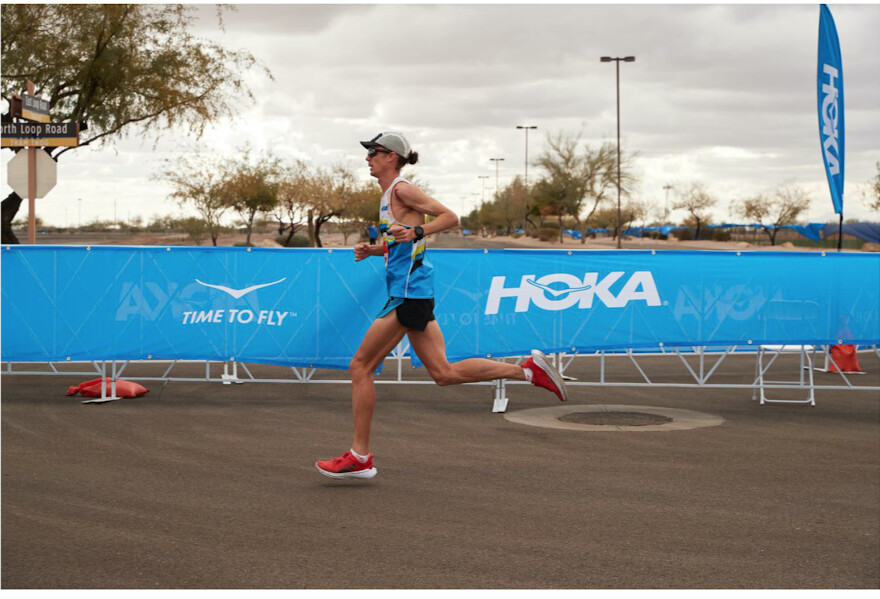
The brand itself has not yet made an official announcement about the change, and so far the new name appears to have largely gone unnoticed — likely because we were all referring to it as Hoka (full stop) already. If you’re a Hoka fan, have no fear — nothing has changed about the brand aside from the name. And if you currently own a pair of One One’s, you’ve officially got a relic.
(12/04/2021) ⚡AMPby Running magazine
Canadian releases Fukuoka Marathon documentary
Brett Larner of the Japan Running News website released his documentary on the iconic Fukuoka International Marathon, which saw its final running (open to locals only) on Dec. 6. Inside the Outside: When the World Came to Fukuoka tells the story of the non-Japanese runners, who, over the race’s long history, turned it into the unofficial world men’s marathon championship.
The film, which is introduced by Larner (and which he produced), does not focus on the 24 Japanese athletes who pushed each other to victory at Fukuoka over the race’s 75-year history, but on the foreigners who came to race there, giving the race an international profile and contributing significantly to its mystique. (Larner himself ran it in 2007 – the year that Sammy Wanjiru of Kenya, who would go on to win Olympic gold the following year, set a course record in his marathon debut.)

The first outsider to be interviewed is Pavel Kantorek of the former Czechoslovakia, who won Fukuoka in 1961. He raced there six times in all and never performed worse than fifth; he also ran in the Olympic marathon in 1956, 1960 and 1964. Kantorek, who was married at the time, comments that he kept getting invited to return because of his exemplary behaviour, unlike some of the runners, who were “more interested in the Japanese geisha than in racing.”
Other notable athletes interviewed include Amby Burfoot, who won the Boston Marathon in 1968 and was fifth at Fukuoka the same year, finishing just shy of the American record; double Olympic medallist Frank Shorter, who won Fukuoka every year from 1971 to 1974, who says “Fukuoka is where I was born as a marathon runner”; and Canada’s own Jerome Drayton, a two-time Olympian who won the Boston Marathon in 1977 and the Fukuoka Marathon in 1969, 1975 and 1976 (and his 1975 winning time, 2:10:09, was the Canadian marathon record for 43 years). Four-time Boston Marathon and NYC Marathon champion Bill Rodgers, who ran in the 1976 Olympics, won Fukuoka in 1977 and was third in 1975.
For many of the early Fukuoka runners, it was the first time they’d been invited to compete at an international marathon, and it became very prestigious on that basis. The meaning the race holds for them is obvious in their words, many of which were delivered via iPhone, thanks to the constraints of pandemic-style filmmaking. Fans of the marathon’s history will find a great deal of value in the film.
(12/04/2021) ⚡AMPby Running magazine
USATF’s relationship with Nike under criminal investigation
A grand jury is reportedly investigating the financial relationship between Nike and U.S.A. Track and Field. According to a report by Runner’s World, the U.S. Attorney’s Office for the District of Columbia has requested documents pertaining to USATF, its board of directors and three businesses, including Nike, Indianapolis marketing firm Matchbook Creative and New York media and commercial rights advisory firm Bevilacqua Helfant Ventures LLC.
The Runners World report outlines the Nike-USATF deal behind the investigation, which was announced in 2014 and started in 2017. The deal, which was thought to be worth more than $400 million, was meant to extend through to 2040 and pay USATF roughly $19 million per year.
This new agreement was a significant bump from their previous deal, in which Nike paid $10 million to the organization annually. The RW report says this new deal took USATF’s marketing budget from $12 million in 2014 to $22 million in 2019, according to 2019 tax filings made by the organization.
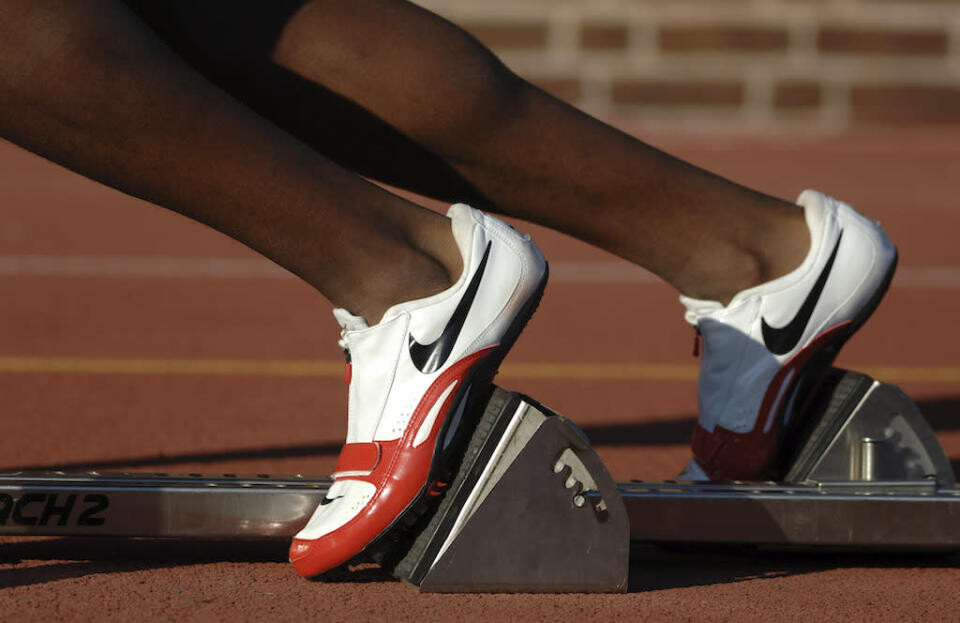
Bevilacqua Helfant Ventures LLC is also named on the subpoena because it is owned by the two former Nike employees who negotiated the deal, Chris Bevilacqua and Adam Helfant.
According to a 2016 Washington Post investigation, commission expenses were to be paid out to the firm for its part in the negotiations for the deal every year until 2039. The firm earned more than $900,000 in 2018 and 2019 from USATF, according to RW.

The third company named on the subpoena is Matchbook Creative, which has ties to USATF CEO Max Siegel. USATF is a client of the marketing firm, and the 2016 WP investigation reported that before it became Matchbook Creative, the firm was previously called a Max Siegel Company. The RW report also noted that employees at Matchbook previously had emails ending with @maxsiegelinc. RW goes on to detail Siegel’s earnings throughout the last seven years, which have been criticized as excessive for the CEO of a non-profit organization.
In 2019 he reportedly earned $1.197 million, over $400,000 more than the CEO of the U.S. Olympic and Paralympic Committee, Sarah Hirshland, despite the fact that USATF earnings were $33.7 million compared to the U.S. Olympic and Paralympic Committee earnings, which were $193.6 million. Meanwhile, all but the country’s top athletes are struggling to make a living without major sponsorships or support from USATF.
The size of the Nike/USATF deal, along with the significant payouts being made to the other entities named on the subpoena, has made some uncomfortable, and USATF critics are welcoming the investigation. You can read more about the investigation here.
(12/03/2021) ⚡AMPby Brittany Hambleton
St. Jude Memphis Marathon turns 20 as 17,000 runners return to the Bluff City
For Keri Nunley, participating in the St. Jude Memphis Marathon Weekend started as a way to honor her father, who died two decades ago after a battle with cancer. After his death, Nunley found out her father had long been donating to the children’s hospital and wanted his memorial fund to go to St. Jude.
A friend of hers was going to participate in the marathon weekend that year, the first iteration of the annual event in 2002, and invited Nunley to join. While she had never been a runner, she signed up and walked. And the McMinnville, Tennessee, resident has done it every year since.
Each year, more friends and relatives joined her, and the weekend became a family reunion, with Nunley’s relatives coming from as far as Pennsylvania, California, Florida and Texas. And while it remains a way to honor her father, Nunley also participates for another reason.
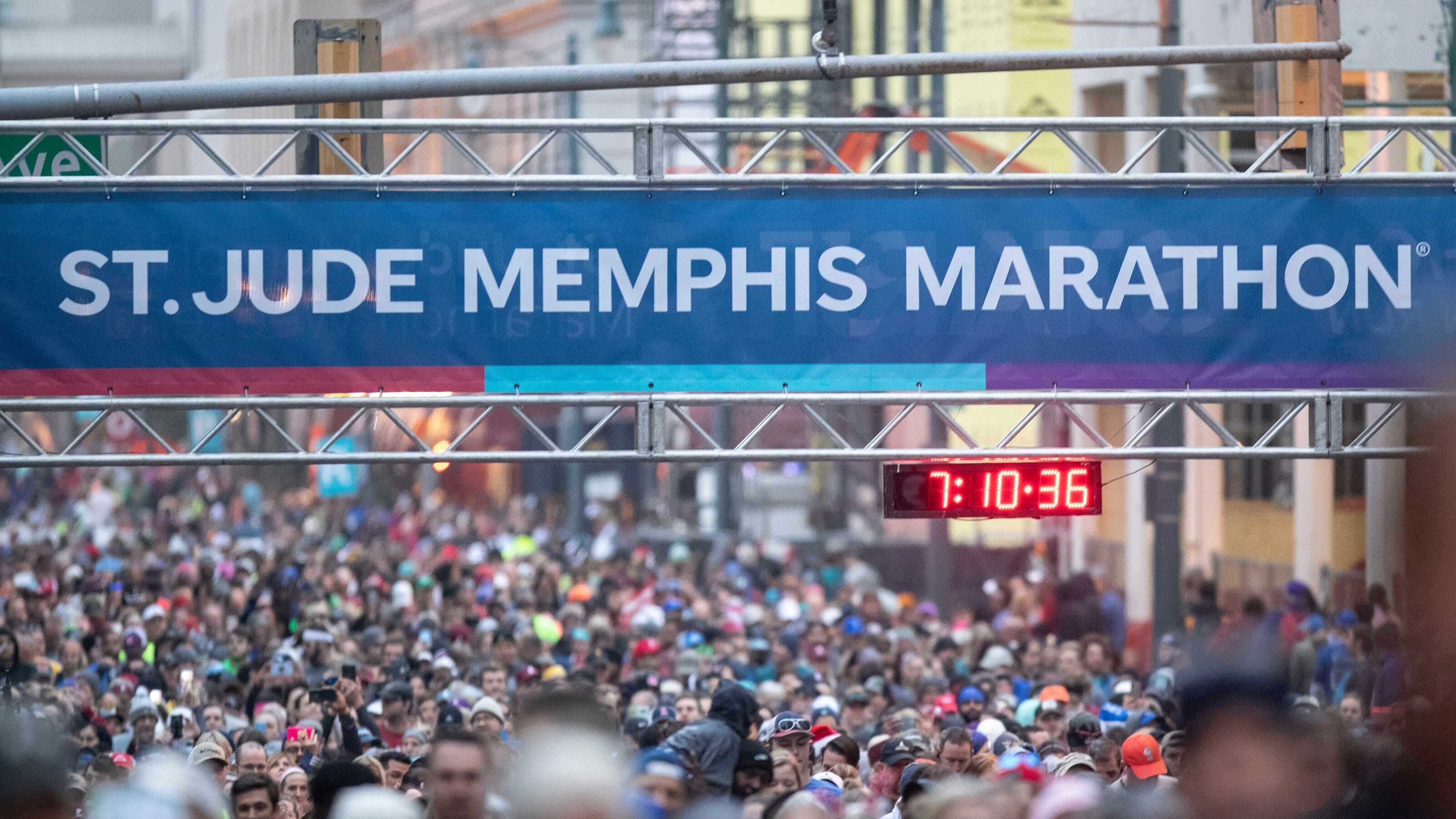
“I'm very passionate about the kids,” she said. “They need our help.”
Her favorite part of the half marathon was always passing by Target House, an apartment building provided for families of St. Jude patients who are on campus for more than three months.
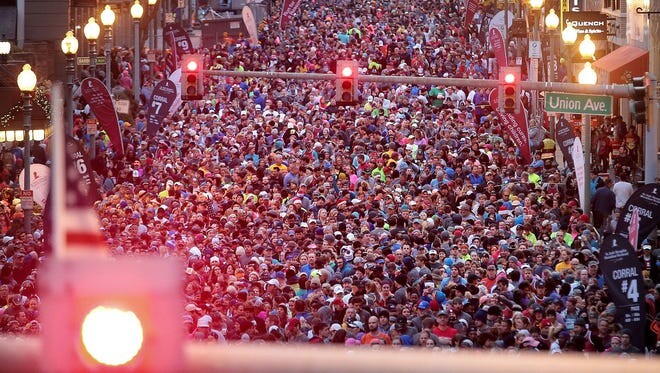
“You run a little faster as you go by there with a mother standing out there with a sign, ‘Thank you for running for my kids’... It just pushes you to do more. It is a community,” she said. “There's houses along the route in neighborhoods that all of those people have gotten involved, and they're out there every year… It's amazing how much it has grown over the years.”
Over the years Nunley's team has raised about $300,000 for the hospital.
Saturday marks the 20th St. Jude Memphis Marathon, and Nunley is one of only a few people who have participated every year, according to the organization. But over the past two decades, the event has grown from a small, local fundraiser to an international event drawing thousands and raising millions.
Over the life of the race, it has raised more than $100 million for St. Jude. It is the largest single-day fundraiser the organization has. The goal for the 20th-anniversary race was to raise $9 million. According to ALSAC, the fundraising and awareness organization of St. Jude Children's Research Hospital, the race is on track to raise more than $12 million this year.
There will be more than 20,000 people participating in the marathon weekend in 2021. About 17,000 will be running or walking in person, while the rest are participating virtually. Those runners come from all 50 states and 71 different countries.
Last year's all-virtual event raised $7.5 million. About 15,000 people participated.
The race is also more than a fundraiser for St. Jude, it's a community event, drawing area residents to the course to cheer for the runners and walkers and filling up Memphis hotels, restaurants, cafes and bars.
Annually — with the exception of 2020, when the races were all virtual — the race has a multi-million economic impact on the city and the wider region. According to Memphis Tourism, the 2021 race is expected to fill almost 4,000 hotel rooms.
(12/03/2021) ⚡AMPby Corinne S Kennedy
St Jude Memphis Marathon
The St. Jude Memphis Marathon Weekend is more than just a race. It's an action-packed weekend of fun, food and entertainment! Start and finish lines two blocks apart and near a dozen Downtown hotels, lots of restaurants, and Beale Street, the Memphis entertainment district. Dynamic finish in AAA baseball stadium, with use of locker rooms and shower facilities. Wave start,...
more...Six nutrients you might be missing in your diet
Eating properly in order to run well is more than just simply trying to consume enough calories. It also involves eating a variety of the right foods to ensure you’re meeting your daily requirements of vitamins and minerals.
Running can deplete your stores of important nutrients and put you at risk for deficiencies, but you can help yourself out by knowing which nutrients to be mindful of and how to know if you’re not getting enough.
This is one of the most common deficiencies among runners, particularly females. Since iron is necessary for transporting oxygen to your muscles and plays an important role in energy production, a deficiency can wreak havoc on your ability to run.
1.- Iron

The most common signs of an iron deficiency are unexplained fatigue, weakness, pale skin, shortness of breath, heart palpitations, cold hands and feet, brittle nails and hair loss.
Foods that are high in iron include red meat, liver, dark leafy green vegetables, beans, nuts, dried fruit and fortified cereals. Vitamin C aids in your absorption of iron, so eating iron-rich foods with good sources of vitamin C, like citrus fruits or bell peppers, can also improve your nutrient status. Many runners also choose to take an iron supplement, however you should talk to your doctor and have bloodwork done before starting a supplementation protocol, since taking too much iron can have dangerous consequences.
2.- Magnesium
Magnesium plays an important role in bone health and helps convert the food you eat into energy. Muscle spasms and cramps are common signs of magnesium deficiency, as well as irregular heart rhythms, nausea and vomiting and dizziness and confusion.
Good sources of magnesium include whole grains, dark leafy green vegetables, low-fat milk, yogurt, dried beans and legumes and nuts.
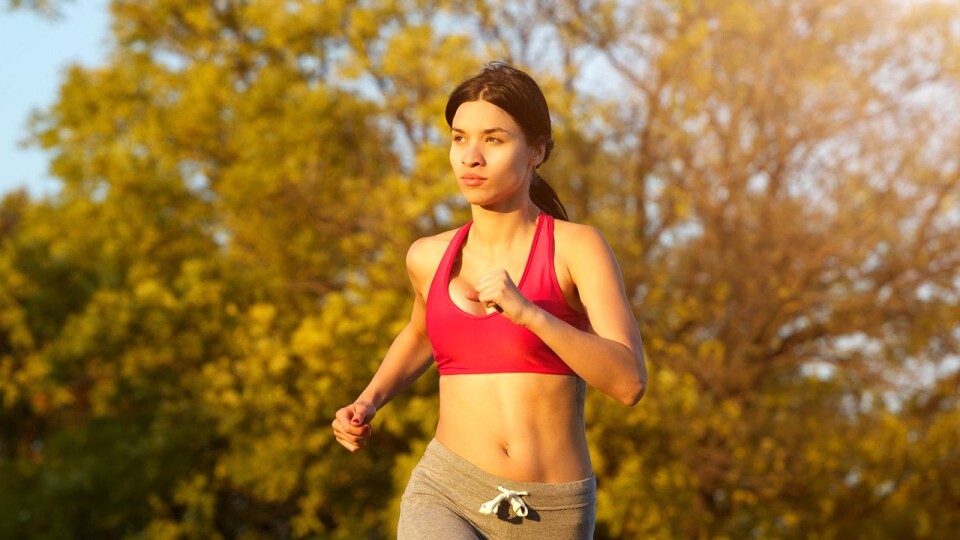
3.- Vitamin D
Vitamin D regulates the amount of calcium in your body, which makes it very important for your bone health. Recent research has also found that it plays a crucial role in the health and function of your immune system. Symptoms of a deficiency include muscle weakness, pain, fatigue and low mood or depression.
Your body synthesizes vitamin D when your skin comes in contact with sunlight, however most Canadian runners don’t get adequate sunshine exposure because of our long winters and use of sunscreen in the summer. There are some food sources of vitamin D, such as oily fish (like salmon or sardines), red meat, liver, egg yolks and fortified cereals, however many nutrition experts recommend taking a vitamin D supplement to ensure you meet your daily requirements.
4.- Calcium
Calcium is important for maintaining strong bones and preventing bone stress injuries, but it’s also a key nutrient for ensuring proper muscles contractions and the healthy functioning of your heart. Muscle spasms or cramps, low mood, weak or brittle nails, confusion or memory loss and frequent stress fractures.
Of course, dairy products like milk and cheese are a good source of calcium, but green leafy vegetables and fortified foods (like non-dairy milk alternatives and bread made with fortified flour) are good sources as well.
5.- Vitamin B12
Vitamin B12 maintains the health of your nerves and blood cells, and also prevents megoblastic anemia, which makes you feel very tired and weak. Other symptoms of vitamin B12 deficiency include pale skin, pins and needles, disturbed vision, irritability and low mood.
Good food sources of vitamin B12 include meat, milk, fish, eggs fish and cheese, as well as some fortified breakfast cerials. Runners who follow a vegan diet are more likely to be deficient in vitamin B12, so they should speak with a dietitian about taking a vitamin B12 supplement.
6.- Zinc
Zinc is important for maintaining proper immune function and helps your body process the fats, carbohydrates and proteins from your diet. Symptoms of zinc deficiency may include hair loss, a compromised immune system and loss of appetite.
Oysters, red meat and poultry are excellent sources of zinc, and whole grains, milk products and fortified cereals are also good sources of the mineral. Baked beans, chickpeas, and nuts (such as cashews and almonds) also contain some zinc.
(12/03/2021) ⚡AMPby Brittany Hambleton
Omicron variant complicates travel home for Canadian ultrarunners Remi Poitras and Jean-Francois Cauchon in South Africa
Running 100 kilometers was something Remi Poitras always wanted to accomplish, so when he had the chance to compete at the Ultra-Trail Cape Town 100K last weekend in South Africa, he could not pass up the opportunity.
Poitras finished 26th out of the 237 runners who started the race, in 13:26:56. Although he had a great result in his 100K debut, the toughest part for Poitras has been trying to get home.
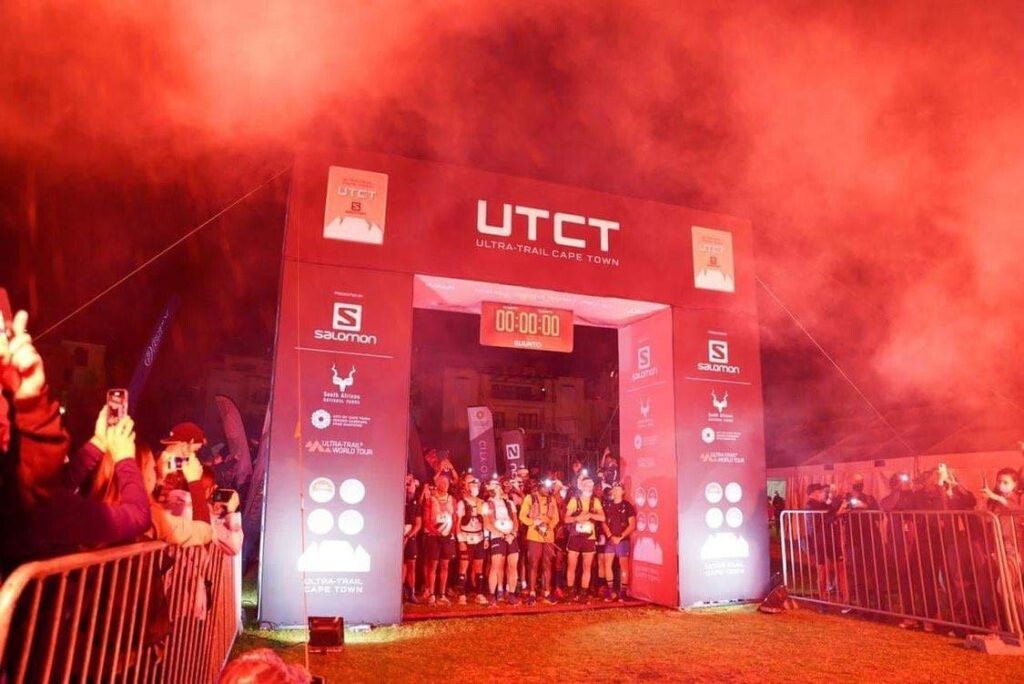
Poitras, a Moncton, N.B., native, always wanted to visit Cape Town to race internationally, but when he found out that international borders were closed to tourists, he was stuck in South Africa with fellow Canadian ultrarunner Jean-François Cauchon, who finished sixth overall at UTCT, seeking answers.
“In Cape Town, I didn’t notice anything out of the usual regulations we had in Canada,” Poitras says. “Locals were more concerned about the closures of the tourism industry.”
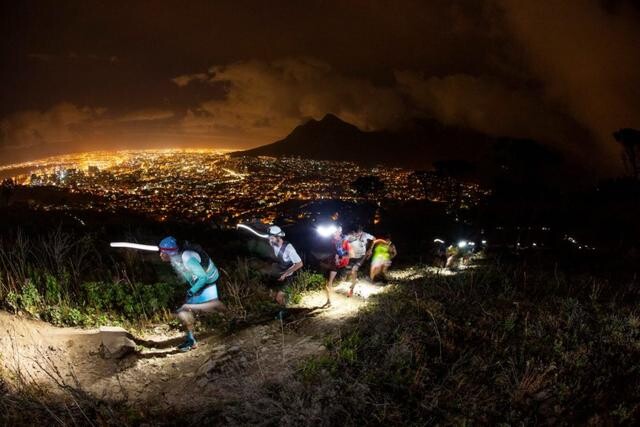
Since there are no direct flights to Canada from South Africa, there are only a few ways to travel. One option is to travel through Europe, but many major airlines such as Air France and KLM have stated that they will carry EU passengers only. The only city in North America that connects with Johannesburg is Atlanta, Ga., but again, U.S. citizens only. Another option to get back to Canada is to fly through Addis Ababa, Ethiopia, a country currently dealing with a civil war between the government and rebel groups.
Flights out of South Africa have reached high prices for tourists, and the airports are packed with tourists from Europe and North America looking to get home. “I tried connecting with the Canadians Abroad emergency hotline to see what they know and what they could do,” says Poitras. “After six days of no news or communication from the Canadian government, I decided to take matters into my own hands and book a flight to London.”
Unfortunately, there aren’t many PCR testing centres in South Africa, yet both Canada and Great Britain require negative results upon entry. “Keeping us all here is only prolonging our exposure,” says Poitras. “Everyone is scrambling trying to find a way home, the government isn’t helping us.”
Update: On Dec. 2, Cauchon and Poitras left South Africa on a flight to London, England, where they both await the results of their PCR tests to return to Canada. Poitras looks back on his first Ultra-Trail race as an unbelievable experience and hopes to conquer more ultras in 2022.
(12/03/2021) ⚡AMPby Marley Dickinson
Oregon distance runner Cooper Teare leaves Ducks for pro career with Nike
The Ducks’ star distance runner recently signed a sponsorship contract with Nike and will not return for what would’ve been his senior season of indoor and outdoor track.
“I’ve loved every second of being a Duck,” Teare said. “It was kind of a hard decision but I’m happy I’m with the one I made.”
Teare leaves Oregon as a two-time collegiate record holder (indoor mile and distance medley relay), a two-time NCAA champion (DMR and outdoor 5,000), and three-time school record holder (5,000, mile, DMR).
All of those accomplishments came during a memorable junior season in 2021 when Teare and former teammate Cole Hocker spent six months keeping Oregon’s men’s distance program in the national spotlight as they raced together through the U.S. Olympic Track & Field Trials at Hayward Field.
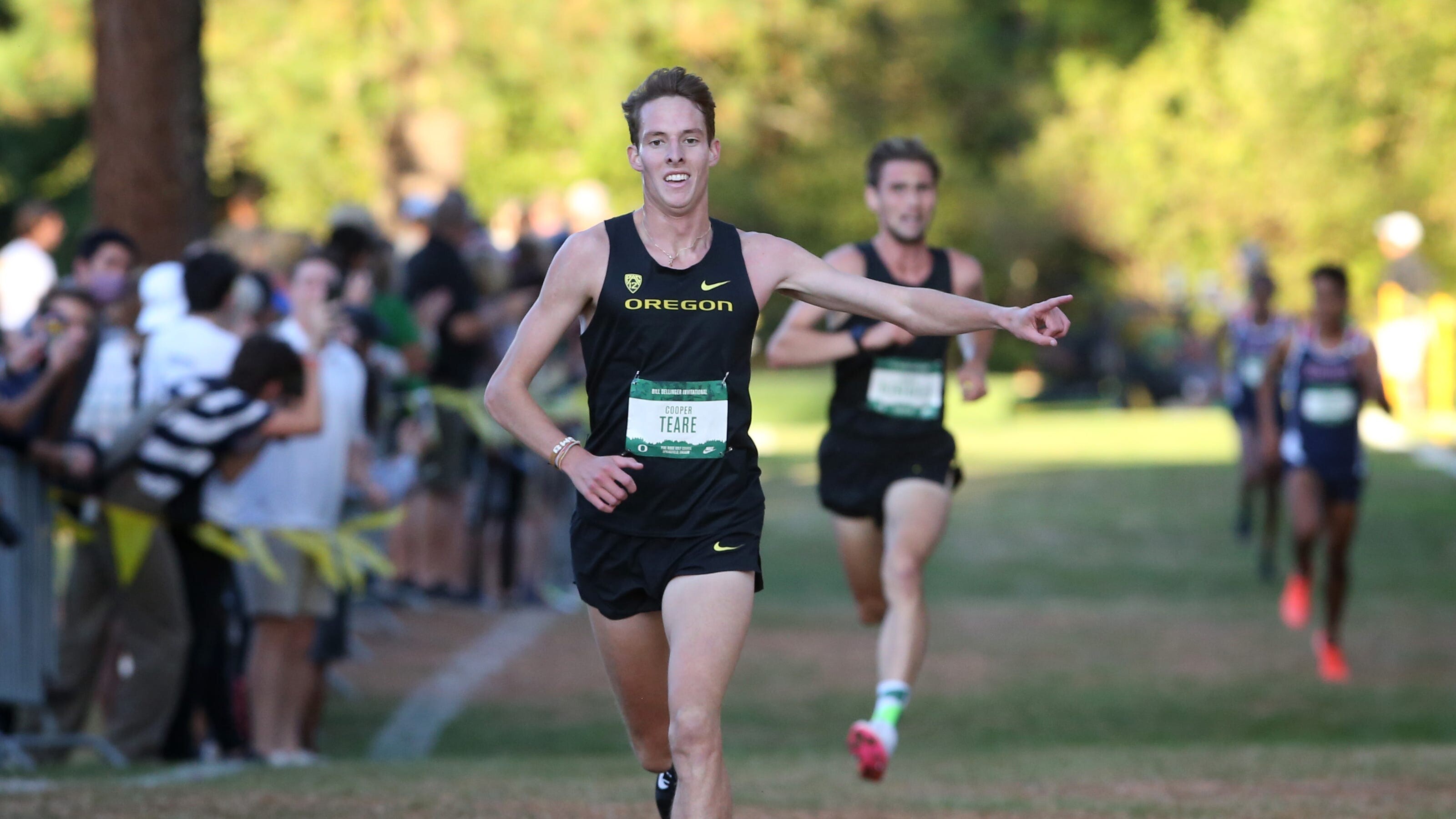
That’s where Teare’s season ended, with a fourth-place finish in the 5,000 meters. Hocker won the 1,500 and finished sixth at the Tokyo Olympics before leaving the Ducks after one season to sign with Nike in September.
Teare said he also had an opportunity to turn pro over the summer, but wanted to run one more cross country season for Oregon as he wrapped up his business degree.
“I’ve sort of been going through the process for months now,” Teare said. “Some people thought I was going to turn pro right after the outdoor track season so it was nice to have a little bit of extra time to go through the motions and talk to the people I had to talk to.”
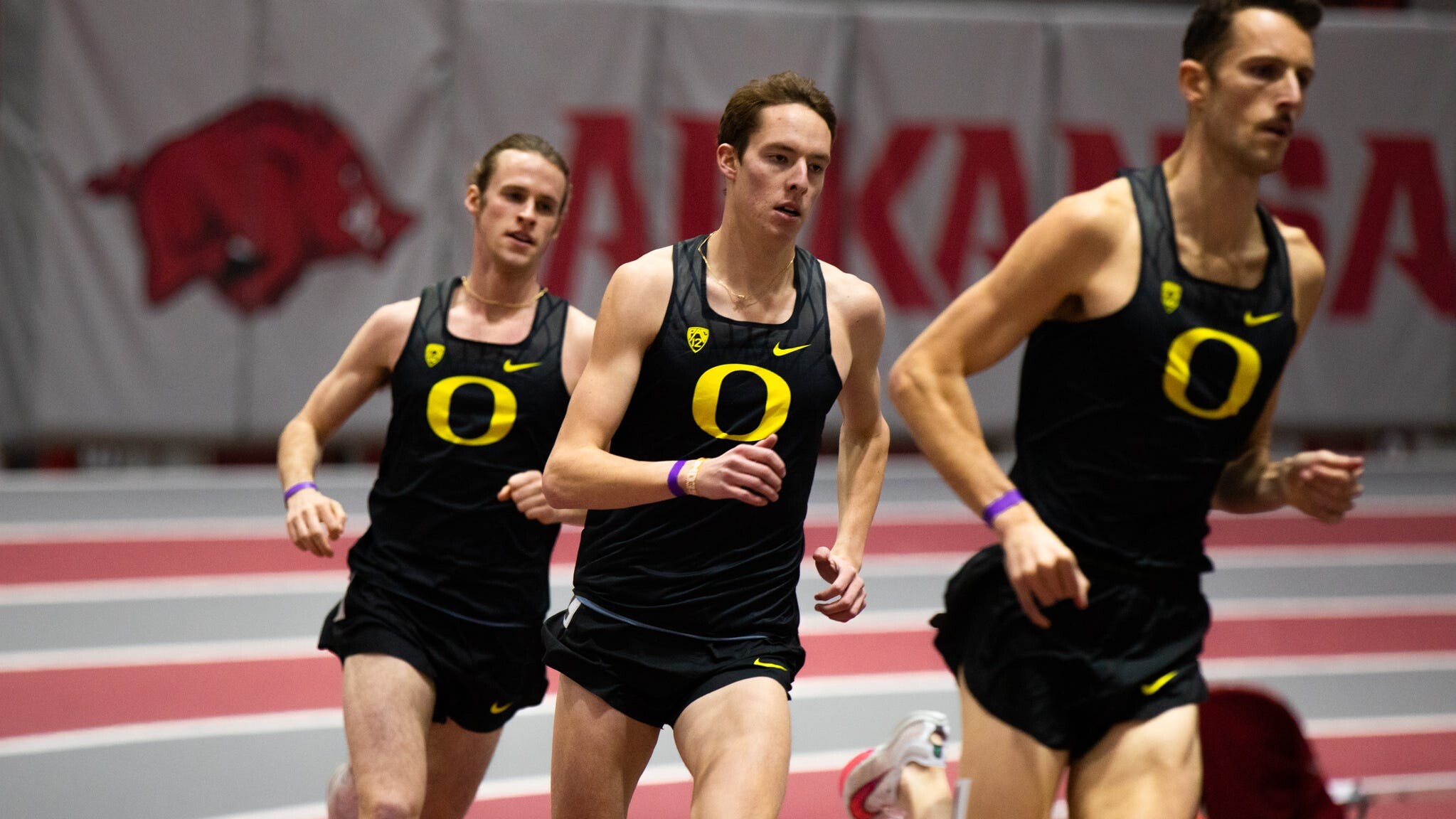
The cross country season opened on a positive note as Teare earned his first collegiate victory at the Bill Dellinger Invitational at Pine Ridge Golf Club in Springfield. He was also the runner-up at the Pac-12 championship meet.
But at the NCAA championships on Nov. 20, Teare’s legs gave out late in the 10,000-meter race and he crawled his way to the end before regaining his balance long enough to collapse across the finish line in 247th place — just three spots out of last.
“I left nothing in the tank and it just wasn’t my day,” said Teare, who was a cross country all-American in 2019 when he finished sixth. He didn’t compete in cross country during the delayed 2020 season.
Teare said it didn’t take long after that race to decide his collegiate days were done.
“That was a hard way to end it off but also I felt it was time to start a new chapter,” he said. “I talked to my coaches and we all got on the same page and everything fell into place and made sense. … I was considering going pro up right up until the start of cross country.
"The nice thing was (Nike) had seen enough of me and I had proven myself to the point where cross country wasn’t going to change much. They were ready to support me no matter what happened.”
His performance at the cross country championships did nothing to dim the track season he had earlier this year, which was highlighted by a collegiate record in the indoor mile at 3:50.39 and winning the outdoor title in the 5,000 when he ran 13:12.27. That is the fastest time ever by an American collegian and second all-time only to Henry Rono’s 1978 record of 13:08.4.
Teare is staying in Eugene to begin his professional career and will continue to be coached by Oregon associate head coach Ben Thomas. Hocker has a similar arrangement and Teare has been able to witness first-hand his training partner’s transition to the pros during the last few months.
“It was kind of nice having Cole as the guinea pig,” Teare said with a laugh. “It’s been kind of cool to see him go about figuring it all out and I think that will make it easier for me as well.”
As Teare wraps up his final days in the classroom, he is mapping out a path to next summer and what it will take to compete in the World Athletics Outdoor Track & Field Championship meet at Hayward Field.
“It doesn’t feel real,” Teare said. “It hasn’t really set in. It’s really hard to get a grasp of, OK, now I’m doing this as my job. I think once I’m done with school here in the next week it’s going to start to feel more real.”
(12/02/2021) ⚡AMPby Chris Hansen
How to eat to speed up recovery, simple improvements to your diet can help you get back on the road faster
There is no quick fix for running injuries. Healing them takes time and patience, but the right nutrition strategies can speed up the process so you can get back on the road as soon as possible.
If you’re currently sidelined with an injury, take a look at your diet to see if there’s any room to optimize your nutrition for injury recovery, and check out these tips to help you get better faster.
Don’t cut calories

When dealing with an injury, many runners are tempted to cut back on their caloric intake because they’re not expending as much energy as they would if they were still training, but this is a mistake. Restricting calories can slow down the recovery process, so make sure you continue eating, focusing on good nutrition (more on that in a minute). Depending on the severity of the injury, you may even need more calories, so if you’re unsure how much you should be eating while recovering from an injury, talk to a dietitian with a background in sports nutrition for guidance.
Protein helps build and repair muscle tissue, so when you’re trying to heal an injury it’s important to get plenty of protein in your diet. This is even more crucial if the injured area has to be immobilized for any length of time because you’re at a greater risk for muscle loss. Leucine, one of the branched-chain amino acids (BCAA’s) that make up complete protein is particularly important because of its ability to stimulate muscle protein synthesis compared to other amino acids. Foods high in leucine include chickpeas, soy-based products, eggs, chicken, salmon and beef.

Eat carbohydrates
For a similar reason to cutting calories, some runners think they should eat fewer carbohydrates while they’re injured since they don’t need the fuel for their runs. When you eat too few carbohydrates (and again, not enough calories), you risk your body having to dip into your protein stores for energy. This prevents the protein you eat from being used to repair an injured muscle, which slows down the recovery process.
Increase your omega-3 intake
Omega-3 fatty acids help decrease recovery time by reducing inflammation, so make sure you’re including plenty of fatty fish and seafood (like salmon, tuna and sardines), nuts, seeds and fortified products like eggs, yogurt and milk.
Get plenty of vitamin C
The sunshine vitamin is a mandatory co-factor in collagen formation, which is a main component of bone, muscle and skin. Eating more vitamin C will help improve your body’s collagen formation, thus expediting your injury recovery.
Up your calcium and vitamin D intake
If your injury is bone-related, you should aim to increase both of these bone-building nutrients. Calcium is crucial to building and repairing bone, but without adequate vitamin D, your body will have difficulty absorbing the calcium from your diet. It can be difficult to get enough vitamin D in the winter months, so focus on eating plenty salmon, eggs and fortified foods, and talk to your doctor about adding a supplement to your diet.
Eat plenty of fruits and veggies
When you’re recovering from an injury, you want to get as many vitamins and minerals as possible because when you support your overall health, you support the injury recovery process. Do your best to make sure you’re including a variety of fruits and vegetables in your diet every day to ensure you aren’t missing out on anything.
(12/02/2021) ⚡AMPby Brittany Hambleton
Kenyan Geoffrey Kamworor faces tough test on fast course in Valencia
Kenyan leads strong line-up in the marathon on Sunday and judging by past results we are likely to see some very fast times
Geoffrey Kamworor believes he can break the world marathon record in future and possibly dip inside two hours. This Sunday (Dec 5) should offer clues as to whether he’s correct when he takes on a strong field on a super-fast course in Valencia.
The Maraton Valencia Trinidad Alfonso EDP takes place in a Spanish city that has hosted a number of record-breaking distance running performances lately. Before he thinks about getting close to Eliud Kipchoge’s world marathon record of 2:01:39, though, Kamworor must first win the race – and it won’t be an easy task.
Kamworor’s marathon best is “only” 2:06:12 but that dates back to 2012. In recent years he has focused on the New York City Marathon – which has no pacemakers and a slowish course – and which he has won in 2017 and 2019.
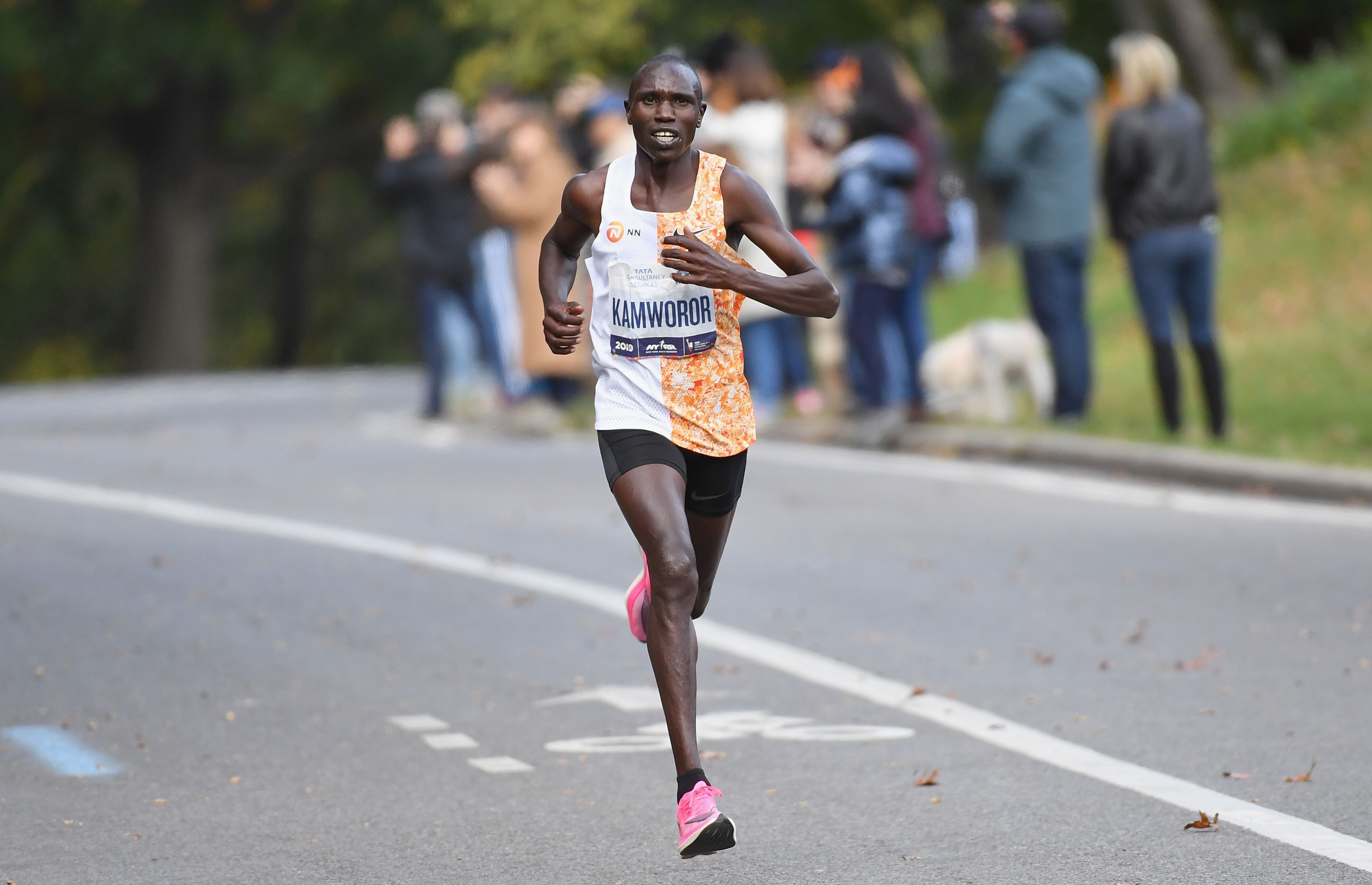
Kamworor is also a former world cross-country winner and has a good record in Valencia, as he won his third world half-marathon title in the city in 2018. When it comes to marathon potential, he will no doubt be comparing his fitness to training partner Kipchoge – as they are coached by the same man, Patrick Sang – although the 28-year-old is also on the comeback from a car accident last year.
“I have big dreams and ambitions in the marathon and want to run as fast as possible and break barriers,” he says. “Valencia will be ready to help us push our limits on race day and I am sure it will be amazing.”
Facing him in the marathon on Sunday are fellow Kenyan Lawrence Cherono, a former winner of the Boston and Chicago marathons with a best time of 2:03:04, which makes him the fastest in the field.
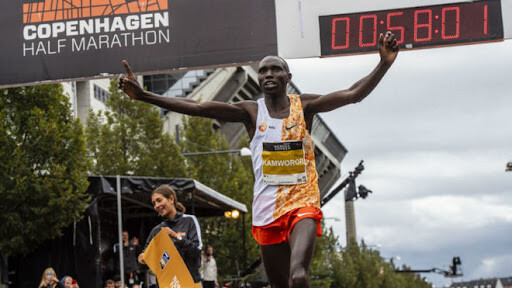
There is also Kinde Atanaw of Ethiopia, who won the Valencia Marathon in 2019 in 2:03:51 and was poised to run in London in October but had to withdraw after a positive Covid test.
In addition there is Herpasa Negasa of Ethiopia, who has a best of 2:03:51, another Ethiopian, Chalu Deso, who has a PB of 2:04:53, Tanzanian 2:04:55 man Gabriel Geay and Sondre Moen of Norway – the latter of whom held the European record until 2019.
Altogether there are three men who have run sub-2:04:00 and eight who have broken 2:06:00, which makes Kamworor only the 10th fastest in the field based on PBs.
The women’s field is not quite as strong, but is led by 2:20 performers Guteni Shone and Asmera Gebru of Ethiopia plus 2:21 runners Bornes Chepkirui of Kenya and Bedatu Hirpa of Ethiopia. Watch out too for Nancy Jelagat, who has a 65:21 half-marathon PB.
Sonia Samuels, Alice Wright and Norman Shreeve are among almost 500 British runners in the race, although the 16,000-strong field is of course dominated by more than 9000 runners from Spain. Samuels has a best of 2:28:04 but is now 42, whereas the US-based Wright is aiming to finish her first marathon.
There is a strong Irish contingent too which includes 2:26:47 runner Fionnuala McCormick, who ambitiously plans to run the European Cross Country Championships seven days later in Dublin.
The race is also taking place for the 41st time. The first race in 1981 was won by Teodoro Perez in a modest 2:57:55 with Nuria de Miguel the first woman home in 3:20:50.
After those humble beginnings the winning times began to improve rapidly, though, and in 1984 Vicente Anton won in 2:14:01 and the women’s winner Juana Pablos Acosta was inside three hours with 2:57:28.
Now in the era of super-shoes, the last four editions have been won in 2:05:15 (Sammy Kithara), 2:04:31 (Leul Gebresilase), 2:03:51 (Atanaw) and 2:03:00 (Evans Chebet) in an elite-only race minus the masses in 2020.
The last two women’s title, meanwhile, have gone to Roza Dereje in 2:18:30 in 2019 and Peres Jepchirchir with 2:17:16 in 2020. The latter of course went on to win the Olympic title this year.
(12/02/2021) ⚡AMPby Jason Henderson
VALENCIA TRINIDAD ALFONSO
The Trinidad Alfonso EDP Valencia Marathon is held annually in the historic city of Valencia which, with its entirely flat circuit and perfect November temperature, averaging between 12-17 degrees, represents the ideal setting for hosting such a long-distance sporting challenge. This, coupled with the most incomparable of settings, makes the Valencia Marathon, Valencia, one of the most important events in...
more...Michael Johnson's iconic gold spikes join the Heritage Collection
To mark the 226th World Athletics Council Meeting in Monaco, a special Heritage display was staged this week in the foyer of Le Meridien Beach Plaza. The exhibit contained 15 recent acquisitions made by the World Athletics Heritage Collection, which will soon be on display in glorious 3D in the virtual Museum of World Athletics (MOWA).
One of the oldest artefacts exhibited was a solid silver trophy donated by Kenya’s Olympic legend Kipchoge Keino, and one of the youngest items on show was a Tokyo 2020 Olympic Torch.
Yet arguably the greatest recent addition to the collection are three running spikes worn by eight-time world champion and four-time Olympic Games gold medalist Michael Johnson.
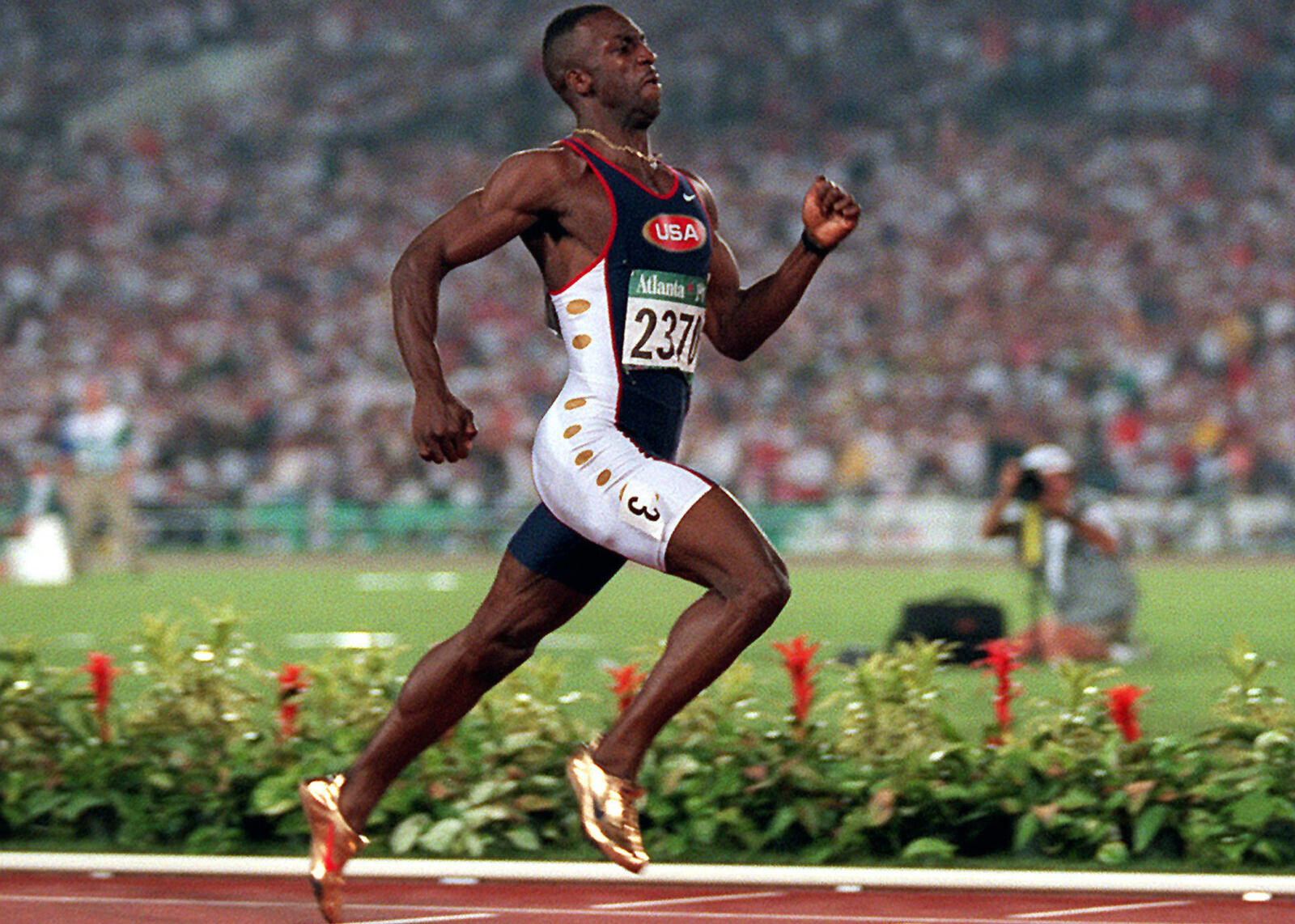
Entering the collection is one of Johnson’s iconic gold spikes from Atlanta 1996 (right foot), one from Sydney 2000 (left foot), and thirdly, a shoe from Johnson’s final race in 2001 (right foot). Each shoe is autographed.
“I can still vividly remember the chills I felt…”
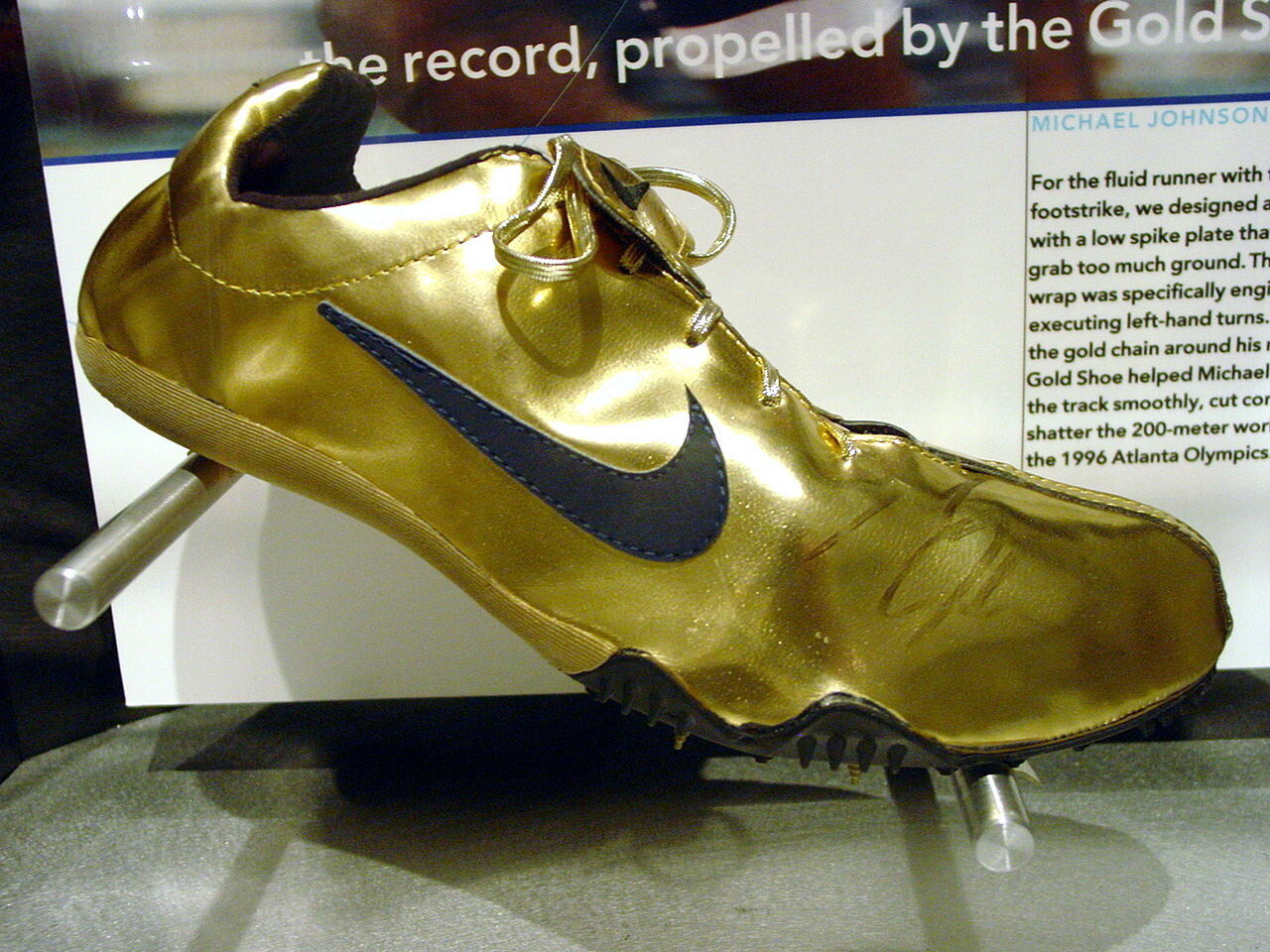
The trio now form part of the World Athletics Heritage Collection thanks the extraordinary generosity of Brad Hunt, who was Johnson’s agent during his outstanding running career.
“I visited the Heritage exhibition while at the 2019 World Athletics Championships in Doha,” commented Hunt. “The scale of the collection was particularly impressive, considering it had only been created in 2018.
“The historic display of artefacts included items from the careers of Jesse Owens, Carl Lewis and Usain Bolt. In men’s sprinting history, there was one glaring omission. By offering the spikes which Michael (Johnson) gave me after some of his most memorable races, I hope to have helped fill that gap in the World Athletics Heritage Collection,” added Hunt.
Johnson stunned the world of sport in 1996. At the Atlanta Games he won an unprecedented Olympic men’s 200m and 400m double. In the process, with a 19.32 clocking, Johnson destroyed his own 200m world record (19.66) which he had set less than two months before the Games on the same track at the US Olympic Trials.
“Both Olympic shoes were given to me two or three weeks following the Games they were used in,” confirmed Hunt. “The 1996 shoe was given to me in Hawaii, where we travelled for our post-Olympic celebrations. The 2000 shoe was given to me in Los Angeles.
“I can still vividly remember the chills I felt when I became the first person Michael told of his decision to wear gold spikes in the 1996 Olympic Games. We were sitting on a flight to Los Angeles from the Atlanta Olympic Trials to Los Angeles for Michael's first appearance on The Tonight Show with Jay Leno.
“Michael had just set his first world record (19.66 200m) the day before (23 June). We were discussing how much attention his purple spikes had received when he declared he would be wearing gold in the Games.”
14c gold in the material
Four years later, Johnson retained his Olympic 400m title in Sydney, Australia. Johnson had become world record-holder for the distance (43.18) at the World Championships in Seville, Spain, the previous year.
“Although the 2000 shoe is made with actual 14c gold in the material, thus making them shinier (with significantly more material value), the 1996 shoe is my favourite because these gold shoes were an actual media phenomenon!
“The amount of secrecy involved with the shoes' clandestine development and historical Olympic debut created one of the strongest identities an athlete has ever had with his or her footwear,” concluded Hunt.
The following year Johnson undertook his ‘Golden Victory Lap’ tour, finishing his career at the Goodwill Games in Brisbane. It is one of the shoes which he wore in that last season which completes this extra special induction of footwear into the World Athletics Heritage Collection.
The three spikes will soon be on display in the virtual MOWA.
In 2022, the spikes will also go on public show at MOWA’s onsite public exhibitions in Portland and Oregon, USA, in the lead into and during the World Athletics Championships Oregon22.
(12/02/2021) ⚡AMPby World Athletics
Olympic champs Elaine Thompson-Herah of Jamaica and Karsten Warholm of Norway have been named the World Athletes of the Year at the World Athletics Awards 2021
Elaine Thompson-Herah of Jamaica and Karsten Warholm of Norway have been named the World Athletes of the Year at the World Athletics Awards 2021, a ceremony held virtually on Wednesday (1).
Thompson-Herah produced one of the finest sprint seasons in history this year, retaining her Olympic 100m and 200m titles in Tokyo and adding a third gold medal in the 4x100m relay. On top of her Olympic triple, she also clocked world-leading times of 10.54 and 21.53 over 100m and 200m respectively, moving to second on the world all-time lists and coming within touching distance of the long-standing world records.
“I just take it year by year,” said Thompson-Herah. “I went very close to the world record so you know, anything is possible. No spikes hanging up any time soon!
“The World Championships in Oregon is most definitely my next big target,” she added. “It is close to home, I hope friends and family can come out and watch. I hope I get some crowd as well. That couldn’t happen in Tokyo but hopefully in Eugene I can get my friends and family to come and cheer me on.”

Warholm uncorked one of the most remarkable performances in athletics history when he stormed to gold in the 400m hurdles at the Tokyo Olympics. Having already broken the world record with 46.70 in Oslo in the lead-up to the Games, Warholm exceeded all expectations in the Japanese capital to claim gold in a stunning world record of 45.94. In a race of incredible depth, the top three athletes finished inside the pre-2021 world record.
“I’m so happy for this,” said Warholm. “First when I saw the time (in Tokyo), I was like, ‘This must be a mistake!’ Because I didn’t see that one coming. And I didn’t see the victory coming before crossing the finish line.
“It was a very intense race, I knew the American and the Brazilian and all the other guys were really chasing me. I always go out hard and I never know what is going on behind me. I was just fighting all the way to the finish line. When I realised 45.94 was the reality, I was thinking: ‘This is not too bad. I’ll take it!’"
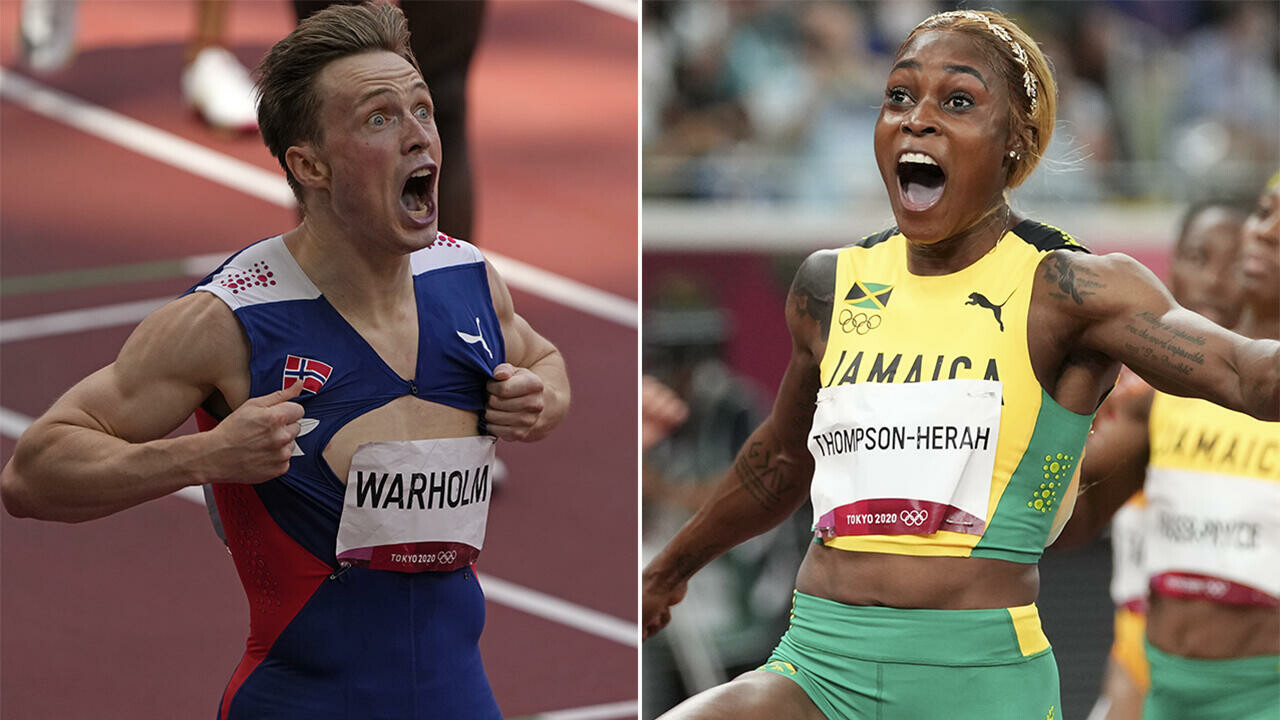
World Athletics President Sebastian Coe congratulated all of tonight’s winners and finalists on their extraordinary achievements this year.
"We have this year celebrated some jaw-dropping performances in Tokyo, at the World Athletics U20 Championships in Nairobi and through our one-day meeting circuits – the Wanda Diamond League and the Continental Tour. So we’re delighted to recognise some of our stars at tonight’s awards.
"As a sport, we are in an incredibly strong position. 2021 has been an excellent year. We cemented our position as the number 1 Olympic sport coming out of Tokyo, we have the most God given talented athletes on the planet and our sport is the most accessible of all sports. Thank you to all our athletes around the world. I am looking forward to watching what you can all do in 2022."
The other award winners were:
Female Rising Star
Athing Mu
The US teenager was undefeated at 800m all year, winning Olympic gold at the distance following a long but successful collegiate season. She broke the senior US 800m record with her triumph in Tokyo and then improved it to 1:55.04 just a few weeks later. She also excelled at 400m, clocking a North American U20 record of 49.57 for the distance.
“It means the world to know that my support goes beyond friends and families and extends worldwide,” said Mu. “This award shows all young girls that your dreams can, indeed, come true."
Male Rising Star
Erriyon Knighton
Throughout 2021 the 17-year-old took down several marks that had belonged to sprint legend Usain Bolt. Knighton first set world U18 bests of 20.11 and 20.04 over 200m, but his rapid rise continued and he broke Bolt’s world U20 record for the distance with 19.88 and 19.84. He went on to finish fourth in the Olympic final with 19.93.
“I’m really thankful for this award,” said Knighton. “One of my most memorable moments of this year was making it to the Olympic final in Tokyo and finishing fourth at the age of 17.”
Member Federations Award
Federacion Costarricense de Atletismo (Costa Rica)
In recognition for their outstanding training, competition and development programme roll-out over the past 12 months, for their consultative work on the World Athletics Kids’ Athletics programme, and for successfully staging a host of international events over the past year.
Inspiration Award
Mutaz Barshim and Gianmarco Tamberi
The shared high jump victory between Qatar’s Mutaz Barshim and Italy’s Gianmarco Tamberi became one of the biggest talking points of the Olympic Games – not only for everything it represented in their own individual careers, having both battled serious injuries since the last Games, but mainly for the act of respect and sportsmanship between two friends.
“It is just crazy if I think about this story,” said Tamberi. “Thank you very much for this trophy.
“I now call Mutaz like five times a week because I need to speak with him. I feel that now we are not just friends, we are really like blood brothers.”
Barshim added: “I hope to inspire more people to love our sport and maybe share a gold one day!”
President’s Award
Peter Diamond, Executive Vice President of NBC Olympic programming
“Athletics owes Peter a massive debt of gratitude,” said World Athletics President Sebastian Coe. “Peter has worked alongside us for effectively 40 years and has been a constant source of great advice and wise counsel, and occasional humour that has softened the edges of any particular situation. And he has made athletics a lot better.”
Coaching Achievement Award
Bobby Kersee
The US coach has guided the careers of many legendary athletes over the years, but this year two of his charges made history. Allyson Felix became the most decorated female track and field Olympian in history after winning her 10th and 11th Olympic gold medals in Tokyo, while training partner Sydney McLaughlin broke two world records in the 400m hurdles and claimed Olympic gold in the discipline.
Woman of the Year Award
Anju Bobby George
The former international long jump star from India is still actively involved in the sport. In 2016 she opened a training academy for young girls, which has already helped to produce a world U20 medallist. A constant voice for gender equality in her role as Senior Vice President of the Indian Athletics Federation, Bobby George also mentors schoolgirls for future leadership positions within the sport.
Jean-Pierre Durand World Athletics Photograph of the Year
Ryan Pierse’s photograph of the women’s high jump qualifying at the Tokyo Olympic Games
This year’s award is dedicated to the memory of Jean-Pierre Durand, one of the sport’s most prolific photographers and photo chief for a number of World Athletics Series events, who died in October.
“This winning image was taken on one of the morning sessions in Tokyo and it was a hot one,” said Pierse, who is from Australia. “I wanted to illustrate the heat and how it was affecting the athletes. It is a picture that I worked on for a while, and it all came together. I am really happy with it.
“I think it’s incredibly fitting that this award is named in memory of Jean-Pierre Durand,” added Pierse. “I had the pleasure of working alongside him, most recently at the Tokyo Olympics.”
(12/01/2021) ⚡AMPby World Athletics
World Athletics Series events awarded to Glasgow and Lima
The World Athletics Council has today (1) agreed on the host cities of two future World Athletics Series events at their meeting in Monaco.
The 2024 World Athletics Indoor Championships will be held in Glasgow, United Kingdom, and the 2024 World Athletics U20 Championships will be held in Lima, Peru.
Glasgow successfully hosted the European Indoor Championships in 2019, and World Athletics will now take its 2024 championships to the same arena.

The First Minister of Scotland, Nicola Sturgeon, hailed the decision.
“I’m delighted that Glasgow has been chosen to host the prestigious World Athletics Indoor Championships in 2024,” she said. “This will underline Scotland’s global reputation as the perfect stage for events and is welcome news as we look to recover from the pandemic.”
Councillor David McDonald, Chair of Glasgow Life and Deputy Leader of Glasgow City Council, added: “Today’s announcement by World Athletics recognises Glasgow’s global reputation as a first choice host for major sporting events and as a city with a track record of delivering world-class event experiences. It’s a privilege to be bringing the 2024 World Athletics Indoor Championships to the Emirates Arena, which is widely regarded as one of the best athletics venues in the world.”
Ian Beattie, Chair of UK Athletics, was also delighted that his federation will have the opportunity to host this event.
“World Athletics has demonstrated their confidence in the UK to host global athletics championships once again, and history has shown time and time again our ability to deliver amazing events,” he said. “We’re thrilled with the outcome and look forward to a successful championships working alongside our partners that will truly give all athletes a fantastic stage upon which to perform.”
The dates of the event have yet to be finalised, but are expected to be in March 2024.
Peru to host first World Athletics Series event in 2024
Lima will become the first city in Peru to host a World Athletics Series event when it welcomes the world’s best junior athletes in mid-2024.
The President of the Peruvian Athletics Federation, Javier Chirinos Hoyos, said this was a big moment for athletics in Peru.
“We are very happy and proud to have been chosen for the first time ever, to host the 2024 World U20 Championships,” he said. “Rest assured that we will organise the best event of this category in history. We have the experience and a great team to give the best in Lima in 2024. Thanks all and we will be waiting with open arms for all of you in Lima."
The general director of the Local Organising Committee, Luis Condeso Ocampo, added: “We are very happy and grateful to World Athletics for trusting us to host the World Athletics U20 Championships in 2024. We assume this designation with great responsibility, and be sure that the Peruvian Athletics Federation, with all the support of the Peruvian Sports Institute, the Municipality of Lima, and all sportspeople in Peru, we will make the World U20 Championships in Lima an unforgettable experience for all participants.”
(12/01/2021) ⚡AMPThe surprisingly simple training of the world’s first sub-4 minute miler, How Roger Bannister prepared for his historic run?
Before Sir Roger Bannister’s historic run in 1954, running fans and experts believed that the sub-four-minute mile was not possible. When he crossed the finish line at the University of Oxford’s Iffley Road track in 3:59.4 66 years ago, he changed the course of running history forever, opening the door for thousands more to follow.
You might be surprised, then, to find out that in order to set this historic record, Bannister only trained for about five hours per week.
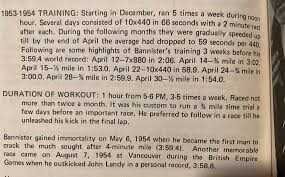
Twitter user @jmarpdx recently tweeted an exert from the book How They Train by Fred Wilt, which provides a brief description of Bannister’s training regime leading up to his breakthrough run. According to the book, he started training in December (five months before the race) and only ran for one hour, five days per week during his lunch hour.

His sessions almost always consisted of some form of interval training, including workouts like 10 x 440 yards (400m), 7 x 880 yards (800m) and 3/4 mile (1,200m) time trials.
Of course, today we have a lot more knowledge regarding training protocols, mileage and recovery, but this sample from Bannister’s training is an example of how sometimes, simplicity is the best path forward.
(12/01/2021) ⚡AMPby Brittany Hambleton
Five reasons why runners make good leaders, running a race and running a business have more in common than you might think
Running a race and running a business have a lot in common. They both require planning, commitment, troubleshooting and persistence in order to achieve success. For this reason, runners already have a lot of the skills required to be effective leaders. Not convinced? Check out these five reasons why your experience as a runner can help you in leadership roles.
1.- You know how to set goals… and believe in them
Runners understand how to set appropriate goals based on where they’re at now, the circumstances they’re currently dealing with and the timeline they have to achieve their goal. This is a great skill to have as a leader because, similarly to running goals, setting targets that are either too easy or too unrealistic can set your organization up for failure.
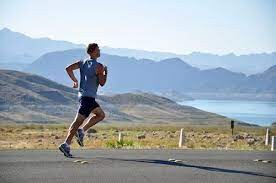
You also understand the importance of believing in the goals you set for yourself. Most people are willing to work hard, but if they don’t believe they’ll ultimately achieve success, they’re more likely to give up rather than try and fail. As a runner, you’ve learned how to visualize your success and believe in your training, and you can use these skills to inspire and encourage others in your organization.
2.- You know how to create sustainable change
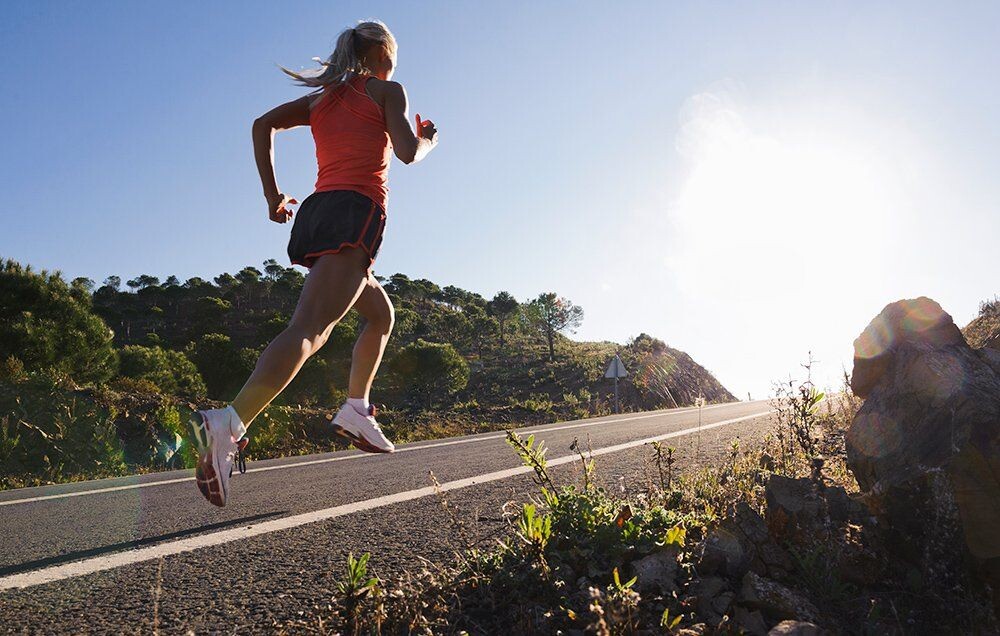
When you first started running, you didn’t start by tackling a marathon, did you? You likely began by going for a short, easy run and gradually worked your way up from there. Running requires you to adopt new habits and apply them consistently if you want to be successful, and to make changes gradually in order for them to be sustainable. Success in business is the same, and practicing these skills in your running training will help you become a better leader.
3.- You understand the importance of celebrating the small wins
Achieving success in business doesn’t happen in only a few days, weeks or even months. In most cases, large-scale success requires years of work and patience, which is not that dissimilar to running. You may set a goal for yourself like completing your first marathon or running a sub-60 minute 10K, but you know how to celebrate the smaller wins along the way, like running your first half-marathon or setting a new personal best in the 10K, even if it’s not quite your goal time.
Early victories and small wins build confidence and motivate you (and others in your organization) to keep working toward the over-arching goal. In the same way that you would celebrate that new PB en route to your sub-60 10K, you’ll make sure you celebrate every step in the right direction with your organization, too.
4.- You understand the fears and concerns of your team
You know what it’s like to stare a big, daunting goal in the face. Just like you weren’t sure if you could run your first 5K, 10K or marathon, others in your organization may be feeling similarly uncertain about the ambitious goals you’ve set as a team. Having addressed those same types of fears in your running life, you’ll be better equipped to help others in your organization work through them to achieve success.
5.- You know what it takes to succeed
Success in a race, regardless of the distance, is the result of several small improvements over time. Week after week, month after month, you lace up your shoes to get a little bit faster and run a little bit farther, one run and one race at a time. Success in business is the same: you build off of each small win, gradually working your way to the ultimate goal. Once you’ve achieved that goal, you create a new one and continue inching your way toward it.
By practicing this persistence and patience in your running life, you’ll be better at applying these skills in your role as a leader, and you’ll be able to pace your team in a measured and effective way to achieve overall success.
(12/01/2021) ⚡AMPby Brittany Hambleton
Boston Athletic Association Announces 2022 Boston Marathon Official Charity Program Members
The Boston Athletic Association (B.A.A.) has announced that 43 organizations have been selected for the B.A.A.’s Official Charity Program for the 2022 Boston Marathon. Five new organizations are joining the B.A.A.’s Official Charity Program for the 126th running, to be held on Monday, April 18, 2022, the first Patriots’ Day edition of the race in three years.
Entering the 33rd year of the Official Charity Program, the B.A.A. provides select nonprofit organizations with entries into the Boston Marathon, which are used to raise millions of dollars for worthwhile causes. A total of $14.2 million was raised through the B.A.A. Official Charity Program this year, with an average of more than $10,000 raised per entry. Combined with the John Hancock Non-Profit Program and other qualified and invitational participants, $26.6 million was raised for nonprofits surrounding the 2021 race. The B.A.A. Official Charity Program and the John Hancock Non-Profit Program have combined to raise more than $426 million since the charity program’s inception at the 1989 Boston Marathon.
The five new organizations joining the B.A.A.’s Official Charity Program for the 2022 Boston Marathon include America Scores New England, Boston Bulldogs Running Club, Play Ball Foundation, The BASE, and The Hoyt Foundation. A total of 38 organizations will return as members of the B.A.A.’s Official Charity Program. A complete list of B.A.A. Official Charity Program members can be found below. (Click on each organization for more information.)
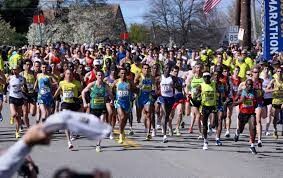
261 Fearless, Inc.
America Scores New England*
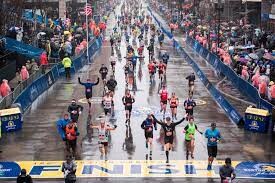
American Liver Foundation, N.E. Division
American Red Cross of Massachusetts
B.A.A. Charity Team
Back on My Feet
Boston Bruins Foundation
Boston Bulldogs Running Club*
Boston Celtics Shamrock Foundation
Boston Children’s Hospital
Boys & Girls Clubs of Dorchester
Brigham and Women’s Hospital
Camp Shriver at UMass Boston
Community Rowing
CYCLE Kids, Inc.
Dana-Farber Cancer Institute
Doug Flutie Jr. Foundation for Autism, Inc.
Dream Big!
Esplanade Association
Girls on the Run Greater Boston
Good Sports, Inc.
Hale
Herren Project
IMPACT Melanoma
Massachusetts Association for the Blind and Visually Impaired
MEB Foundation
MetroWest YMCA
Michael Lisnow Respite Center
Multiple Myeloma Research Foundation
National MS Society, Greater New England Chapter
New England Patriots Foundation
Play Ball Foundation*
Red Sox Foundation
Semper Fi Fund
Spaulding Rehabilitation Hospital
Squashbusters
TB12 Foundation
Tedy’s Team
The BASE*
The Hoyt Foundation*
Thompson Island Outward Bound
Trinity Boston Connects
Tufts Medical Center
*Indicates New B.A.A. Official Charity Program Member in 2022
B.A.A. official charities will begin to accept registration submissions on Monday, December 6. For more information about the B.A.A. Official Charity Program, and to apply to participate in the 2022 Boston Marathon as a member of one of their teams, please visit www.baa.org.
The B.A.A. annually provides non-profits associated with the B.A.A. Official Charity Program and John Hancock’s Non-Profit Program with invitational entries into the Boston Marathon. Each non-profit organization directly manages its own application process, athlete selection, and fundraising minimums, deadlines, and requirements.
For the fourth consecutive year, the Boston Athletic Association will field its own fundraising team for the Boston Marathon. B.A.A. Charity Team members fundraise to help expand the B.A.A.’s youth and community initiatives, bringing the benefits of running and healthy lifestyles to the greater Boston community. Applications will be accepted for 2022 B.A.A. Official Charity Team beginning on December 6.
The B.A.A. is committed to a world where all people can access and benefit from running and an active lifestyle.
(11/30/2021) ⚡AMPBoston Marathon
Among the nation’s oldest athletic clubs, the B.A.A. was established in 1887, and, in 1896, more than half of the U.S. Olympic Team at the first modern games was composed of B.A.A. club members. The Olympic Games provided the inspiration for the first Boston Marathon, which culminated the B.A.A. Games on April 19, 1897. John J. McDermott emerged from a...
more...The best tips on using a treadmill to Lose weight and get fit
If you’re currently trying to lose weight and get fit, then using a treadmill can be a great addition to your workout routine. In this article, we will talk about the information you need to know about treadmills, how they work, why they are so effective at burning calories, and even some tips on using them for maximum effectiveness. We hope that by reading this, you’ll see how easy it is to use a treadmill to help you reach your fitness goals.
How Treadmills Work for Weight Loss
Losing weight by running on the treadmill has always been an effective method for most people. When you exert effort, your body has to burn calories in order to supply you with the energy your body needs to keep working. This means that running on a treadmill is more likely to help you lose weight than other activities like swimming or cycling because it puts more demand on your body.
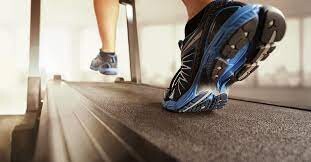
Using the following tips will help you get the most out of using a treadmill for weight loss in an effective manner :
Increase Your Speed

One of the most recommended things to do is to slowly build up your speed while running on the treadmill. While many people just focus on going as fast as they can, it’s actually better to increase your speed in small increments and not go as fast as you possibly can. This will help keep the strain on your body lower, which means that you won’t be at risk of injuring yourself while trying to lose weight.
Using a Curved Treadmill
Curved treadmills are more effective at mimicking the act of running on normal ground than regular treadmills. If you want to get more out of your use for this machine, then it may be worth looking into getting this type instead of the usual one for better results. Invest in Curved Treadmills in 2022 to achieve your fitness goals in the new year. It’s definitely a good idea to look up reviews so that you can get an accurate idea of what the features are and which one would suit you best. Curved treadmills are known to be easier on the joints; they also engage more muscle groups, thus helping burn fat faster.
Increase Your Distance
Another thing that people like to do when they work out increases the distance that they are running. By increasing your running duration, it’ll be easier to lose weight and get fit while you’re doing something that is less stressful than other exercises like cycling or swimming.
HIIT Treadmill Workouts
One of the best ways to burn fat and lose weight is through HIIT workouts. High-intensity interval training involves alternating between periods of high-intensity and low-intensity work, or rest periods throughout your workout, which has been shown to be highly effective at burning calories in a short amount of time. If you want to get the most out of your treadmill sessions, then it may be a good idea to look into HIIT.
Increase Your Resistance
Resistance is another important factor in treadmill training that you’ll want to keep an eye on. If you are trying to lose weight and get fit fast, try increasing your resistance so that more strain is placed on your body. This will increase the amount of burned calories during your session, which is the most important factor to watch out for if you’re trying to lose weight.
Treadmills are a great investment if you want to lose weight at home without having to spend all day working out or paying expensive gym fees. By using these tips to maximize your time on the treadmill, you’ll have no problem reaching your goals and feeling better in a safe amount of time.
(11/30/2021) ⚡AMPby Colorado Runner
Canada’s Trishul Cherns completes his 300th ultra, Cherns's ultrarunning career has spanned more than 43 years
On a cool Saturday morning in West Orange, New Jersey, Canadian ultrarunning legend, Trishul Cherns, completed his 300th ultramarathon at the Squatchy Leftovers Maple Leaf 50K. At 64, Cherns’s ultrarunning career has stretched over 43 years and he has no intentions of stopping anytime soon.
We sat down with him to talk about his 300th run, his storied career and his plans for the future.
The Squatchy Leftovers Maple Leaf 50K consisted of 10 five-kilometer loops through the trails, and was named both for the group that organized the event (the Sassquad Trail Runners) and for Cherns himself (the maple leaf is a nod to his Canadian roots). While you would expect someone to feel sore and tired after the day after running 50 kilometers, Cherns spoke as though he’d merely jogged around the block. “I recover very fast, and so that’s the blessing,” he says. “I could go and do it again today.”
Of course, anyone who knows Cherns’s history in the sport would not be surprised to hear that. He is best known as a multi-day racer, and throughout his career, he has represented Canada in many international competitions.
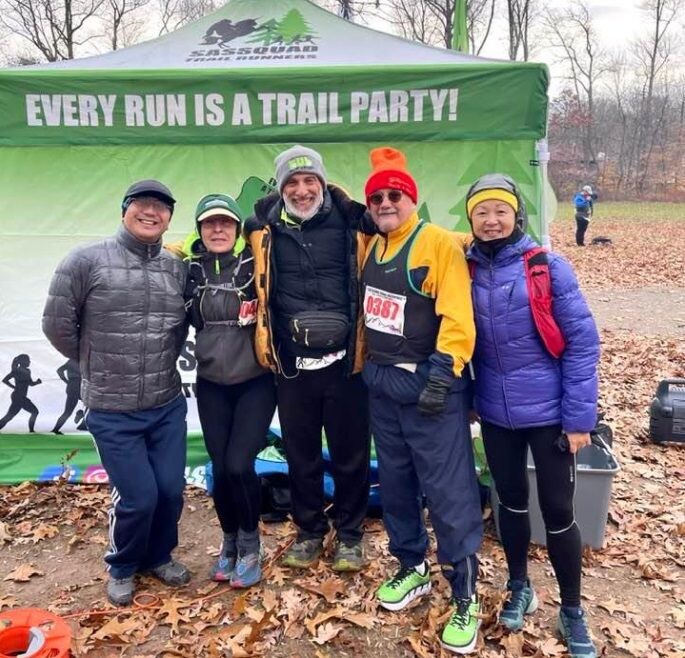
He has broken more than 110 Canadian ultrarunning records and has accumulated more than 73,000 kilometers in ultras, which have included events as short as 50K and as long as 1,000 miles (1,600 km) on the roads, trails and track. “That’s just ultramarathon racing kilometers — that doesn’t mean training or marathons,” he says.
Cherns has been on the podium at dozens of races over the years. “I’ve been first, second and third, and have even placed last in some races, so I’ve done it all,” he says. Out of all of the races he’s done, his most memorable was a 24-hour race in Burlington, Ont. He won, but that wasn’t the reason it holds such a special place in his memory. It’s because his parents were on the sidelines. “There’s something special about winning a race and having your parents there to watch,” he says.
Throughout his career, Cherns has watched the world of ultras change dramatically. Manual timing has been replaced with timing chips, cotton T-shirts have been ditched for technical materials and runners can listen to music now from their phones, rather than carrying around a cassette player. “The technology has been fantastic,” he says. “It’s made the progress of ultrarunning much better and made it more visible.”
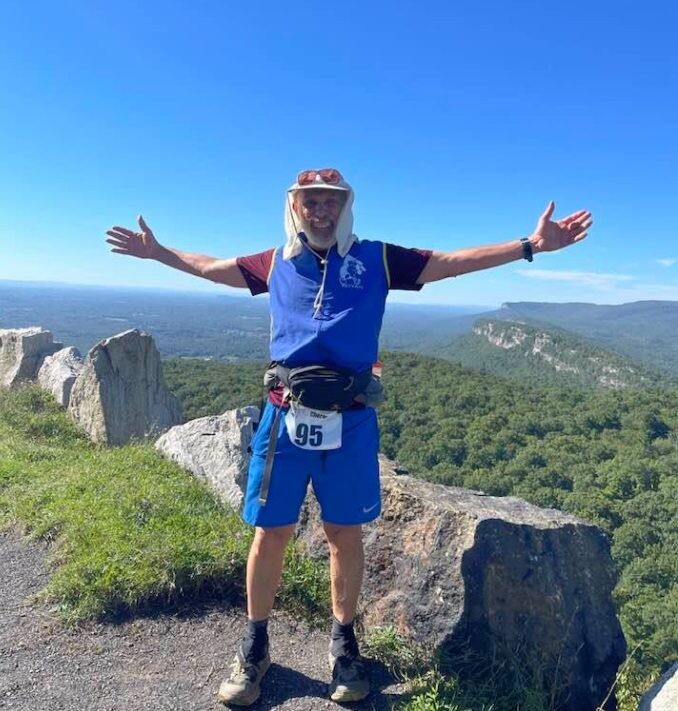
Cherns is excited about the growing popularity of ultra events, particularly in the women’s field. “There are more and more women doing the sport, and that’s fantastic,” he says. That growth has fuelled a rapid improvement in performances as well, and over the past several years, records have fallen time and time again. “Before at an ultra race you’d have maybe 20 people coming out,” says Cherns. “Now you have 150 people coming out.”
Cherns attributes a lot of this growth to the spiritual side of ultrarunning that you don’t get with any other sport or running distance. “When you go these great distances, whether it’s 100K, 200K — more than the marathon — it becomes much more of a spiritual journey,” he says. “You feel more alive when you do an ultra, you feel more vibrant.” He explains that because you’re left with yourself during an ultra, you have more of an opportunity to connect with yourself on a mental, emotional and spiritual level.
“When you run a 5K or 10K, it’s a physical effort,” he says. “When you run 50K or 100K, 10 times the distance, it becomes much more than just physical. It becomes an emotional test, a mental test, it becomes a journey.”
He also credits the ultra community for fuelling the growth of the sport, noting that unlike a marathon or other road races, ultras are less about the competition and more about the camaraderie between yourself and other runners. You’re no longer running against people, you’re running with them.
As he nears his 65th birthday, Cherns notes that he no longer has a 30-year-old body (even if his mind thinks he does). His goals have shifted as he’s gotten older, from performance and placing to getting across as many finish lines as he can. “I no longer run to compete, I run to complete,” he says. “But if I can compete, then great.”
Cherns’s goal is to have the longest ultrarunning career in history. The record is 59 years, which means he’ll have to continue competing in ultras at least until he’s 81. “I did my first ultra at 21 — can I do this for 70 years until my 90s?” he says. “That’s what I’m after.” Cherns also has his eye on crossing the 100,000 km mark in ultra races, and completing more than 500 (or 600, or 700) ultras.
“I enjoy each and every journey. Each race is different and presents a different challenge,” he says. “But to me, from the goal point of view, that’s what I’m after.”
(11/30/2021) ⚡AMPby Brittany Hambleton
US Track double olympian Emmit King shot to death
A former University of Alabama track star and Olympian was one of two men killed in a shootout Sunday afternoon in Bessemer.
The Jefferson County Coroner’s Office on Monday identified the men as Emmit King, 62, and Willie Albert Wells, 60.
King was a retired track and field sprinter who twice was a member of the American relay team for the Summer Olympics in 1984 and 1988, but he did not compete.

A Hueytown High School graduate, King competed for Jefferson State Community College and the University of Alabama and was the 1983 NCAA 00 meters national champion.
Also in 1983, he medaled in the inaugural World Championships in the men’s 100 meters.

The gunfire erupted about 3:40 p.m. in front of a house in the 800 block of 22nd Street North.
Authorities said King and Wells knew each other and were arguing back and forth when both pulled guns and fired.
Wells was pronounced dead on the scene at 3:59 p.m. and King was taken to UAB West where he was pronounced dead at 4:40 p.m.
The deaths mark Bessemer’s 26th and 27th homicides this year. The city ended 2020 with 18 homicides.
In all of Jefferson County, there have been 185, surpassing last year’s 183 homicides with more than a month to go in the year.
(11/30/2021) ⚡AMPby Carol Robinson
What not to eat after a run, avoid these foods when choosing your post-workout meal
Refueling after a run is important, but that doesn’t mean you just shovel anything and everything into your mouth as soon as you walk in the door. Some foods will make you feel satisfied and re-energized, while others may leave you sluggish, with an upset stomach or worse.
Figuring out what works for you might take some trial and error, but if you’re still trying to figure it out, you may want to steer clear of the following foods.
Nothing tastes better than a big slice of pizza after a long run, but unfortunately, it’s not your best post-run food option. While it can have a good mixture of carbohydrates and protein (depending on what toppings you choose), the problem with pizza is that it can be pretty greasy. When you run, there’s less blood flow to your gut, which can make digestion more of a challenge. High-fat foods can be harder to digest already, so immediately after a run, you may want to give your gut a break and avoid the cheese.
Spicy food

Like high-fat foods, spicy foods can also be harder to digest, so you might want to leave the hot sauce off of your post-workout meal.
Carbonated beverages
This includes pop, beer and soda water. Again, the bubbles can be hard on your stomach, and they’ll fill you up too quickly so you won’t be able to drink as much water. It also might ruin your appetite for your post-workout meal. You’re better off having flat water (or a sports recovery drink first) and then moving on to the bubbles once you’ve re-hydrated and re-fueled if you desire.
Fried foods

Again — heavy, high-fat foods can be hard to digest, so save these for a few hours later when your stomach has had time to settle.
Fruit smoothies
Yes, this one may come as a shock to you. A lot of runners swear by their post-run smoothie, but it might not be a good idea for everyone because of the high fructose content. Fructose is the sugar found in fruit, and when you make a smoothie, you tend to consume more fruit, and thus more fructose, than you would if you were eating it whole. Fructose can be hard on your stomach, so if you’re feeling gassy or uncomfortable after your post-run smoothie, you may want to consider switching to whole fruit instead.
Just water
Yes, you should replenish your fluids after a workout, but if that’s all you’re consuming after a run you’re missing a major opportunity to kick-start the recovery process. Your metabolic rate remains elevated for about 30 minutes after your run, so if you eat something within that 30-minute window, you can dramatically improve your recovery and reduce muscle soreness.
(11/29/2021) ⚡AMPby Brittany Hambleton
How to Properly Prepare for a Cold Run
Winter is almost here. It feels wild to think about. You were just finishing your summer long runs, drenched in sweat and tired as a dog, and now you’re shivering the second you step out the door and see snowflakes falling from the sky. How do you stave off those shivers? How do you properly prepare for a cold run?
While your first inclination may be to say, “Screw this!” and head back inside and bundle up under a blanket, you should get back outside. Running in the cold is actually beneficial for overall health, giving you headspace among those cold, clustered winter months. But it’s only good for you as long as you properly prepare for your run.
From warming up inside to wearing medical alert jewelry while out of the house, here are the simple ways you can prepare for a cold run — and stay safe while doing so.
1. Warm up inside
The best thing you can do prior to a cold-weather run is to warm up indoors. A pre-run warm-up should always be an essential, as it will help loosen up your muscles to prevent injury. This should involve stretching, but maybe not the type you’re thinking of.
Static stretching can actually hurt your muscles, as you’re essentially stretching them while still stiff. Instead, you should do dynamic stretching, stretching that involves full-body movement. This will help get your blood pumping, which, in turn, will help your muscles loosen up prior to your run to come.
After doing some dynamic stretching, you can even hop around for a bit. It may sound strange, but it will put some light stress on your muscles. By hopping around for a few minutes, you can properly prepare your muscles for the miles you intend to take down.
2. Lace up with waterproof shoes
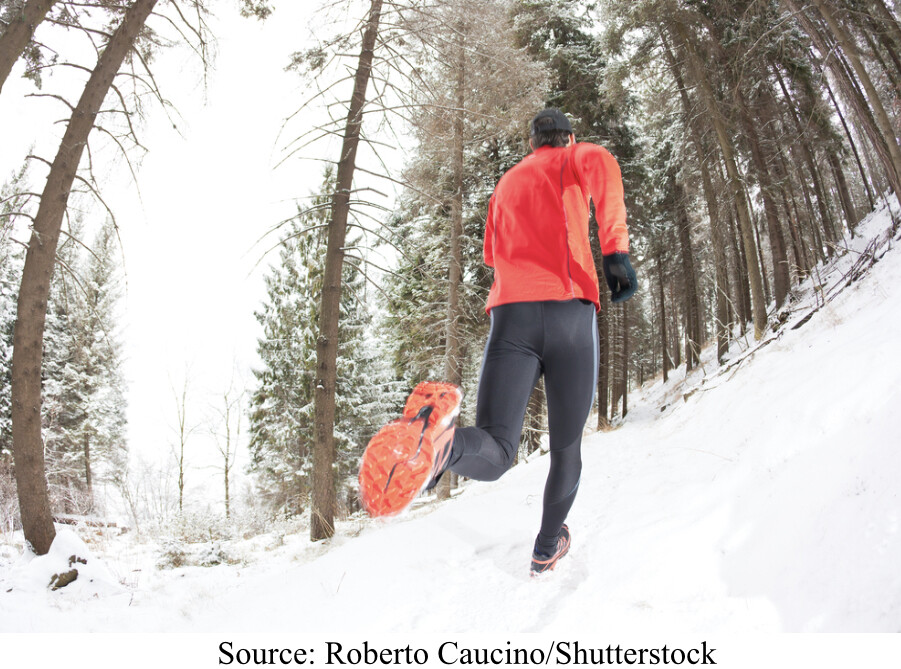
Runners know that proper footwear matters. But shoes designed for your gait and pronation only go so far in the winter. You also need shoes that are built for winter weather.
Winter running shoes tend to have two features:
● Rugged outsoles designed for added traction
● Waterproof yet breathable material to keep your feet cool and dry
Traction is a must, especially with black ice out on the road. While you may love wearing your Hoka Cliftons year round, you’re going to want a shoe that provides more friction while running on roads and trails in winter.
3. Remember to bundle up
You also need to dress the part to tackle a cold-weather run. Windproof running clothes are your best option, as they’ll protect your skin against that stiff, sharp wind without causing you to overheat, as waterproof clothing tends to do. This can include a windproof jacket and windproof pants.
However, you should have a waterproof jacket and pants for snowy weather. Moreover, merino wool socks will go a long way to keeping your feet warm and dry during the winter. And even if your feet happen to get wet, the wool socks will help pull moisture away from the skin, keeping major calluses at bay.
4. Don’t overdress
While you may feel compelled to throw on seven layers for that 15 degrees Fahrenheit day, you should reconsider. A good rule of thumb to remember is to dress as if it’s 10 degrees Fahrenheit warmer out than it is.
Why? Your body is going to warm up once you start running. That means what felt comfortable once you first left the house will suddenly feel like too many layers after running just two miles. For instance, for a 30-degree day, you’ll still want to wear a hat, gloves, thicker socks, windpants, a t-shirt and a wind jacket. However, you won’t need that extra long-sleeve shirt above your t-shirt and below your jacket.
5. Remember your hat and mittens
Now that we mentioned it, here’s your reminder: don’t leave home without a hat or mittens. The problem with running in cold weather is that your extremities are open to the surroundings. A hat and a pair of gloves can really protect you.
Better yet, it’s not a problem if you have to ditch them at some point — like if you feel your head or hands sweating. You can just take them off and either carry them or stuff them in your pants or jacket. Simple as that.
6. Hydrate before
Just because it’s cold doesn’t mean you’re not going to sweat. You still need to hydrate before your run. While you may not be sweating as much as you do in the summer, your body is still going to be burning calories. Honestly, it might be burning more than in the summertime, especially if you’re still running at the same mile-pace, as your body will be using energy to keep you warm.
So drink a glass of water at least 30 minutes before your run. While you’re at it, have a carb-loaded snack to get that kick of energy you need.
7. Wear medical alert jewelry
Running in the winter does pose some dangers. There’s frostbite, black ice, cars losing traction and more. You shouldn’t leave home without a personal safety device. For runners, that’s as simple as wearing an Apple Watch medical alert ID. If an accident were to happen, you’ll be able to inform strangers of your name and medical information, keeping you safe in the face of a medical emergency.

8. Know your route ahead of time
Planning your running route ahead of time is a must, especially for the winter. Knowing where you’re going ahead of time will allow you to safely finish your run — avoiding streets you shouldn’t be going down, roadways that may be dangerous and more. Moreover, you can tell family and friends what route you’ll be taking, in the event that you get injured and you can’t get in touch with them.
This winter, take your time before heading out the door for your cold-weather run. Make sure you’re dressed properly and have everything you need. After that, happy running!
(11/29/2021) ⚡AMPEpic Jacob Kiplimo joins world record class
Jacob Kiplimo is trending in Uganda and the global athletics circles. And his name, like counterpart Joshua Cheptegei, could remain on the lips of many for long.
A week after clocking 21, Kiplimo broke the 21km world record (WR) at the Lisbon Half-Marathon in Portugal on Sunday to put the icing on the celebration.
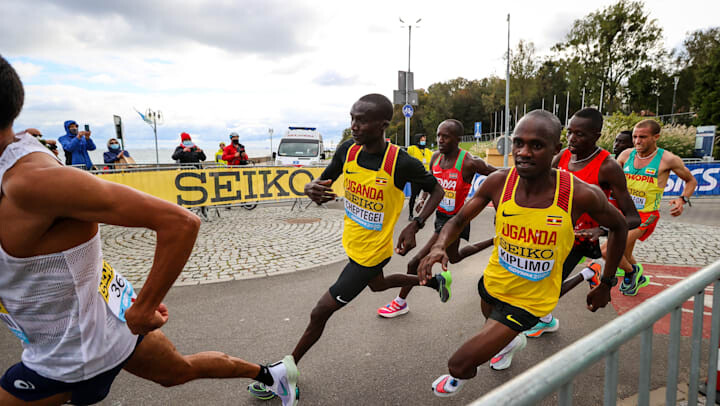
Clad in his customary orange and blue bib, Kiplimo stunned the elite field when he exuded calm authority before crossing the white tape in a time of 57 minutes and 31 seconds.
“I’m so happy,” said Kiplimo, who ran solo up-front for the second half of the race, beat Kenyan Kandie Kibiwott’s previous WR mark set in Valencia, Spain, on December 2, 2020, by a second.

Then in Valencia, Kibiwott won in 57:32 and Kiplimo was second with 57:37e. But on Sunday, Kiplimo, running only his third career 21km race, obliterated Kibiwott’s mark in style.
“I want to say thanks to everyone who has supported me and cheered me,” the youngster from Kween District said.“This is the thing that I have been looking for.
Remember last year when we were in Valencia, I missed the WR by a few seconds. I knew I was going to break it. My training for the last two weeks was perfect,” he added.
(11/29/2021) ⚡AMPby Allan Darren Kyeyune
EDP HALF MARATHON OF LISBON
EDP Lisbon Half Marathonis an annual internationalhalf marathoncompetition which is contested every March inLisbon,Portugal. It carries World Athletics Gold Label Road Racestatus. The men's course record of 57:31 was set byJacob Kiplimoin 2021, which was the world record at the time. Kenyanrunners have been very successful in the competition, accounting for over half of the total winners, withTegla Loroupetaking the...
more...St. Jude Memphis Marathon is back for 2021
After being virtual for 2020, the St. Jude Memphis Marathon is back for 2021.
Saturday, December 4th, participants will have two options on how they want to join in: in-person and virtual. There are different distance options to choose from:
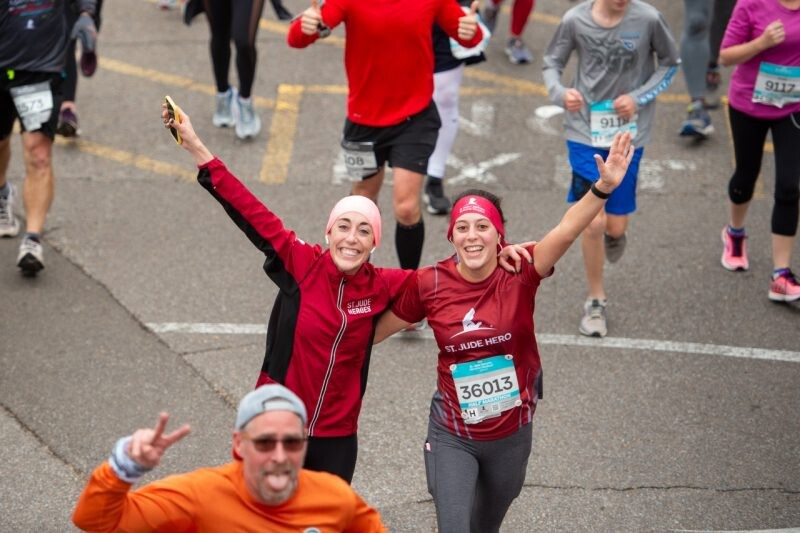
Complete a marathon, half marathon, 10K, or 5K on race day
2-Race Distance Challenge: complete two distances (marathon, half marathon, 10K, or 5K) in the months leading up to and on race day
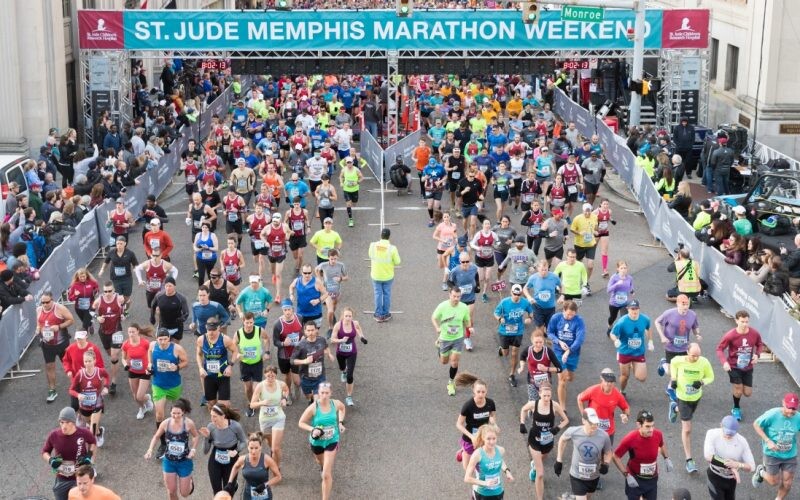
4-Race Distance Challenge: complete every distance (marathon, half marathon, 10K, and 5K) in the months leading up to and on race day.
These COVID-19 safety protocols will be in place for all participants, guests, volunteers, and partners:
Be fully vaccinated against COVID-19 or have a negative COVID-19 test result that has been administered between Wednesday, Dec. 1- Friday, Dec. 3
Wear a mask during the following:
Health & Fitness Expo
Platinum Premier Welcome Party
VIP Reception
St. Jude Heroes Pasta Party
St. Jude Heroes Hospitality
Other event weekend activities as required by event officials
Be free of COVID-19 symptoms within 10 days of attending St. Jude Memphis Marathon Weekend
St. Jude Memphis Marathon Weekend is the hospital's biggest single-day fundraising event. Last year, the all-virtual event raised $7.5 million. The goal for this year's event's historic 20th anniversary was set at $9 million, but St. Jude Heroes and generous donors have rallied together and are already on pace to surpass that goal and reach $12 million, nearly $5 million growth year over year.
(11/29/2021) ⚡AMPby Hannah Cain
St Jude Memphis Marathon
The St. Jude Memphis Marathon Weekend is more than just a race. It's an action-packed weekend of fun, food and entertainment! Start and finish lines two blocks apart and near a dozen Downtown hotels, lots of restaurants, and Beale Street, the Memphis entertainment district. Dynamic finish in AAA baseball stadium, with use of locker rooms and shower facilities. Wave start,...
more...The Best Track Workouts to Improve Your Running
Whether you want to get faster or improve your overall fitness level, speed workouts are one of the most effective ways to accomplish your goals. These 4 best track workouts will improve your running speed and efficiency and make you a stronger athlete. An added bonus is speed workouts burn more calories per minute of exertion than regular slow runs, and you will notice an improvement in your overall fitness level and conditioning as well as weight loss benefits.
Track Intervals
Intervals are a classic speed workout that can be adapted for any level of runner. Whether you’re training for a marathon and running 800-meter intervals or are just beginning running and doing 100-meter sprints, speed workouts can be adapted to any runner’s needs. You can even do interval workouts on the road or trail if you don’t have access to a track. Interval workouts involve measured bursts of speed mixed in with measured recovery time.

Here is a sample interval running workout that can help any runner get faster and stronger:
400-METER INTERVALS
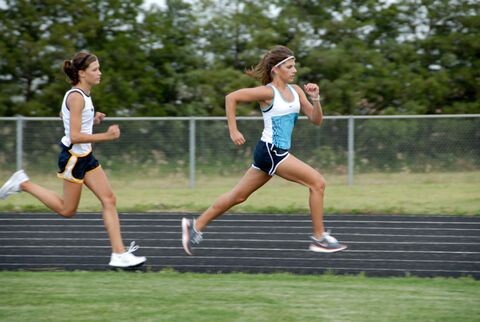
This workout is easiest to do on a track — 400 meters is one lap on a standard outdoor track. You can, however, use your smartphone running app or running watch to measure out .25 of a mile for each 400-meter interval if you are running on the road or trails. Be sure to record your times for your interval workout and you will see your speed improve as you repeat the workout each week.
Warm-up - Run 800-meters or 1/2 of a mile at a relaxed pace, jogging.
Speed Interval: Run 400-meters (one lap on the track or .25 of a mile on the road) at 80-85% effort level. This pace should make you feel winded by the end and like you are going considerably faster than your regular running pace. You will not be able to talk at this speed as you run.
Recovery: Jog or run slowly for 400-meters for active recovery. This will allow you to catch your breath and reset before the next speed interval.
Repeat the speed interval-recovery cycle, alternating one recovery lap between each fast lap. If you are a beginning runner, do 4 fast 400-meter intervals and 4 recovery laps for your first speed workout. For intermediate runners, start with 6 speed intervals. You can run this interval workout once a week, adding one more speed interval every 2 weeks to build up your endurance. You can also increase the interval distance to 800-meters or even 1-mile intervals if you are training for a long-distance race like a marathon.
Cooldown - Run 800-meters or 1/2 of a mile at a relaxed pace, jogging. Stretch.
Tempo Runs
Tempo runs are a staple speed training workout for long-distance runners. Tempo runs help improve your body’s ability to run faster for long stretches of time and adapt to lower oxygen supplies as you run. These runs are great preparation for racing.
What is a tempo run, you may be wondering? A tempo run — or lactate threshold run — is a running workout at a pace at which your body produces and clears lactate (a metabolic by-product of exercise) at a close-to-equal rate. In layman’s terms, a tempo run is a pace your body can run and keep breathing and working without cramping up or getting too winded to keep going. A tempo run is not an anaerobic workout like sprinting but instead trains your body to be able to keep pushing and performing at higher levels for longer distances. Whether you are a 1-mile track runner or a marathoner, tempo runs are excellent training tools to make you a better, more efficient runner.
HOW TO DO A TEMPO RUN
Tempo runs are the middle ground of running, falling between easy, slow runs and intense speed intervals. To determine your tempo pace, add 24 to 30 seconds per mile to your 5K PR or goal pace. If your best friend 5K time is an 8-minute-mile pace, for instance, your tempo run pace will be 8:30 per mile.
For your first tempo run, warm-up for 5 minutes running at a relaxed, easy pace. Then do 20 minutes of running at your tempo run pace. Cool down for 5 minutes of easy running and then stretch. For the best results, do one tempo run a week, and you can gradually build up your temp running time to meet your race training distance goals, building up to the maximum of an hour of tempo running if you are training for a long-distance race such as a half marathon or marathon.
Fartleks
Fartleks - Swedish for speed play - offer a flexible, fun speed workout that can be adapted to any running level. Fartleks are a great running workout for beginners as they can be very short and informal and are not intimidating.
If you are wondering what the heck fartleks are, let me help — fartleks are short bursts of speed during a regular, easy-paced run. The speed bursts can vary, often using something such as a pole or street light ahead to run fast toward, and then slow down once you pass the landmark.
HOW TO DO FARLEKS
To do a fartleks workout, go for a 3-4 mile, relaxed pace run. After your first 5 minutes of running, pick a spot in the distance and run fast toward it. If you are on the track, you may run the long straight away fast for your fartlek. You will be running at about 90-percent effort level, faster than your 5K race pace. Usually, this fartlek interval should be for about 1-2 minutes in duration. Then return to your regular, relaxed base run pace. After a few minutes, pick a landmark — or stretch of the track — to run fast toward again. Do 5 to 10 fartleks during your workout. Your fast running time should total 10 to 12 minutes by the end of your run.
Fartleks are a great workout to prepare for more measured interval workouts. If you are a beginner, do one fartlek workout a week to start.
Strides
Strides are a great, short, speed workout you can tack on to the end of an easy run day. Strides help train your body to run at higher speeds even when your body is already fatigued from running. They also help improve your running form and efficiency.
Strides are a running drill that you run for short bursts of speed with an exaggerated running form. You can run strides after an easy run to work on your form and speed. Strides are short, 20-30 second accelerations that you can plug into your weekly training program.
Here is how to run strides:
Find a flat place to run 100 meters. This can be the straightaway part of a track, or on a flat road.
Begin running your stride by taking short steps (or strides), and pumping your arms up and down, in an exaggerated motion. As you speed up, your leg turnover will get quicker.
Begin running at an easy, relaxed pace, and build up your speed as you run.
You should be running at about 95 percent effort level by the end of your stride. Your stride should only take 20-30 seconds so you may get winded at the end but will recover quickly.
Do 4 strides for your first stride workout and build up to doing 6 or 8 strides.
Do your stride workout after an easy run or regular base run.
Speed Workout Tips
When you do speed workouts, it’s important to give your body time to rest and recover so your muscles can rebuild and repair. If you do a speed workout, take a rest day or do an easy run the following day for recovery. Do not do speed workouts two days in a row.
Make sure you stay hydrated before, during, and after your speed workouts. This will help prevent muscle cramps and speed up your recovery time.
Consult your running coach for a training plan and speed workouts that work best for your fitness level and running goals.
(11/29/2021) ⚡AMPby Marnie Kunz
Holiday Gift Guide for All Runners
The holidays are quickly approaching! What are you getting for the runner in your life?
Runners love new gear. From new shoes to new shorts to new carbohydrate gels, they love trying out the latest and the greatest. Not only does it provide something new to their routine, but it gives them a new experience that may enhance their daily runs altogether.
But what does the daily runner want? What makes the perfect gift for any runner? From wool socks to foam rollers to medical alert bracelets, here’s the essential holiday gift guide for all runners.
High-quality running socks
Let’s get real for a moment: cotton is unpleasant for runners. Why? It holds onto sweat and it’s rough to the touch. Ever see a runner with bloody nipples? It’s most likely caused by a cotton shirt. The same goes for cotton socks. Find you’re finishing every run with painful blisters? Your socks may be to blame.
That’s why runners love high-performance running socks — socks made with blister-resistant materials like mohair and merino wool. Some of the most popular brands include Balega socks and Feetures merino wool socks.
Wind vest, jacket and pants
No one likes a stiff breeze. It’s unpleasant and sends a shiver up your spine. It’s best for runners to avoid them at all times, which makes wind vests, jackets and pants ideal for the daily runner.
Spikes
Winter runners are always in need of added traction. Whether on trails or roads, they need to do all they can do to avoid a slip and fall, which could cause serious injury. The best way to avoid them altogether is with a pair of spikes, like Kahtoola NANOspikes Traction System. Worn around the shoe, it increases friction between shoes and the ground, helping to keep slips and falls at bay.
Illumination vest
Running in the early morning or late at night? You need to remain seen by oncoming motorists. Illumination vests make that easy. The simple construction worker vest can easily solve this, making it easy to stay seen while out on the roads in the dark.
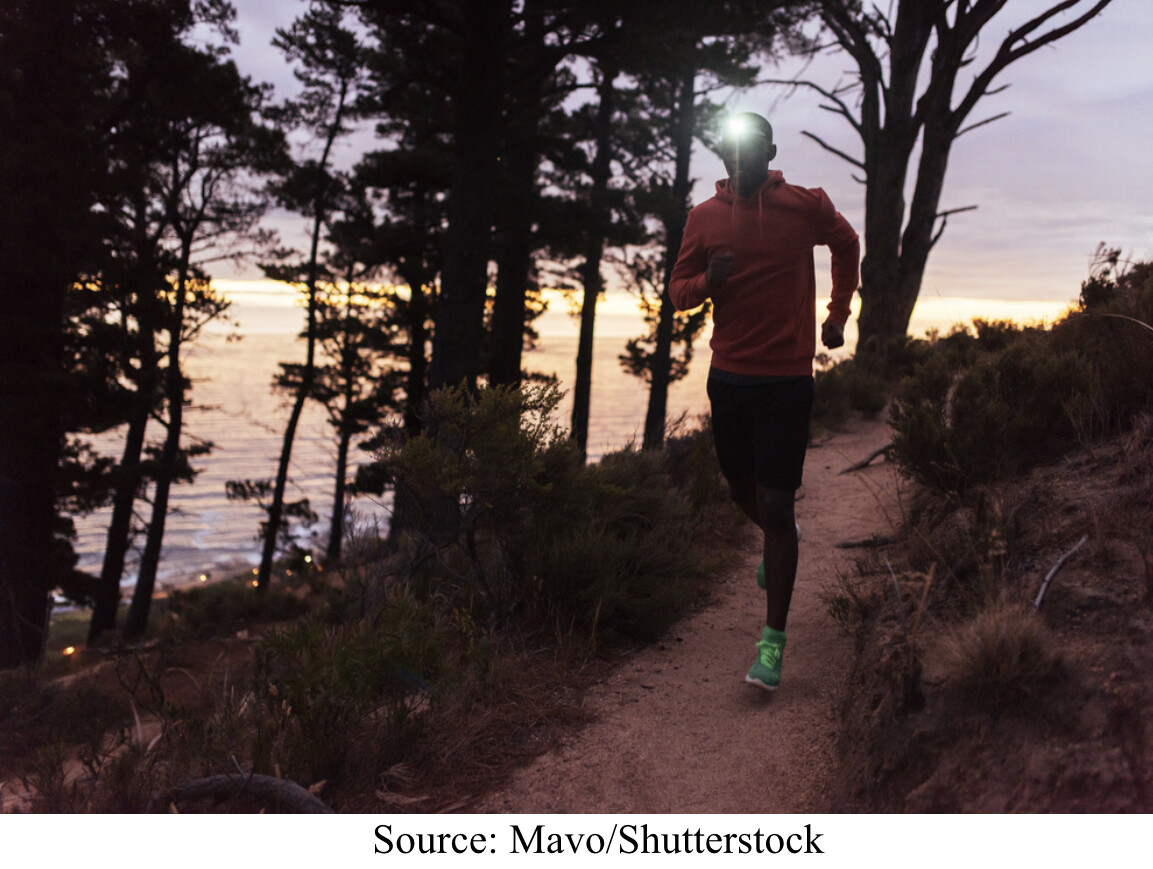
Headlamps
Similarly, a runner should be able to see where they’re going, too. Headlamps make it easy to see the ground in front of them, from the ends of sidewalks to frost heaves to potholes. Furthermore, they enhance a runner’s visibility to oncoming motorists, as a shining light will capture more attention than a reflective vest or LED-illuminated vest.
Hydration bottles
Long runs require hydration and no runner wants to hold onto a Poland Spring water bottle in their hand. Instead, let them simply carry it with them. Handheld hydration bottles make it easy to bring water while on the go. Most bottles feature a small strap which wraps around the hand, which saves a runner from having to grip the bottle their entire run.
Foam roller
Running pains happen. Sometimes it’s a strained muscle, other times it’s a pained knee caused by a tight hip and glute. Foam rollers make it easy to break up muscle knots, as the runner can glide over the roller at their own pace, slowly working out knots so as to loosen muscles.
Gel packets
Running burns calories, particularly sugars and carbohydrates. After enough time, the body becomes depleted, running out of energy. When that happens, a runner hits the wall. GU Gels are trusted by many runners, as they provide the carbs and sugar they need to continue performing. With gels, every long run gets a little easier.
Nuun Sport Electrolyte Tablets
Hydration matters, but sometimes you need some extra energy to keep your pep in your step. Nuun Sport tablets are a great option for runners, as they provide essential sugars, salt and carbohydrates to fuel a high-intensity workout. Simply tossed into a bottle of water, they dissolve over time, infusing with the water to provide the nutrients a runner needs to keep on running.
Bluetooth earbuds

Many people rely on music to fuel their runs. Traditional earbuds don’t cut it. The wires get in the way and sweat can cause them to short out. Don’t take your chances. Cut the cord and upgrade. Bose Sports Earbuds are a reliable option that many runners love. As bluetooth headphones, they simply connect to a runner’s phone without requiring any cables. Further, they’re designed to be protective against sweat, meaning a runner is able to sweat as much as they like, all with no problem.
Medical alert bracelet
You never want to take a risk with your personal safety. Rather than taking your chances, you can carry your personal information with you wherever you go. In the event of an accident, a medical alert bracelet will inform strangers and EMS personnel of your name, information and medical history — which could be a lifesaver in a dire emergency.
Runners can either wear a traditional bracelet or can get an Apple Watch medical alert bracelet which can take the place of their basic Apple Watch bracelet.
Polarized sunglasses
Don’t let the sunshine get you done. Runners can benefit from sunglasses to avoid added fatigue. It can also help a runner see more clearly, whether out on the open road or on a bright, snowy day. Oakley sports sunglasses are a great option for high-end sunglasses, while Goodr running sunglasses are an affordable option everyone can rely on.
There’s more out there for runners, though. This list is just the tip of the iceberg. From running shoes to GPS watches to recovery sandals to moisture-wicking beanies, you can continue your search for the best gift for the runner in your life. Looking for something quick? One of the above gifts is sure to put a smile on any runner’s face.
(11/28/2021) ⚡AMPKotut and Maru claim marathon crowns in Florence
Kenya’s Cybrian Kotut and Ethiopia’s Tsehay Alemu Maru took the honours at the 37th edition of the Asics Firenze Marathon, a World Athletics Label road race, on Sunday (28).
Kotut crossed the finish line in 2:08:59, recording the second fastest time in the history of the Florence Marathon. The 29-year-old missed James Kutto’s course record by 17 seconds. Samuel Lomoi from Kenya finished second, improving his PB from 2:12:14 to 2:09:54. Olivier Irabaruta from Burundi completed the podium, taking third place in 2:10:13 ahead of former Eritrean record-holder Oqbe Kibrom Ruesom.
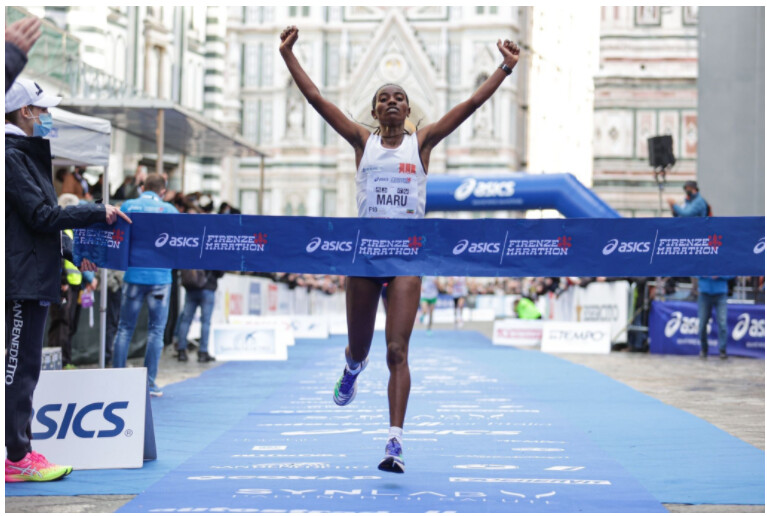
The leading pack – featuring Kotut, Salomon Soy, Lomoi, Irabaruta and Ruesom – set off at a conservative pace in the early stages of the men’s race and went through 10km in 31:16, 15km in 46:27 and 21km in 1:05:09.
The race really started at 30km, when three runners – Lomoi, Kotut and Kibrom – remained in contention. The leading trio reached the 30km mark in 1:31:48.
Lomoi and Kotut made the decisive move at 35km and ran neck and neck until 40km. Kotut launched his final sprint with 2km to go to win by 55 seconds over Lomoi.
Kotut won the Paris Marathon in 2016 in 2:07:11 and finished third in Frankfurt in 2:07:28 in the same year. He also set a half-marathon PB of 59:12 in New Dehli in 2012.
In the women’s race, Maru set the fourth fastest time in the history of the women's event in Florence with 2:27:17, beating her compatriot Megertu Ifa Geletu by four seconds. Kenya’s Mercy Kwambai finished third in 2:27:32 ahead of Morocco’s Souad Kabouchia (2:27:49).
Six runners were still in contention until 35km: Naomi Tuei, Maru, Flomena Cheyech Daniel, Kwambai, Geletu and Obse Abdeta Deme. They went through 15km in 51:53, 21km in 1:13:14, 30km in 1:44:42 and 35km in 2:02:41, with four runners left in the leading group at 40km.
Maru and Geletu ran together over the final 2km in a close race, while Deme and Tuei dropped back. Alemu unleashed her kick in the final kilometre to win in 2:27:17, as four women dipped under 2:28 for the first time at the Florence Marathon. Geletu with 2:27:21 and Kwamboi with 2:27:32 joined Maru in setting personal best times.
(11/28/2021) ⚡AMPFirenze Marathon
This is Firenze (Florence) Marathon! Along the way you will be surrounded by centuries of art, history and culture, a unique emotion that can only be experienced by those who run in Florence. Thousands of sports people and enthusiasts from all over the world come to participate in this classic race on the last Sunday in November. The route takes...
more...These Wisconsin High School Cross-Country Runners Just Want to Race Like Everyone Else
Susan Bergeman pushes her brother Jeffrey in a chair during every race, but their results don’t count.
Siblings Susan and Jeffrey Bergeman, both freshman at Chippewa Falls Senior High School in Wisconsin, run every cross-country race together.

With Susan pushing Jeffrey in a modified racing chair, they start behind everyone else, and they are technically not allowed to pass anyone who isn’t walking. And when they cross the finish line, their time isn’t included in the results.
It’s a unique situation, but one thing keeps them going—they both love to run.
“I like running. Jeffrey likes running. Running is more fun to do together than on your own,” Susan, 15, told Runner’s World. “This was a way that both Jeffrey and I could be involved in a school sport and it was something we could do together.”
When Jeffrey, now 15, was 22 months old, he suffered sudden cardiac arrest. His brain was deprived of oxygen for 20 minutes, leaving Jeffrey with severe brain damage. He would be diagnosed with cerebral palsy.
Unable to compete on his own in athletic endeavors, Jeffrey joined his parents, Jess and Jordan, in a modified racing chair at races they did, ranging anywhere from 5Ks to marathons and triathlons. Susan also loved to run, and, inspired by her parents, she decided wanted to run with Jeffery, too.
Susan and Jeffrey, who are 10 months apart in age, ran their first 5K together at 9 years old in June 2016. A couple of years later, they joined their middle school cross-country team. Since then, with a few exceptions, Susan and Jeffrey have run every practice and every course together, and have participated in preseason runs, summer training, and team-bonding activities together.
To their coach, teammates, other teams, and spectators, they are just part of the team. Yet despite finishing every race, they have not once been declared finishers.
When Susan and Jeffrey started running in middle school, the Wisconsin Interscholastic Athletic Association (WIAA) didn’t have an established division for runners with disabilities who wanted to race. So the WIAA created a classification called a ‘duo team,’ the first and only in the state, for Susan and Jeffrey, and established guidelines that they had to follow, citing safety concerns because of the chair. These guidelines state that they can only pass participants who are walking or injured, and even if they do pass them, they must wait just before the finish line until all other runners finish before they can cross. They also cannot be included in the final results.
“The rule isn’t fair because I should be able to run my race safely and at the pace that I can run without having to slow down just because someone in front of me is a slower runner,” Susan said. “That isn’t what racing is about. I would never try to pass someone if there wasn’t enough space to safely do so.”
The Bergemans understand having guidelines put in place, but, as Susan puts it, “the rules should make sense and be fair.”
“We’re just out there running like everyone else,” Susan said. “Yes, my brother needs a wheelchair to make that happen, but other than the wheels and an accessible bus to get to meets, there really aren’t any other special accommodations that we need.”
The Bergemans’ parents hoped these guidelines would be adjusted after their children proved in middle school that they could compete safely together alongside other runners. But the rules haven’t changed, which means their efforts to advocate for them—and any other duo teams that come in the future—hasn’t stopped. They want to create a pathway for other runners like them who want to compete but are facing bureaucratic hurdles in the state of Wisconsin.
“Our son, who lives his life everyday with disabilities, does not want to be viewed as an ‘exhibit’,” Jess told Runner’s World. “He wants to be viewed as a Wisconsin student athlete, like any other student without disabilities in the state.”
Susan and Jeffrey, who ran a two-minute 5K PR of at the last race of the season, do admit to going around the rules a bit, too. They pass other runners and crossed the line ahead of others. This wasn’t to break the rules for breaking the rules sake; it was to prove a point that they could safely race, and they should be included as official finishers.
“[Susan and Jeffrey] have spent the last few years trying to break down barriers of ‘fear,’ ‘misunderstanding,’ and myths that this ‘might not be safe,’” Jess said. “There was a time when female athletes were not allowed to compete in cross country meets. It was wrong. It took time for society and the sport to grow, but growth and change were necessary and happened ... and it’s time for the WIAA and athletic associations nationwide to work on changing this.”
The Bergemans have the support of their school, their district, and even other teams in the area. In fact, the family is currently working with the local community and boosters to fund equipment needed for students with disabilities to compete, such as racing chairs, for the school to own that any student in the future can use. The Bergemans own the chair the family uses.
“The work of inclusion is not finished until the day when a student with disabilities joining a school team or club is as simple as a decision to make as, ‘Where do I sign up?’” Jess said.
So, Susan and Jeffrey continue to run together, helping each other to the finish line. Susan does that by pushing Jeffrey in the chair, and Jeffrey, despite being nonverbal, does that by vocalizing messages of encouragement via his way of communicating with Susan when she is struggling.
“It’s kinda cool to think that we might be leaving a legacy from what we are doing,” Susan said. “We hope that anyone that might come after us is able to compete without having as many obstacles or barriers to overcome. That they experience a welcoming team like we have, and that they get to have the experience and joy of racing together as equals. It would be fantastic to have more students try out duo team running before we graduate, so that we can race them.”
(11/28/2021) ⚡AMPby Runners World
The Fine Art of Balancing Running and Parenting
By now, just about everyone has seen the videos on TikTok or Instagram with a hiker in the backcountry using the same audio clip. All their friends are getting married and having kids, but not them - they're adventurers. The obvious flaw with these videos is that those inspired by the outdoors can still have kids, get outside and have epic days.
Do you have less time and other constraints? Sure, but getting out there could be more important than ever for parents. The benefits of the outdoors and exercise are proven to have a positive impact on anyone's life. With the new stresses of becoming a mom or dad and everything that goes into parenting, it can be even more of a necessity.
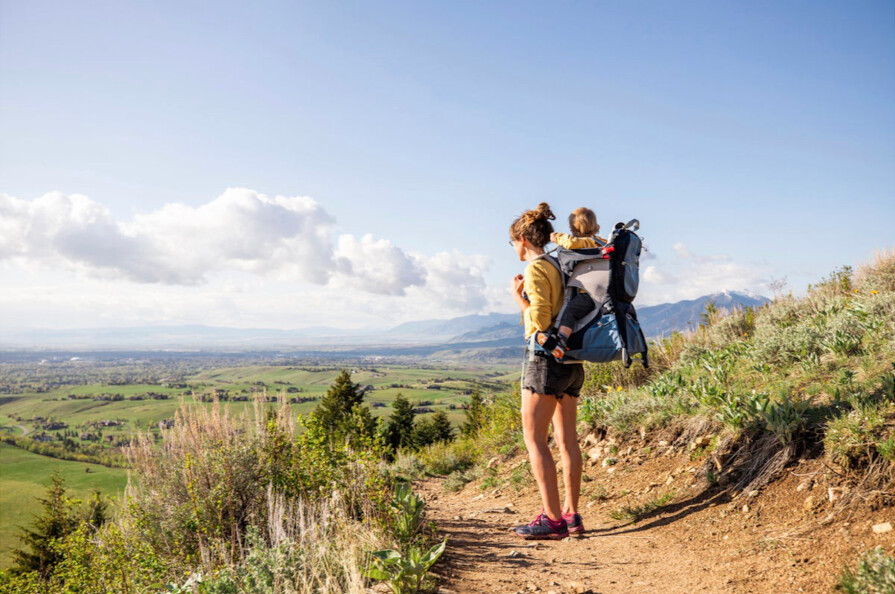
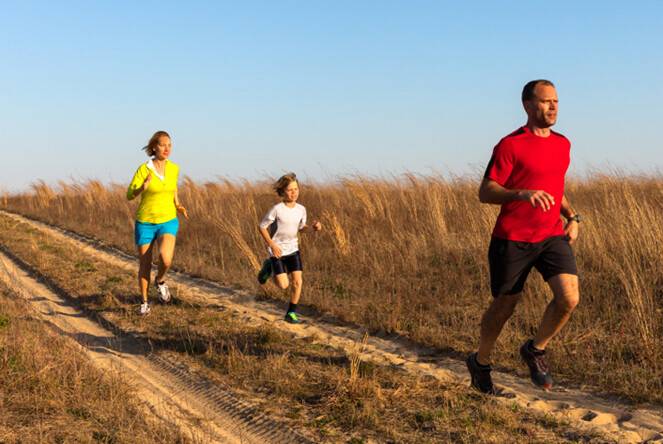
"I feel like trail running has been so beneficial because I like being in the outdoors. I am a type of person that likes to be alone to run, I think because I have four kids, which can be chaotic so it's kind of like my peace," says Verna Volker, a trail runner, mother, and advocate whose work with her own indigenous community has helped elevate her voice. "I feel like it's helped me get outside and just to be a better parent, a better mom to my kids and kind of release all my stress, and it feels like coming home."
Volker just completed her first ultra race, the 100K at the Javelina Jundred in Arizona. More than 60 miles is a challenge for anyone, but can be even trickier while raising four children.
"I was excited to accomplish the 100K, but at the same time, it was like the drive and the motivation behind it was just very spiritual for me," says Volker. "I think in that way it's been really beneficial. It also keeps me goal-oriented, because as a mom we oftentimes put our kids before ourselves. And so it really has driven me. This is my time, this is my goal."
Volker isn't alone in feeling that way. The science supports that running can help parents better navigate their lives.
"We say a lot that running makes you a more patient parent for sure. It makes you a more productive worker. It makes you a more loving spouse," says Dimity McDowell, the co-founder of Another Mother Runner, an online running group aimed at mothers and women, in general, to help provide resources for runners of all levels. "Basically, when you run you get out and do the thing that brings you joy and makes you feel competent and powerful."
McDowell's organization has created a community through social media and podcasts to reaffirm the benefits of running and how it can dovetail with all the challenges of parenting.
Keep Moving
Lack of sleep, poor eating habits and a host of other issues can impact new and longtime parents. It's easy to see how these lifestyle changes and demands can stifle an active lifestyle.
It also creates a new contradiction of being exhausted even though they haven't even stepped outside. A University of Pittsburgh study highlighted this paradox, following different groups of people to see how life changes led to lower levels of activity. The study found that single and married people more or less kept the same level of activity, but once people became parents, their activity level slowed.
Analysts found that many parents had an all-or-nothing approach, so if they couldn't be all in on their activities, they would opt for skipping them altogether. However, research shows that even a little bit of exercise can be beneficial, even if it's not as much as you hope to get.
"Running is obviously one of the most efficient forms of exercise. You can get out for a 20-minute run and feel great and you can leave from your front door. There's minimal equipment," says McDowell. "It gives you time to process things that may have happened, as far as trying to figure out a situation with your partner or with your kid. I mean, kids can be really challenging, right?"
The good news is that going for a run is more than just a healthy activity for a parent; it also provides an opportunity to be a role model for your children. Multiple studies show that more active parents raise more active children and instill a passion for getting into the outdoors that will make any outdoor-loving parent proud.
Getting Out There
With any lifestyle change there are new stress factors. Facing that stress is necessary to staying mentally healthy. Most of us have experienced the stress relief brought about by a great run, and that's not just in your head. The pandemic led to a surge in people getting outdoors for comfort and created plenty of data to back this up.
Outside Magazine highlighted one study that showed how nature positively impacts your body's chemicals, reduces stress hormones and lowers blood pressure. In the long term, it helps decrease the anxiety associated with significant life changes.
While not every runner has quick access to trails, those who can make time for it can benefit from being in nature.
"If it's available to you, go in without headphones and just really tune into the powerful being that you are and what you're feeling," says McDowell. "I think it's so grounding and so helpful and mind-clearing. I also think it's good for beginning runners. It can be really beneficial because you have to be focused on the trail in front of you."
Preparing for Uphill Challenges
When it comes to being an active parent, simplicity is key. Whether that's running down the road or training for an ultra, time can be one of the biggest challenges. And for many, that means early mornings, working with their partners to find time or even hiring a babysitter.
"It can be hard if you have a partner or a spouse who does not understand your need to run or your interest in running," says McDowell. "Running is more time away from family, so it's important to sit down and have a family meeting and say these are my workouts for the week. It's especially important if you are training for something that requires more time."
"My husband's really great about taking the kids. When they were younger, he would come home at lunch for me to run," says Volker. "Also, when they were younger, I would wake up early, like 4:00 a.m. Now, I still like waking up early and having time to run for me. Then I can get home in time for anything else."
As a parent, time spent running may be more exclusive, but at the same time, you get to enjoy new trail days with a small companion who's seeing the epicness of the outdoors for the first time.
"I think that it's just really fun when your kids start to join you and start running," says Volker. "Just give yourself grace. I always tell people I started running in the midst of motherhood, and I had three little boys, so you're tired, but somehow you make it through."
(11/28/2021) ⚡AMPby Trail Runner Magazine
The basics of off-season training
Cold temperatures and long, dark nights have arrived in the northern hemisphere. The autumn leaves are just about hanging on in their fiery, vibrant colours but winter feels almost around the corner.
For many athletes, the off-season is the time for consistent, comprehensive training which will form the foundation for the competition season. In some disciplines, such as cross country and road racing, competition continues through the winter, but nevertheless, this time of year is still useful for consolidating the basics. But what does this actually amount to in practice?

If you’re new to running, you may be wondering how to structure your winter training and how best to use this time. The key to making significant improvements in performance over time is consistent, specific training, and the winter is as good a time as any to do this.
I often get asked “how long should I train for to run a marathon?” This is akin to asking how long a piece of string is. You could probably run one off six months’ training, but to make meaningful, major improvements, you have to do consistent, specific training over a long period of time. So, what is the best way to organise and approach winter training?
I caught up with the coach of arguably the current ‘world’s best athlete’ to hear some answers to this question. That famous phrase is often used to describe the reigning Olympic decathlon champion, as the athlete who has triumphed in that ultimate, all-round test of athleticism. The coach of the current decathlon champion, Canadian Damian Warner, is Gar Leyshon, who has guided him since he was at school.
Warner won Olympic bronze in 2016, and two World Championships silvers and bronzes before finally landing the big one in Tokyo this August. Coaching Warner from a teenager who did no organised sport to Olympic gold at age 31, Leyshon has first-hand experience of producing a champion.
You might assume that Leyshon’s regime is complicated, very specialised and reliant on sophisticated sports science, but actually it is relatively straightforward. This is what I gleaned from the world’s best athlete’s coach about winter training.
First: variety is important.
Leyshon uses a range of activities over the winter, in order to include a wide variety of movements and to keep things interesting. This enables development of all the attributes athletes need – agility, mobility, strength, balance, speed, endurance and so on.
They do gymnastics for two months during the winter, play badminton (which mimics javelin) and basketball, plenty of throwing, medicine ball work, lateral movements and practising spinning. He doesn’t prepare too specifically for the actual events that make up a decathlon, but rather builds the athleticism which will enable good performance.
In a nutshell, he is preparing the fundamental physical capacity which will then enable the athlete to perform well in the specific events later.
Second: make the most you possibly can of your warm-ups.
Leyshon believes full engagement in warm-ups is vital, and laments the lack of it that he often sees. “Warm-ups are so important, and can become a key part of your conditioning,” he explains.
Warner has been performing the same set of mobility exercises for a decade. This menu serves as a checklist that every joint and part of his body is ready to work. Leyshon likens this to a pilot checking everything in the cockpit before a flight. Warner performs his checklist and warm up as slowly and deliberately as he needs to, until he is fully ready to train. Being a familiar routine, Leyshon says it has a calming effect.
Third: exert yourself!
Leyshon recommends training which involves full exertion, because this will stimulate adaptation and improvement. But it needs to be in small amounts to enable full recovery and be sustainable over time.
“We try to do the least amount of work you can get away with,” he explains. “I dislike the idea of athletes grinding out their training. It is important to work hard, but training shouldn’t always be a grind – I prefer specificity and quality over volume and we often find that less is more.”
The concept of limiting the amount of training you do is something I’ve become particularly interested in as I get older, and is counter-intuitive for many endurance runners. By forcing yourself to do less, it makes you think very carefully about the content, and it motivates you to perform a session to the very best of your ability. “Everything we do must have a deliberate reason and purpose,” he says. And in one of his best nuggets of wisdom: “I don’t believe in doing anything slowly.”
Fourth: make it fun!
Leyshon strongly believes that training should be fun and engaging. For example, he uses skipping, hopping and bounding exercises which require full concentration as they are technically demanding. Drills, like for many athletes, are a staple but he always makes them engaging by using fast drills and single leg exercises. “When you’re running, everything is single leg.”
He also creates obstacle courses with a variety of equipment such as boxes and hurdles, because they call for varying levels of effort, so the athlete is forced to manage their effort – a critical skill in all events, but especially for combined events, both in training and competition. Leyshon also uses games: “everything we do, we turn it into competition.”
In the context of fun, the dreaded 1500m comes up in conversation. The pain of endurance running is often evident as the decathletes battle through their final event. Warner has been quoted as saying: “I don’t think I’ll ever find love for that event.” So Leyshon again tries to make it fun, by drafting in training partners, and breaking down the 1500m into smaller chunks in training. Using fun and innovative approaches to training which an athlete dislikes is really valuable.
Finally, I asked Leyshon how he and Warner cope with the cold through the Canadian winter. During Covid lockdowns, they famously had to use an unheated ice hockey arena for training. “Learning to manage your internal temperature is a good skill for athletes,” Leyshon explains.
“We do a lot of training at 100% effort – you can’t pole vault, for example, at less than 100% effort. There is plenty of stop-start in our training, so regulating temperature and not allowing yourself to get cold between efforts are essential.”
Warner trains in multiple layers so that, depending on his activity level, he can put on or remove layers as necessary. “It’s always better to be too hot than too cold, and we sometimes repeat a bit of warm up if we get cold between efforts,” says Leyshon.
On top of managing the cold, Leyshon also insists that Warner does the very basics – food and sleep – properly to train successfully through winter. “Many athletes simply do not eat enough, and if you’re not sleeping eight or nine hours a night, you’re not doing your job.”
Overall, the key message I took away from discussing winter training with Leyshon was this: simple hard work on the basics, performed in a fun and engaging way while looking after yourself, will build the physical attributes you need to perform well and improve. This simple regime over many years has turned Warner into the world’s best athlete.
(11/28/2021) ⚡AMP
by World Athletics
Sore muscles? Your diet may be the problem
Experiencing some delayed-onset muscle soreness (DOMS) after a hard run or workout is normal, but constantly having achy or sore muscles is a sign that you’re not recovering well from your training. There could be a number of reasons for this (you’re doing too much, not sleeping enough, etc.), but there could be another culprit: your diet.
The food you eat has a significant impact on your recovery, so if you’re experiencing muscle soreness, make sure you’re not making the following mistakes.
Eating too few carbohydrates

When you eat carbohydrates, your body stores those sugars (glucose) as glycogen. When you exercise, that glycogen gets converted to glucose to produce energy. Inadequate carbohydrate intake before a run or workout not only impacts your performance, but can leave you tired and achy for days after a training session because of sub-optimal glycogen stores in your muscles.
An easy fix, then, is to increase your carbohydrate intake. Most experts agree that you should aim to consume 0.5 – 0.7 grams of carbs per pound of body weight within 30 minutes after you finish your run, which is about 70-98 grams for a 140-lb runner. One cup of oatmeal topped with a banana and one or two tablespoons of honey provides about 70-90 grams of carbohydrates.
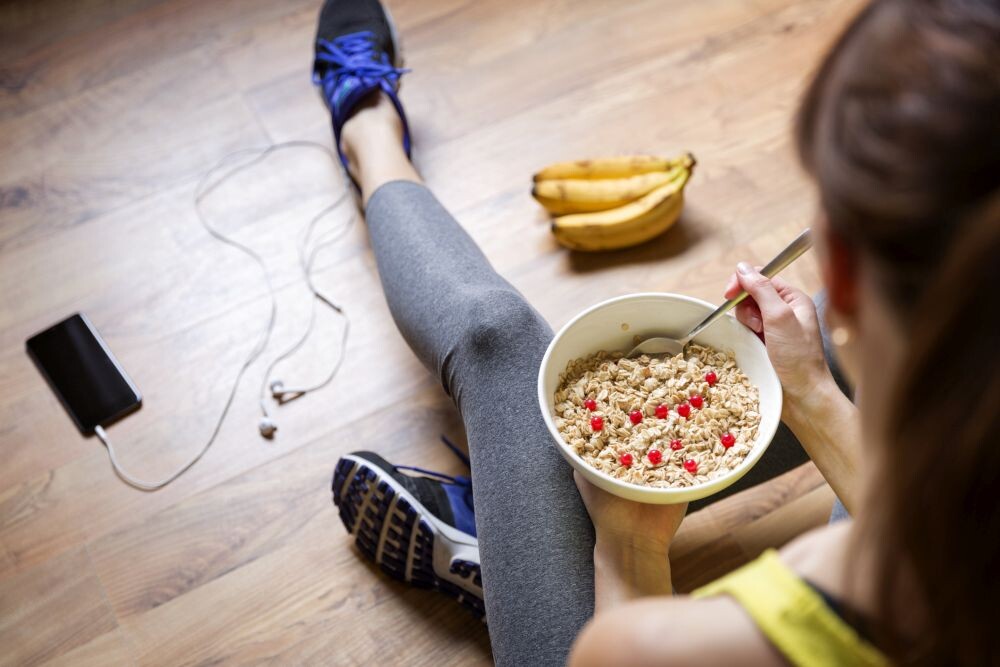
To take that a step further, this study suggests that combining those post-run carbohydrates with protein and antioxidants can reduce muscle soreness even more.
Dehydration
Research has shown that dehydration may make exercise-induced muscle soreness worse. More studies need to be done, but possible reasons could include changes in cell volume or cell membrane structure, impaired muscle contractions and decreased blood flow to your muscles. When you come in from a run, make sure you’re rehydrating right away to avoid the negative effects of dehydration. Plain water works in many cases, but after long runs or runs in very hot weather, an electrolyte beverage that will replace the sodium you’ve lost through sweat is a must.
Nutrient deficiencies
A 2009 study in the journal American Family Physician reported that vitamin D deficiency, which is a problem for many Canadian runners during the winter months, can cause muscle aches and soreness. Low levels of magnesium, potassium and calcium can also cause muscle fatigue, weakness and cramps, so runners should consume plenty of dark, leafy greens, nuts, seeds, bananas and other fruits, as well as some dairy or calcium-fortified alternatives to avoid deficiencies.
Vitamin D, however, is produced when our skin is exposed to sunlight, which doesn’t happen very often in Canada, particularly in the winter months. There are very few food sources of vitamin D, so most runners can benefit from taking a supplement. If you’re concerned about your vitamin D status, talk to a doctor or dietitian who can help you find the right supplement.
(11/27/2021) ⚡AMPby Brittany Hambleton
Seattle Marathon returns in person with new course and COVID measures
The Seattle Marathon will be held in person for the first time since the pandemic began, this Sunday with COVID-19 protocols in place. This year’s marathon and half-marathon races feature a new course that is less likely to affect Seattle traffic but will offer less room for runners to spread out.
The course doesn’t start and finish at Seattle Center or take as many of the scenic roads as it has traditionally. Runners will instead toe the starting line at Gas Works Park and run mainly along the I-5 express lanes and on a segment of the Burke-Gilman Trail in Northeast Seattle.

Participants of the half-marathon will make a U-turn on the trail after mile 10. Those running the full 26.2 miles will go on to do a loop around Magnuson Park, between miles 12 and 16, before reaching their own U-turn just past Matthews Beach Park.
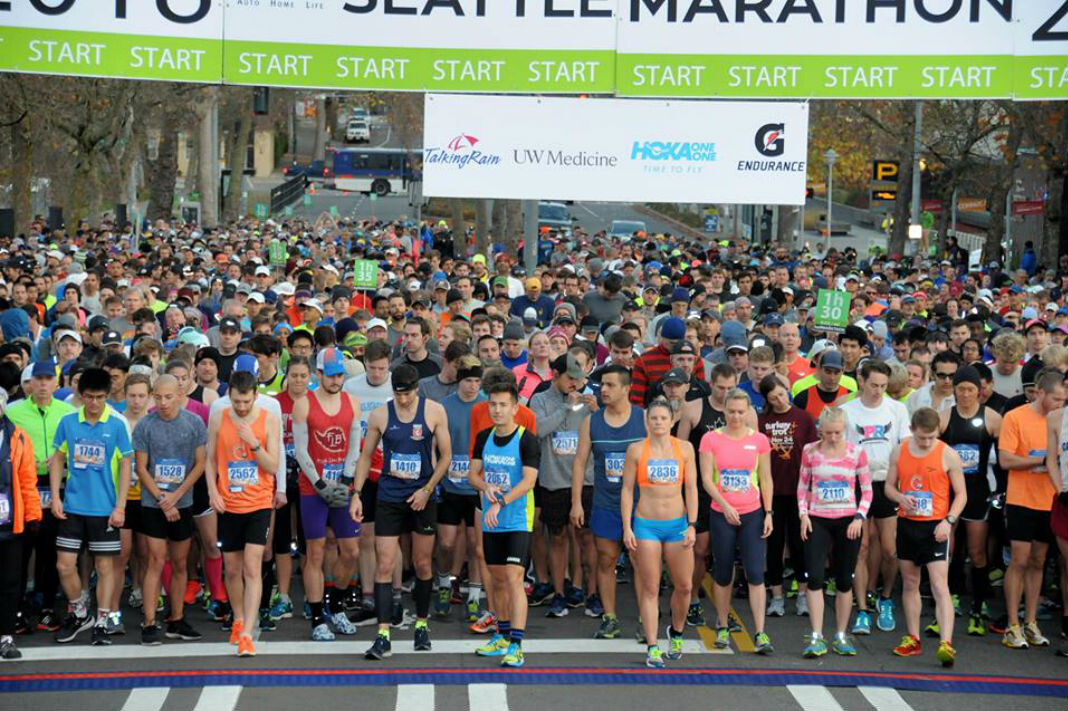
The I-5 express lanes will close between 4:30 a.m. and 9:30 a.m. Parts of North Northlake Way, Sixth Avenue Northeast, Northeast 40th Street and Seventh Avenue will close starting at 5:55 a.m., with all roads expected to be fully open by 2:30 p.m., according to the event website.
Gas Works Park, Magnuson Park and the Burke-Gilman Trail will remain open to the public while runners are on the course. The Gas Works Park parking lot will be closed.
Proof of vaccination or a negative COVID test taken within 72 hours of the event are required to participate. Runners must also wear masks while gathering at the starting line in Gas Works Park and after finishing the race. The event is scheduled to start at 6 a.m.
The annual Seattle Marathon, the oldest marathon in the Pacific Northwest, was first held in 1970. Last year the race was virtual due to the pandemic, making this year’s in-person event a welcome return.
(11/27/2021) ⚡AMPSeattle Marathon
From its humble beginnings in 1970 when a group of friends from the University of Washington decided to hold their own marathon, the Seattle Marathon Family of Events has grown into the largest combination marathon/half marathon in the Northwest and one of the top ten largest in the U.S. That first marathon 50 years ago sported 38 runners. This year,...
more...Molly Seidel sets an official FKT for fastest known turkey
Happy Thanksgiving to our neighbours south of the border. In celebration of the holiday season, the Tokyo Olympic marathon bronze medallist Molly Seidel dusted off the feathers of her turkey suit she used to run a 10K time trial last Thanksgiving at the Berbee Derby 10K in Fitchburg, Wis. Although she was one minute slower than her previous time, she officially set the record for ‘fastest known turkey’, running 35:34 for first place in the 10K.
Many Seidel fans were wondering if she would once again dress up like a turkey this year, as she kept it as a secret to her followers until a few days ago, where she announced that she would run another 10K trot, but this time at an official race. The race she chose was the Berbee Derby 10K in Fitchburg, Wis., which is an hour outside of her hometown of Brookfield, Wis. Averaging 3:33 per kilometre in a turkey suit certainly deserves recognition.

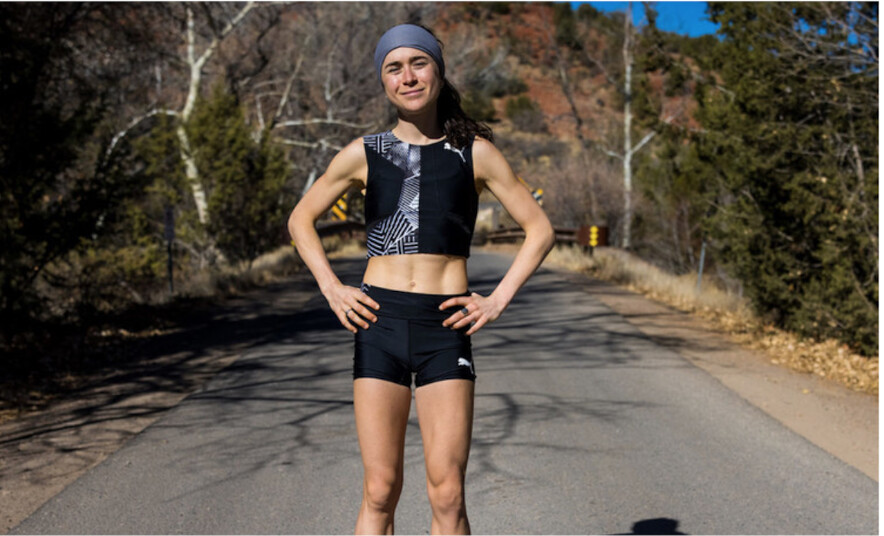
The 27-year-old has been on a tear this year, winning a bronze medal in her Olympic debut. She also was the top American female finisher at the 2021 New York Marathon and set an American women’s course record along the way, despite having two broken ribs.
Last year, she ran the turkey trot virtually for one of America’s largest road races, the Peachtree 10K. A few weeks back, Seidel revealed on Chris Chavez’s CITIUS MAG podcast that she will be gearing up to run in the marathon at the World Championships in Eugene, Ore in July 2022.
(11/27/2021) ⚡AMPby Running Magazine
Toronto woman sets Guinness World Record at L.A. Marathon
On November 7 at the L.A. Marathon, Toronto-based runner Bridget Burns set the record for the fastest marathon dressed as Michael Jackson. This brings her total number of Guinness World Records up to seven since she set her first one dressed as a boxer in 2014.
Running in costume

Burns was introduced to costume running when she was an extra in a Nike commercial, where she saw someone running in a banana outfit in her hometown of London, Ont. Costume running hadn’t really taken off in London, but when she moved to Toronto she began to see more people dressing up at local road races, including Canada’s joggling sensation and multiple Guinness World Record-holder, Michal Kapral. “I was inspired by him,” she says.
Burns chooses her costumes based on what interests her, and it was her love of the Rocky movies that inspired her to dress up as a boxer for her first record attempt at the 2014 GoodLife Fitness Toronto Marathon, which she ran in 3:52:27. She also has an interest in exotic animals and zoos (she has three parrots of her own and one domesticated pigeon), so for her second record, she dressed as a zookeeper at the Scotiabank Toronto Waterfront Marathon later that year in October, where she ran 4:08:17.
She went on to set four more records, including the fastest half-marathon dressed in an animal costume (which has since been broken), the fastest half-marathon in motocross gear (2:14:34), the fastest half-marathon dressed as a zookeeper (2:04:46) and she was part of a group who set the record for the largest number of runners to complete a 10 kilometre run in 24 hours this September. “If there’s something I find interesting, I’ll see if anyone has a record in that and then I’ll attempt it,” she says.
A record-setting run in L.A.
“Over the summer I downloaded some Michael Jackson on my iPod, and wondered if anyone had set a record in that,” says Burns. She found out that one person had done it before but no entry to the Guinness World Record was conducted, so she decided to give it a shot.
Her attempt was successful, bringing her total up to seven, but this one had a few more challenges on the way. Burns battled a bad case of bursitis in her knees for two months before the race, requiring her to take Prednisone for two weeks to decrease inflammation to allow her to run. Prior to the marathon, she worked five night shifts in a row (Burns works the night shift at the Etobicoke HomeSense so she can train during the day and be home with her 10-year-old daughter), went immediately to the airport and took a seven-hour flight to Los Angeles.
Aside from her costume, she packed only a couple of pairs of socks and underwear, her toothbrush and a map and travel book about the city. Despite her knee issues, she still managed to finish the race in 5:07:18 and set the record for the fastest marathon dressed as Michael Jackson.
More records on the horizon
For her next Guinness World Record attempt, Burns has her eyes on the 2022 Philadelphia Half Marathon, where, fittingly, she’ll be running dressed as Rocky Balboa. If the Scotiabank Toronto Waterfront Marathon is bringing the GWR program back again, she says she’ll likely do something for that as well, but she hasn’t decided which record she’ll attempt yet.
In the meantime, keep your eyes open for Burns at your next road race, because you never know — she may go running by as your favourite film character.
(11/27/2021) ⚡AMPby Running Magazine
How Weather Affects Your Body
Want to know what the weather is going to look like? Ask your knees.
This spring saw two historic “bomb cyclones” sweep across the country. On top of the problems caused by blizzards, high winds, and severe storms, these weather systems also made for a lot of achy knees as barometric pressure bottomed out. It’s not a myth: active weather patterns, and low-pressure systems in particular, have a noticeable effect on our bodies, including joint pain, headaches, and even the occasional induced labor.
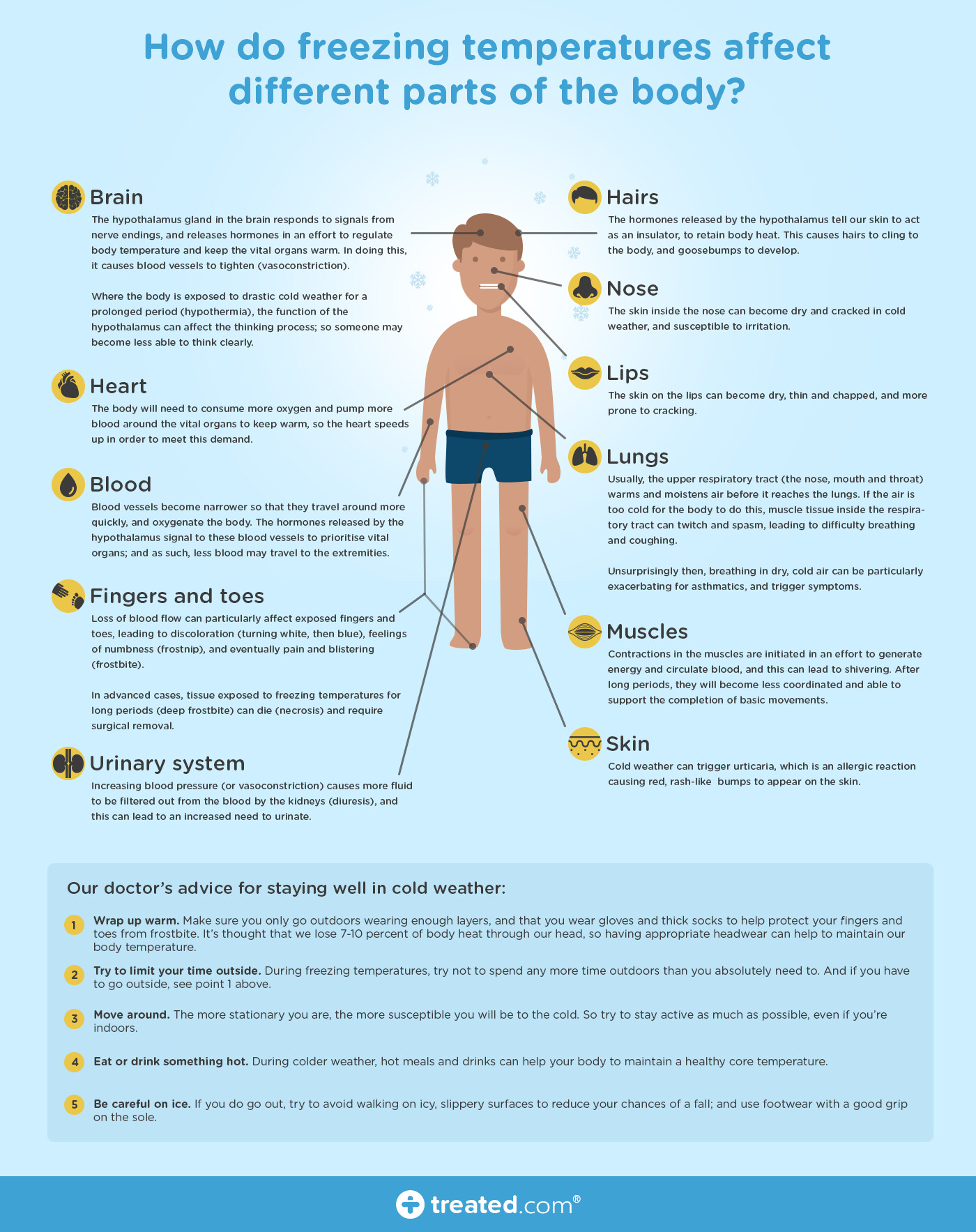
Joint pain is the most widely known effect weather has on your body. Our joints are full of fluid that allows bones to glide across one another without grinding together. This fluid is susceptible to changes in atmospheric pressure as weather systems come and go. Higher air pressure feels better on your joints. Lower air pressure means that there’s more pressure inside your joint than outside of it, causing those joint fluids and surrounding tissues to expand, leading to nagging aches and pains.
Cooler air temperatures can also make your joints feel stiffer by thickening the fluid in your joints and tightening up the tissues around them. This makes your discomfort even worse when you’re in the midst of a winter storm with low pressure. Everyone is susceptible to it, but the effects are more pronounced in people who have arthritis or existing joint injuries. Retirees don’t just move to the Sun Belt for golf and lower taxes. The warmer, calmer weather helps soothe aches and pains.
Our sinuses and ears are also sensitive to changing weather conditions. As anyone who’s ever suffered from a severe cold can attest, these cavities in our head are prone to internal pressure increases that lead to intense and sometimes even debilitating pain. Just like our joints, lower air pressure can increase the relative pressure in our head and lead to sinus pain and earaches.
The effect weather can have on headaches is a little muddier, because the stressors and triggers that instigate each episode vary from person to person. Some people who suffer from headaches are incredibly sensitive to small changes in weather, and an approaching storm system can lay them up for a day or more. Others can soldier on through even the worst conditions without so much as a dull throb. The American Migraine Foundation says that some studies have found a correlation between migranes and drops in atmospheric pressure and air temperature, as well as increased humidity, which can trigger pain in people who suffer from this intense form of headaches.
We often hear reports of a “baby boom” occurring in communities that have endured a hurricane about nine months after it makes landfall, but a sudden drop in air pressure, like you would see during a hurricane or major winter storm, can induce labor for some pregnant women in the storm’s path. Several Japanese doctors conducted a study of their patients over a seven-year period and found that there was a significant relationship between a drop in air pressure and patients experiencing their water breaking or a “spontaneous delivery.”
Extreme temperatures can also take a hefty toll on our body, especially when combined with aggravating factors such as humidity and wind. Despite the misplaced cynicism of people who think they’re fake numbers meant to hype people up, the summertime heat index and wintertime wind chill are two important measurements that tell you how safe it is to venture outdoors unprotected.
The heat index tells us how much hotter it feels due to the amount of moisture in the air. Our bodies cool off through the evaporation of sweat. Less sweat evaporates from our skin when the humidity ticks up on a hot day. This process prevents us from cooling off effectively, which can quickly lead to heat exhaustion or heat stroke. A humid, 90-degree afternoon can cause problems for you quicker than a 90-degree day that’s dry as a bone.
Wind chill, on the other hand, tells us how much colder a winter day feels when you add in the effect of the wind. Human skin cools off much faster on a cold and windy day than it would if the wind wasn’t blowing. This allows frostbite and hypothermia to set in quicker than you would otherwise expect given the raw air temperature.
Despite the different ways weather affects your body, you definitely can’t catch a cold because of the weather. Both the cold and the flu are caused by viruses contracted from another person. You have a better chance of contracting the cold or flu during the winter months since viruses live longer in colder, drier weather—conditions that also weaken our immune systems and drive us into close proximity indoors. Cold weather can give you a runny nose, chills, and a headache, all of which mimic symptoms of viruses, but the cold itself can’t give you a cold.
(11/27/2021) ⚡AMPby Outside
Ethiopia's Haile Gebrselassie and Feyisa Lilesa ready to join Tigray war
Ethiopian Olympic heroes Haile Gebrselassie and Feyisa Lilesa say they are ready to go to the front line in the war against rebel forces.
Their announcement comes after Prime Minister Abiy Ahmed said he would go to the front to lead the war.
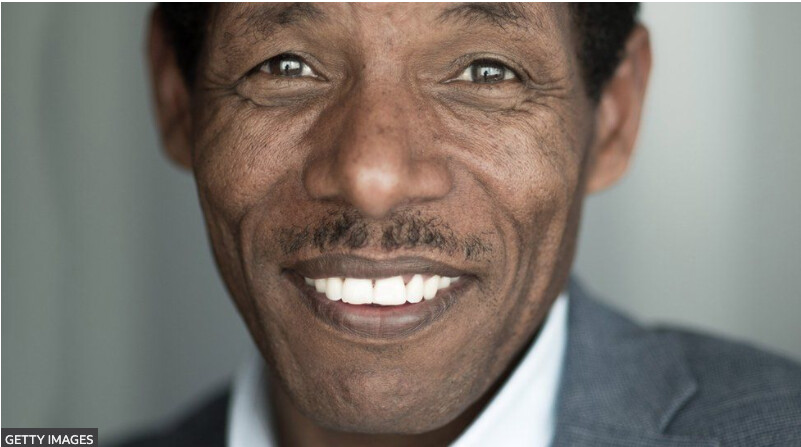

Tigrayan rebels say they are advancing towards the capital Addis Ababa.
The UK has urged its nationals to leave Ethiopia immediately, saying the fighting may move closer to Addis Ababa in the coming days.
The rebels earlier this week said that they had taken control of Shewa Robit, a town about 225km (140 miles) north-east of Addis Ababa. There is no independent confirmation of the claim.
Communication Minister Legese Tulu said the military has had "many successes" since Mr Abiy's decision to lead the battle, and victory was "so close".
Earlier, Gebrselassie, 48, was quoted by state television as saying: "I am ready to do whatever is required of me, including going to the front line."
Gebrselassie is regarded as a legend in Ethiopia, and his comments were seen as an attempt to rally public support behind the war effort.
During his 25-year career as an athlete, he claimed two Olympic gold medals, eight World Championship victories and set 27 world records. He announced his retirement from competitive running in 2015.
Expressing his support for the war, Feyisa, 31, was quoted by the state-affiliated Fana Broadcasting Corporation website as saying that he was ready to draw inspiration from the "gallantry of my forefathers" and go to the front line to "save my country".
The athlete won the marathon silver at the 2016 Rio Olympics.
He became famous for holding up his crossed wrists as if they were shackled to draw global attention to the crackdown on demonstrators demanding political reforms in Ethiopia.
The Tigray People's Liberation Front (TPLF) was the dominant party in government at the time. Following the protests, Mr Abiy became prime minister and the TPLF lost the grip on the country it had held for 27 years.
It later retreated to its stronghold of Tigray, from where it launched a rebellion last November after a huge fall-out with Mr Abiy over his reforms.
The war has created a massive humanitarian crisis, leaving thousands dead, forcing millions from their homes, and several hundred thousand in famine-like conditions as aid agencies battle to get food in war-affected areas.
The African Union is leading efforts to find a negotiated end to the fighting, but neither side has committed to talks.
The TPLF are advancing towards Addis Ababa on the A2 highway.
On Tuesday, Germany and France advised their citizens to leave Ethiopia.
The prospect of some of Ethiopia's most venerated sporting figures heading to the front lines to fight captures something profound and powerful about the mood in Addis Ababa and beyond.
At a time of intense crisis, many Ethiopians are clearly rallying behind their flag and prime minister, and are keen to play their part in galvanising public support for a military campaign that has suffered undeniable setbacks in recent months, though much remains in dispute in terms of casualty figures and battlefield momentum.
It is clear many people see the military threat posed by the TPLF and their assorted allies as an existential one for Ethiopia.
Added to that is a profound dislike of the TPLF itself, which stems from its decades heading an authoritarian national government. But there is more to it than that.
The prime minister has sought to portray his country as a victim, not just of Tigrayan aggression, but of a vast international conspiracy designed to weaken Ethiopia and punish it for, allegedly, challenging Western colonial interests on the continent.
Western media are portrayed as enthusiastic backers of that conspiracy theory - one which appears to have gained widespread credibility in a country struggling to explain how the rebel group could have made such startling headway.
(11/27/2021) ⚡AMP
by BBC
Drills on Hills – a different kind of hill workout for runners
In the November 2021 issue of Canadian Running, strength and conditioning coach Jon-Erik Kawamoto presents a challenging new hill workout for runners.
Beyond jogging and sprinting up the hill, the workout incorporates exercises not usually seen in the context of hill running, and they’re guaranteed to take your hill training to another level.

Runners who routinely do A, B and C skips, carioca drills (also known as grapevines) and strides as part of their warmup for a speed workout will enjoy applying these tried-and-true exercises to their hill training. They add a level of interest and challenge that will spice up your hill workouts and, when done consistently, significantly benefit your running power.

Ideally, the exercises should be done on a gradual incline (i.e. not too steep, so as not to risk injury) for about 30 seconds each, before carefully jogging back down to get ready for the next exercise. (As Kawamoto points out in the video, these exercises should not be combined with downhill training, due to the increased stress of the eccentric loading incurred when running fast downhill.)
(11/26/2021) ⚡AMPby Anne Francis
Shelby Houlihan starts GoFundMe page to fund her legal fight
Five months after receiving a four-year ban from competition, American 1,500m and 5,00m record-holder Shelby Houlihan has started a GoFundMe page and website asking for support to help pay for the legal fees she’s incurred while fighting her case. She has set a goal for $300,000, and is asking her supporters to spread the word about what she calls “the injustice of the situation.”
A brief recap
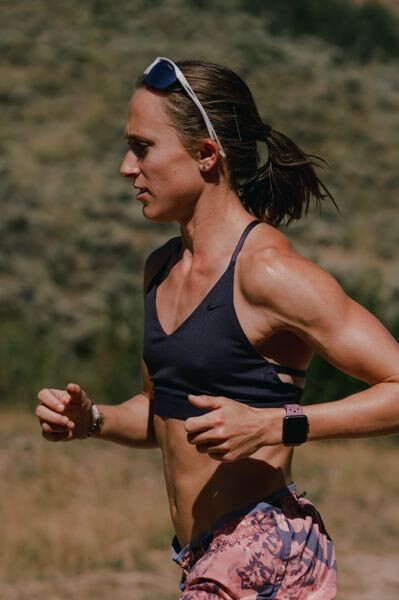
In December 2020 Houlihan tested positive for the steroid nandrolone and in June 2021, the Athletics Integrity Unit (AIU) handed her a four-year ban from the sport. After the ban was announced, she made a public statement on her Instagram page stating her innocence and claimed the positive result was due to contaminated meat she ate in a burrito from a food truck on the day of the test.
Houlihan appealed the ban and attempted to prove her innocence, but the Court of Arbitration for Sport (CAS) upheld the ruling against her. The entire 44-page CAS decision was made was released in early September, which included the following statement:
“The Athlete’s explanation that the 19-NA in her sample resulted from her consumption of the meat of an uncastrated boar simply cannot be accepted. The explanation presupposes a cascade of factual and scientific improbabilities, which means that its composite probability is (very) close to zero.”
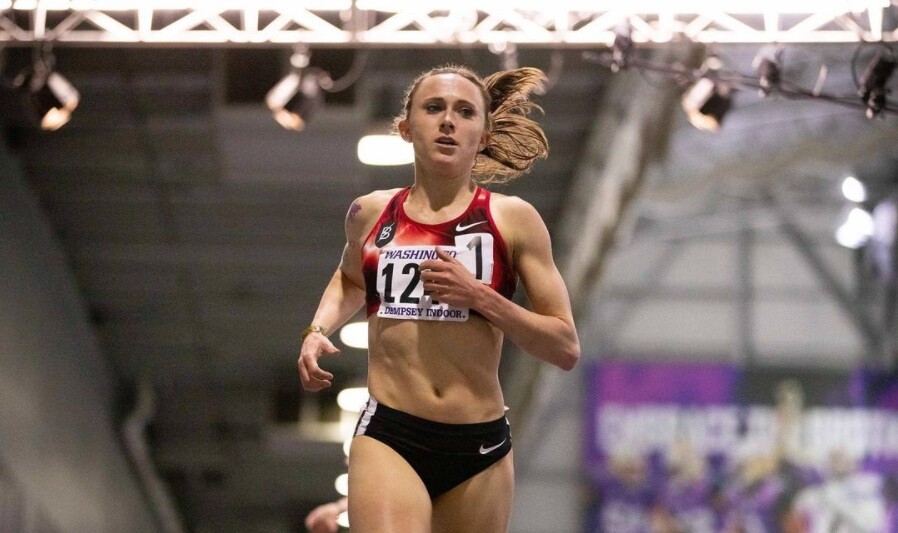
As a final effort to fight her ban, Houlihan has since announced that she plans to appeal her case to the Swiss Federal Tribunal.
Her bid for help has drawn mixed reviews from running fans. Those who believe in her innocence have been eager to support her cause, but detractors are arguing she should accept her ban and move on.
Many more have wondered why someone who is supposedly still backed by Nike requires financial assistance, and have speculated that the brand may be backing away from the situation, but the chatter is largely hearsay, since neither Houlihan nor Nike have made any public statement regarding their relationship. Houlihan’s case will not be brought before the Swiss Tribunal until 2022.
(11/26/2021) ⚡AMPby Brittany Hambleton
Kenmore’s Liam Hilbert who first ran Turkey Trot at age 9 wins annual race
When Kenmore’s Liam Hilbert says it’s a lifelong dream to win a YMCA Turkey Trot, he isn’t kidding.
Hilbert has run the trot for 15 consecutive years in what has become a family tradition, but he’s only 23. His first one was at 9 years old.
He now has that victory after winning Thursday’s 8K race in 24 minutes, 43 seconds.
After a year in which the in-person field was restricted by Covid-19 protocols, more than 12,000 runners and walkers took to Delaware Avenue for the 126th edition of what is billed as the longest consecutively run footrace in North America.
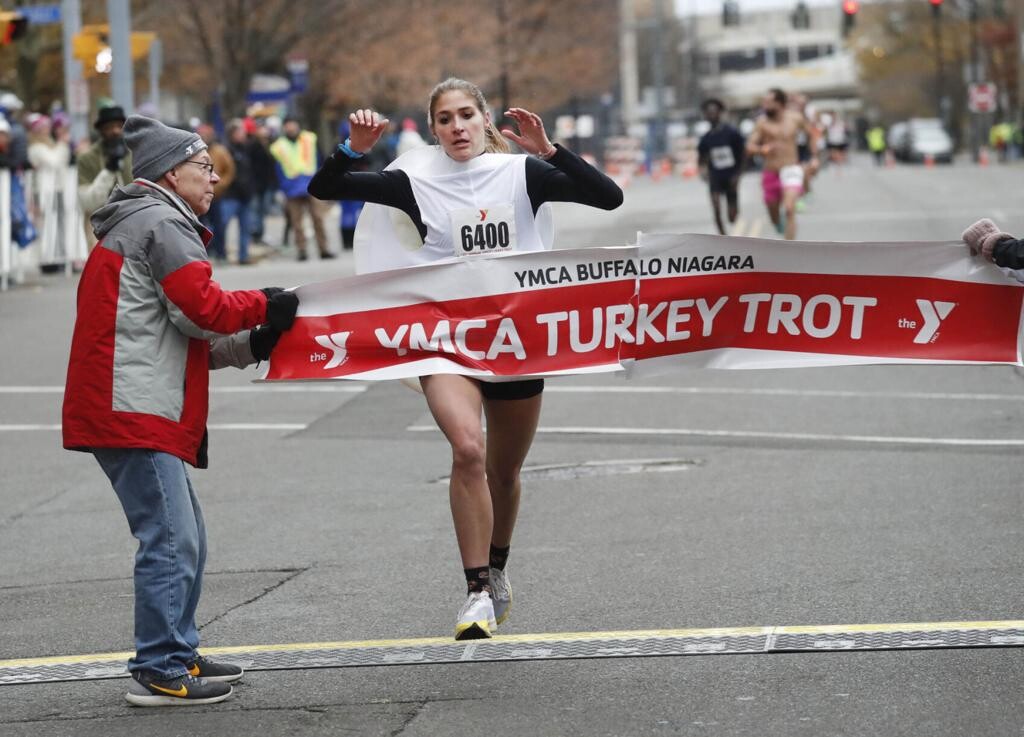
University of Wisconsin runner and Nardin graduate Danielle Orie topped the women’s field in 27:57. Orie was home for Thanksgiving break after running in the NCAA Division I Championships last weekend.
Hilbert is a former Monsignor Martin champion in the 1,600 meters and 3,000 meters at St. Joe’s and went to run at the University at Buffalo. He was the Mid-American Conference outdoor champion in the 10,000 meters last spring.
Hilbert ran the race with his uncle, James Waldron, with whom he had run the his first few Turkey Trots.
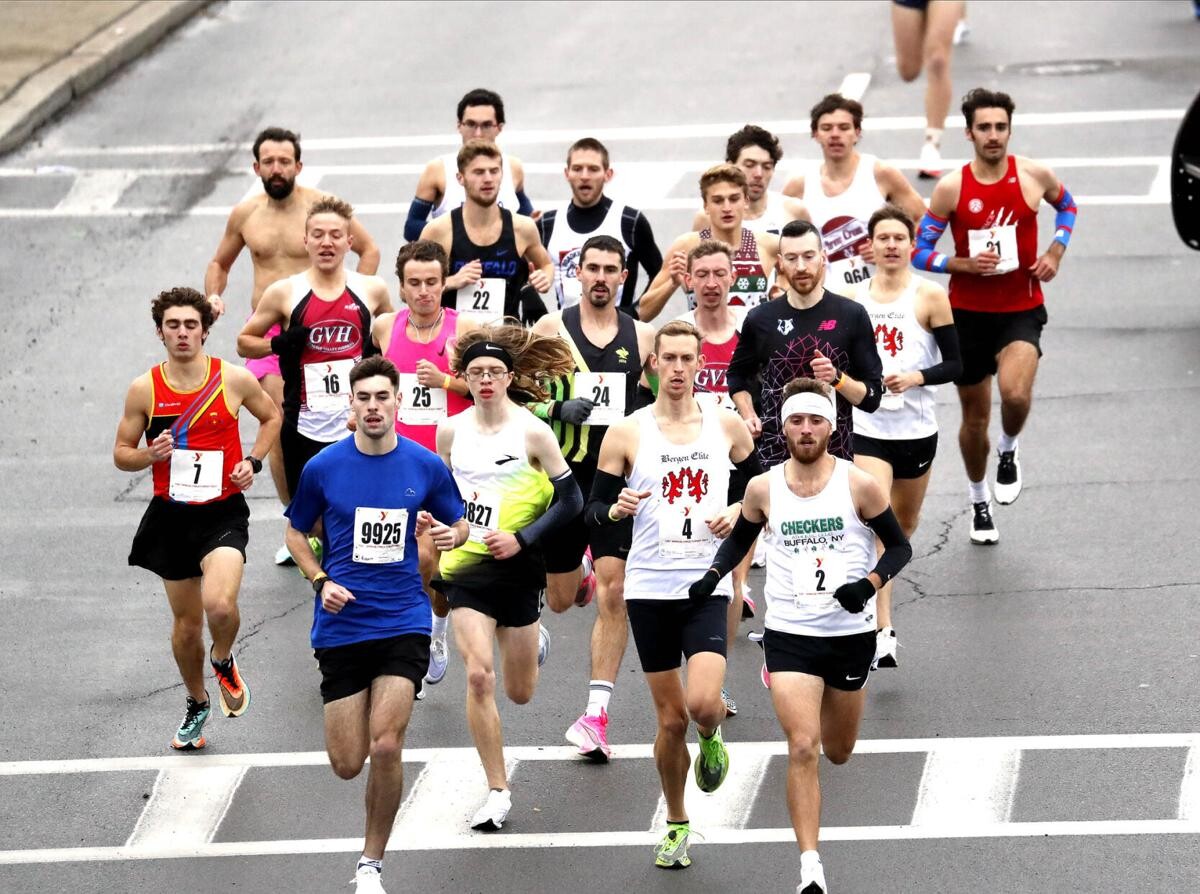
“My family was there to cheer me on,” Hilbert said.
Buffalo’s Thomas Appenheimer was second in 24:27, followed by Steven Haagsma of Gowanda (25:00), Rush’s Brennan Root (25:09) and Rochester’s Paul Suflita (25:28). Appenheimer runs at Canisius College and finished 11th in the Metro Atlantic Athletic Conference championships last month. Haagsma is a former Division III runner at Calvin College in Michigan.
For Orie, it’s been a busy fall in her first year at Wisconsin.
Orie ran for Penn as an undergraduate and transferred in the spring as she pursues her law degree. She finished 25th in the Big Ten Championships and then 22nd in the Great Lakes Region championship to qualify for the NCAAs. She finished 112th, covering the 6K in 20:34.2. Wisconsin finished 12th in the nation.
Sarah Danner of Gowanda was second in 28:21, followed by Pittsburgh’s Margo Malone in 28:38, Alexandra Cadicamo in 28:58 and Glenwood’s Aileen Hoak-Lange in 29:16.
Hoak-Lange, in her 29th consecutive trot, was the top woman in last year’s event as she was selected among 125 in-person runners.
(11/26/2021) ⚡AMPby Robert Kirkham / Buffalo News
YMCA Buffalo Niagara Turkey Trot 8K
The enthusiasm, energy and incredible holiday spirit that radiated down Delaware Avenue tells us that our local Thanksgiving Day run is so much more than just an 8k road race. It is an incredible tribute to all that makes Western New York great – Family, Friendship, and Benevolence. Together with the Y, you are helping to connect those less fortunate...
more...Kenyans Titus Ekiru and Judith Jeptum Korir dominate in Abu Dhabi
Judith Jeptum Korir and Titus Ekiru landed a Kenyan double at the ADNOC Abu Dhabi Marathon, winning by significant margins at the World Athletics Elite Label road race on Friday (26).
The heat and humidity put paid to any truly fast times, so the course records remained intact. But Korir and Ekiru maintained their highly consistent career record over the marathon, winning in 2:22:30 and 2:06:13 respectively.

Korir, a former winner in Belgrade, Venice and Izmir, was part of a five-woman pack during the early stages, passing through 10km in 33:24. By the time the half-way point was reached in 1:10:27, just three women – Korir, 2009 world 10,000m bronze medalist Wude Yimer and Olympics seventh-place finisher Eunice Chumba – remained at the front.
Shortly after, Korir started to pull away from Yimer and Chumba. She reached 30km in 1:40:04, almost two minutes ahead of her closest pursuers and still on schedule to break the course record of 2:21:11, and by 40km her lead had grown to almost four minutes.

The conditions finally started to take their toll on Korir in the closing stages as her pace dropped, but by that point she had a comfortable margin and everyone else in the field were similarly feeling the effects of the heat. Korir crossed the line in 2:22:30, smashing her PB by more than four minutes. The 24-year-old, who earlier this year set a half marathon PB of 1:06:24, has now notched up four marathon victories from six races.
Chumba held on for second place in 2:26:01 while Uganda’s Immaculate Chemutai came through to take third in 2:28:30.
Ekiru, who was competing for the first time since setting a world-leading 2:02:57 in Milan in May, set out confidently in the hope that he could challenge the course record of 2:04:40. Once the last of the pacemakers had dropped out at 15km, reached in 44:21, Ekiru upped the tempo and reached the half-way point in 1:01:46 with just defending champion Reuben Kipyego by his side.
The Kenyan duo ran together for a few more kilometers before Ekiru started to run away, and by 30km Ekiru’s lead had grown to about 100 meters. Although Ekiru’s pace dropped in the closing stages, like women’s winner Korir, his lead was insurmountable and he won by more than a minute-and-a-half, crossing the line in 2:06:13. The 29-year-old has now won seven of the eight marathons he has completed.
Tanzania’s 2017 world bronze medalist Alphonce Felix Simbu overtook Kipyego with about four kilometers to go and took second place in 2:07:50. Kipyego held on for third in 2:08:25, finishing 21 seconds ahead of two-time world champion Abel Kirui.
(11/26/2021) ⚡AMPby World Athletics
ADNOC Abu Dhabi Marathon
The Abu Dhabi Marathon is shaping up to being first class marathon for both elite runners and average runners as well. Take in the finest aspects of Abu Dhabi's heritage, modern landmarks and the waters of the Arabian Gulf, at this world-class athletics event, set against the backdrop of the Capital's stunning architecture.The race offered runners of all abilities the...
more...Ben Flanagan wins 85th Manchester Road Race, Weini Kelati wins women's race and sets new record
What a dominating performance by Weini Kelati!
The 24-year-old runner native of the African country of Eritrea shattered the course record with a time of 22 minutes 55 seconds to win the women’s division of the Manchester Road Race. Kelati, who lives in Flagstaff, Ariz., finished 18th overall.
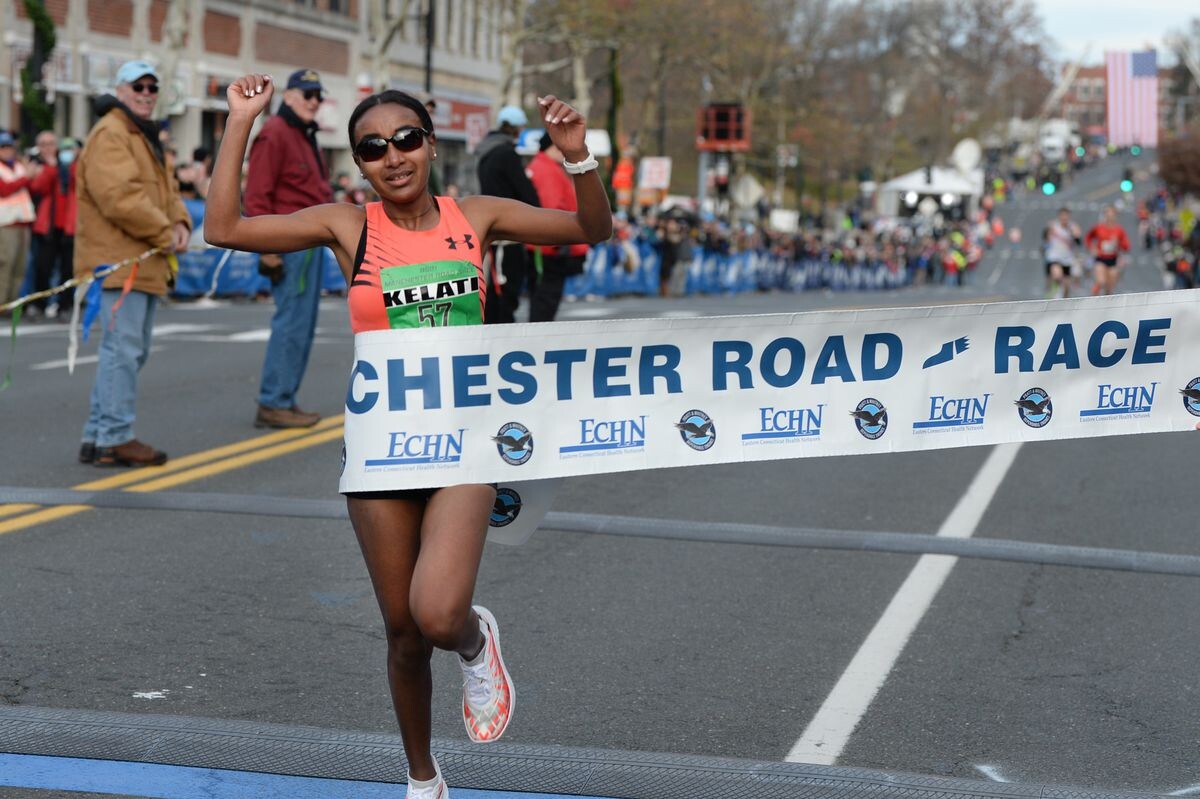
“It’s amazing!” Kelati told FOX61 News after crossing the finish line on Thursday morning. “The energy … When I hear the people cheering, it helps me to run fast.”
Kelati, who won the women’s national 5K road championship in New York City on Nov. 6, started off the race strong. She quickly got away from the pack in the women’s division and ran the 4.748 miles practically by herself.
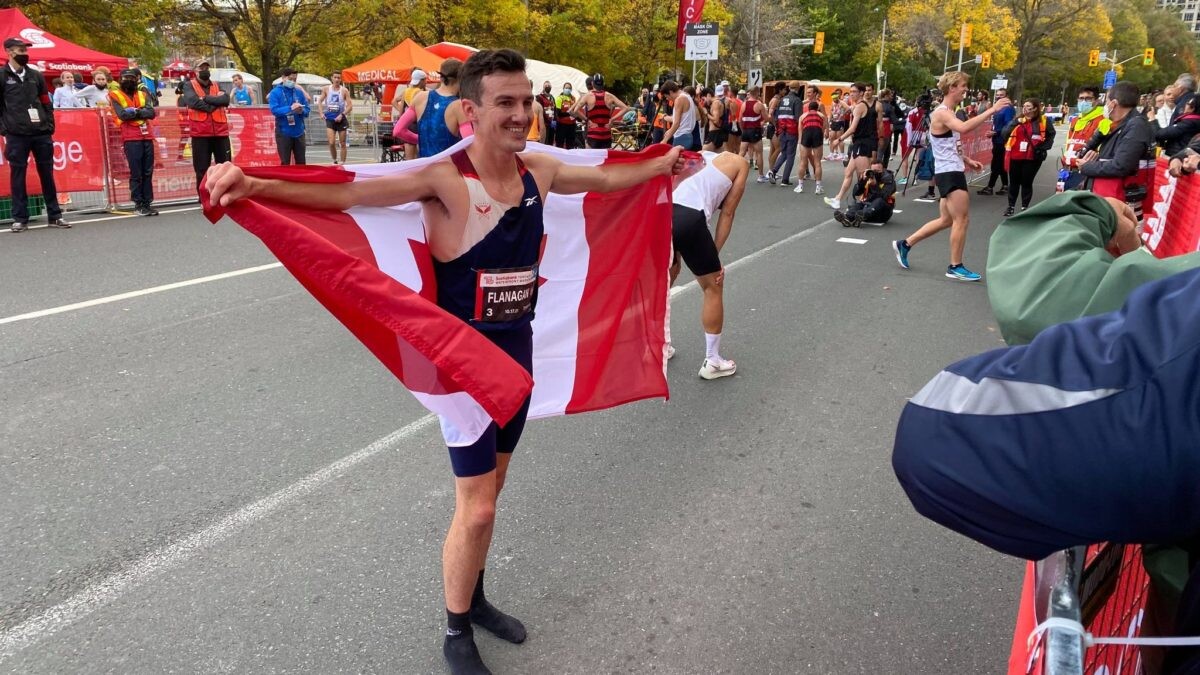
She beat the previous course record of 23 minutes 57 seconds in the women’s division – set by Buze Diriba in 2017 – by more than a minute.
Second place in the woman’s race was Keira D’Amato from Midlothian, Virginia. Edna Kiplagat from Longmont, Colorado rounded up the top three.
“Thank you to the people cheering for us,” Kelati said. “It’s amazing.”
In the men’s race, winner Ben Flanagan, 26 of Canada, clocked in at a time of 21 minutes 23 seconds, beating second-place Leonard Korir by more than 12 seconds.
Flanagan, who lives in Charlottesville, Virginia, took the lead after the Highland Street hill, at about the 2-mile mark, and ran alone the rest of the way.
“I feel amazing,” he told FOX61 News after the race. “I knew I was in pretty good shape, but this time of year, you really don’t know what to expect, it’s so early in training. So, to come out here and take the win at a historic race like this is a huge privilege. I am so happy.”
He was about six seconds off the pace of the course record for the men’s division (21:15) set by Edward Cheserek in 2018.
Flanagan, who is a two-time winner of the Falmouth Road Race (2019, 2021), was running his second Manchester Road Race. He is the first Canadian male to win since Christian Weber in 1990.
Sam Chelanga, the 2013 Manchester winner, won the King of the Hill title at the top of Highland Street hill. He came in third overall.
“You do it right here (in Manchester),” Flanagan said of the crowds. “It was electric. As soon as I took the lead, the last two miles, the crowd just fueled me the whole time … it was so exciting.”
More than 8,700 runners hit the racecourse this year. The race was held virtually last year due to the COVID-19 pandemic.
(11/25/2021) ⚡AMPby Lucia Suarez Sang
Manchester Road Race
The Manchester Road race is one of New England’s oldest and most popular road races. The 86th Manchester Road Race will be held on Thanksgiving Day. It starts and finishes on Main Street, in front of St. James Church. The Connecticut Sports Writers’ Alliance recently honored the Manchester Road Race. The CSWA, which is comprised of sports journalists and broadcasters...
more...Happy Thanksgiving to all of our readers and races around the world
Happy Thanksgiving from all of us at My Best Runs with staff in Los Altos California, Bend Oregon, La Piedad Mexico, Thika Kenya and Chandler Arizona. Enjoy your day and be sure to get in a good run. Bob Anderson and team.
It is also a special day because my Grandson Bear (second photo) ran his first race today. A 1k race in Redmond. Remember your first race?
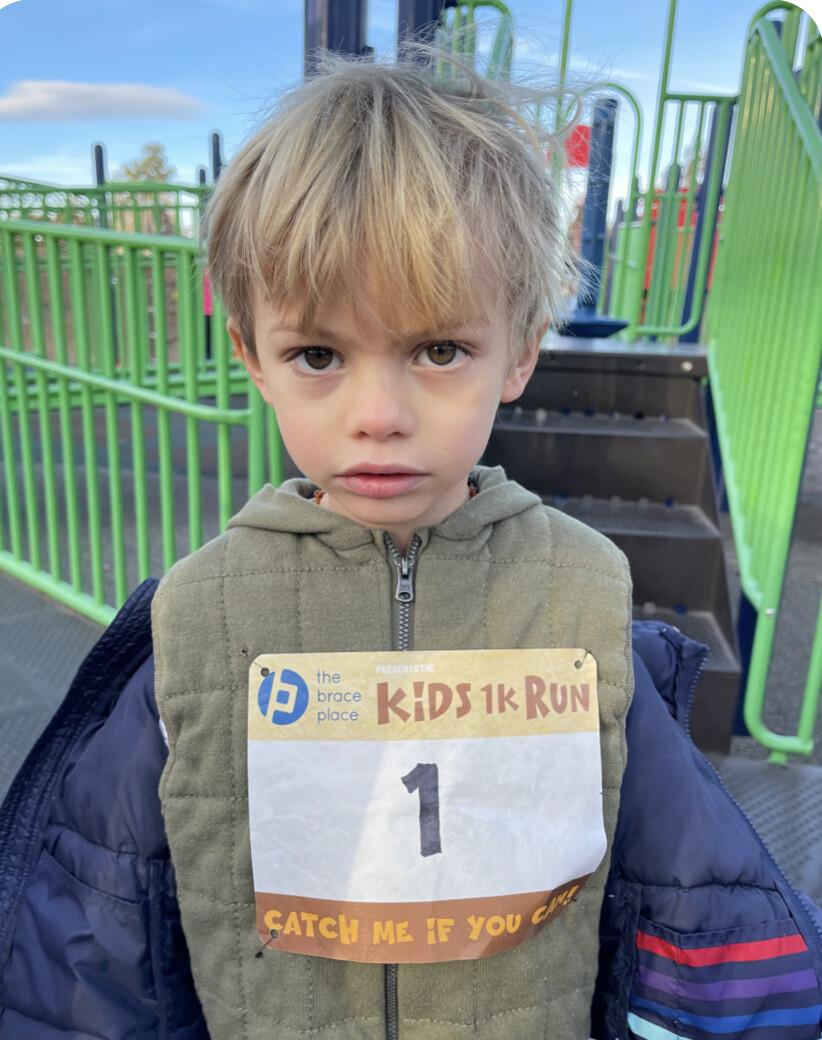
We received many emails from US races today. This one from the San Francisco Marathon caught our eye and we wanted to share it.
"Today on Thanksgiving Day, we want to express our endless gratitude to our runners. From those that run our race to the friends and family that support you, each and every one of you is important to us. After a whirlwind few years, we are grateful that we are once again back as a community doing what we love to do, RUN!
Soak in every moment surrounded by your loved ones, remember to be grateful for a body that is capable and the community that shares your passion.
The SF Marathon Staff and Family."
(11/25/2021) ⚡AMPKenyan David Rudisha hints at comeback in athletics after successful surgery
David Rudisha has disclosed he is set to make a comeback in athletics after undergoing a successful surgery on Saturday.
The 800 m, 2012 London and 2016 Rio Olympics champion stated that he had undergone a successful surgery on his left leg and will make a return to the track since July 2017.
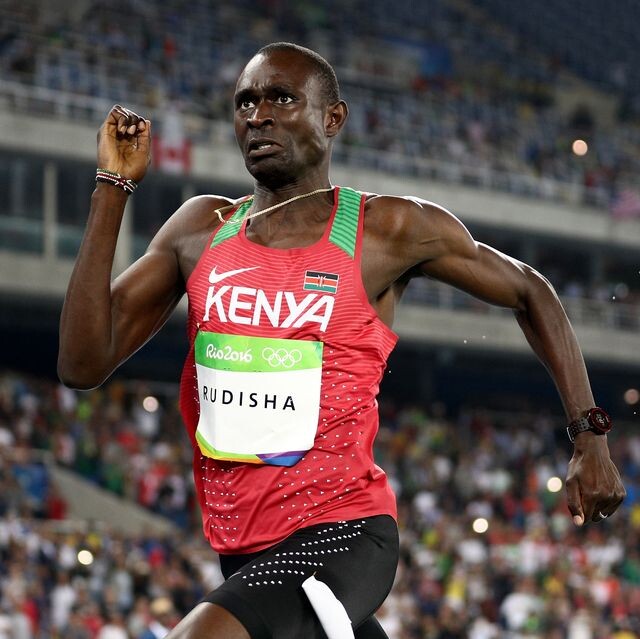
"I am glad that on Saturday i had a successful surgery of removal of an implant on my left leg that has been there for the last one year and a half. At least i will be back soon doing some running," Rudisha said.
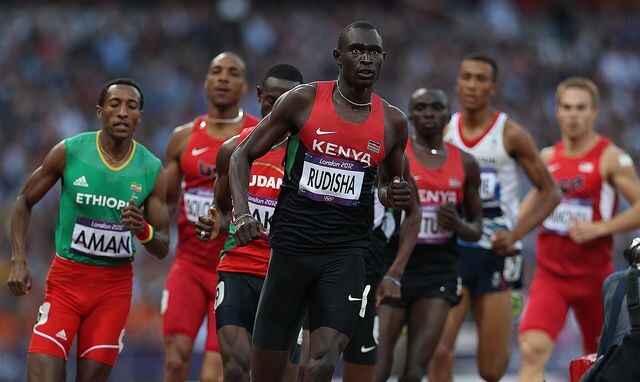
Rudisha's career has been characterised by injuries that denied him opportunities to represent Kenya at major global competitions such as the 2019 World Championships and the 2020 Olympic Games.
The world record holder had earlier revealed he was set to retire soon after the 2020 Olympic Games after a four-year hiatus but had to shelve the idea after he injured his back and twisted his ankle prior to the global event.
Rudisha is regarded as one of the most accomplished 800-meter athletes after his sensation record time of 1:40:91 at the 2012 London Olympics, going on to become the first runner to break the 1:41 time barrier.
He also broke his own record of 1:41:01 that he had set back in 2010 during the Rieti Diamond League meeting.
(11/25/2021) ⚡AMPby Benson Mbare
New research shows the nutrition requirements of men and women aren't the same
Over the last few decades, a lot of research has gone into nutrition and how it affects running performance. Unfortunately, the majority of that research has been done on males, and it is only recently that sports scientists have begun looking specifically at the nutritional needs of female athletes. Not surprisingly, these requirements do differ from those of their male counterparts. Much more research needs to be done, but here’s what we know so far.
Males vs. females
Thanks to their higher levels of testosterone, male runners tend to have more muscle mass and a lower body fat percentage. They also typically have a higher VO2 max than female runners. This 2009 study explains that on average, women have six to 11 per cent more body fat than men because of their higher levels of estrogen, which reduces the body’s ability to burn energy after eating. This results in more fat storage around the body, presumably to prime women for childbearing.
Muscle tissue is more active than fat tissue, and so the more muscle you have, the more calories you need to sustain yourself. Because females typically have higher amounts of body fat and less muscle mass, they typically require fewer calories than males, even outside of the context of running. Throw running into the mix, and you begin to see even more difference between the nutritional needs of male and female athletes.

Vitamins and minerals
Female runners need to pay particularly close attention to three nutrients: iron, calcium and vitamin D. Of course, these are important for male athletes as well, but the female menstrual cycle can affect the status of these nutrients, and throw them out of whack if you’re not careful.
Iron is required for the transportation of oxygen throughout the body and for energy production, and a deficiency can negatively impact your performance, energy levels, recovery and immune function. Females are at greater risk of iron deficiency as a result of menstruation, so their requirements are higher than males’. The recommended daily intakes of iron are as follows:
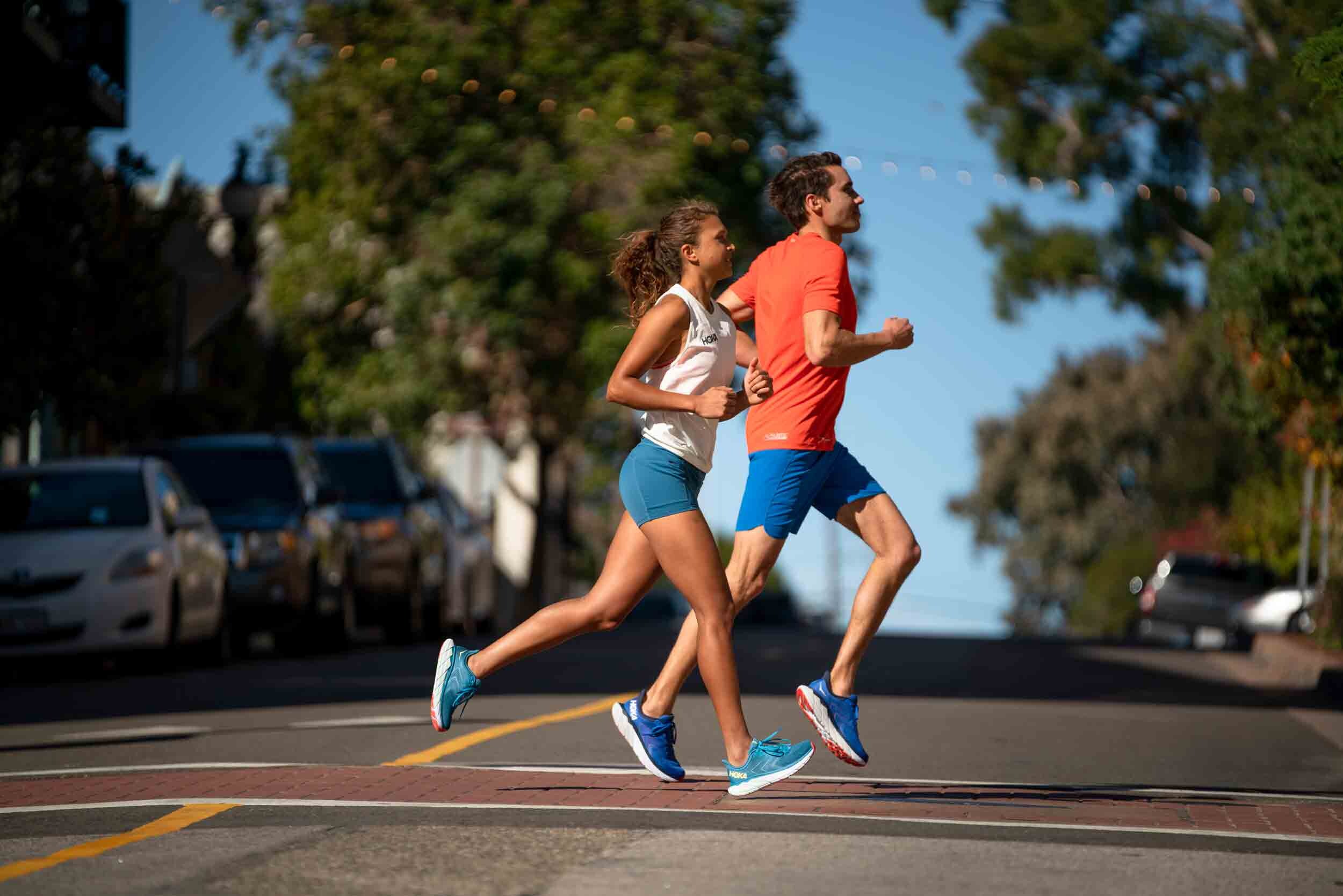
Males 19-70+: 8 mg/day
Females 19-50: 18 mg/day
Females 50+: 8 mg/day
Female athletes also tend to be at a greater risk for lower bone density than male athletes, which means they need to pay more attention to both their calcium and vitamin D intake. While the calcium recommendations for the general population are the same for men and women (1,000 mg to 1,200 mg/day, depending on your age), a recent study recommended that females who are at risk for lower bone density should consume 1,500 mg/day to optimize their bone health. Studies have also shown that women tend to have a lower vitamin D status, and since it is not widely available in the diet, supplementation may be necessary. Dosage recommendations vary, so female runners should talk to their doctor or dietitian before adding a supplement to their daily routine.
Females can forget fasting
In May we spoke with Dr. Stacy Sims, who explained that female physiology makes women much better at regulating their metabolisms based on how much or how little they eat. For this reason, she says fad diets (like paleo or keto) and fasted training can work well for men, but is more stressful for female bodies than beneficial, and should be avoided. She recommends that women always eat before a workout (even if it’s just a small snack) and that they concentrate their carbohydrates around their workouts to improve performance and kickstart the recovery process.
Eat protein
Yes, protein is important for both male and female athletes, but new research suggests that physiological changes throughout their menstrual cycles may impact female athletes’ protein needs. Although more research is needed in this area, new recommendations encourage women to increase their protein intake during the follicular phase (day 1-16), because this is the time when estrogen levels are rising, which creates an anabolic (muscle-building) effect. During this time, female runners should aim to consume 1.6 grams of protein per kg of body weight each day.
Don’t skimp on the calories
This holds true for both male and female athletes, although female athletes tend to run the risk of under-fuelling more than males. As an athlete, there is little value in trying to add more protein to your diet, eat according to your menstrual cycle (for females) or do anything to optimize your micronutrient status if you’re not meeting your basic energy needs. At the end of the day, the most basic requirement for your body to run well is to have enough energy, so skimping on calories will prevent you from reaching your full athletic potential.
(11/25/2021) ⚡AMPby Brittany Hambleton
Josh Sloan, who lives with Down Syndrome ran 20 kilometers weekly for two months, raising over $20,000 for charity
Many kids look up to professional athletes as role models, but for the 27-year-old Surrey, B.C., runner Josh Sloan, it was the person who taught him how to run. Six years ago, Sloan lost his former teacher, role model and friend Debbie Kovacs to cancer. Last week, Sloan completed his goal of running 100 miles in two months as a tribute to his teacher, raising over $20,000 for the Canadian Cancer Society.
Sloan set a goal of running 20 kilometers each week. He began to gain a following as members of the local Surrey fire department and friends and family of Kovacs joined him.
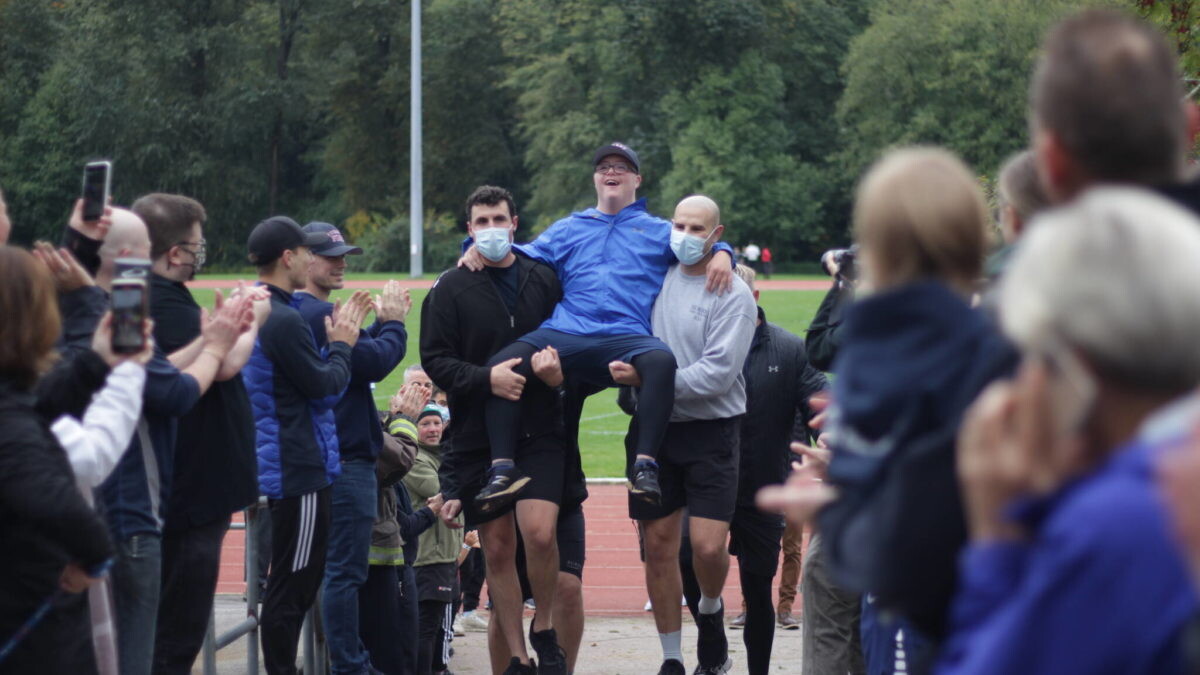
Kovacs first taught Sloan when he was in Grade 2 and continued to teach him for six years at Surrey’s Simon Cunningham Elementary School. Kovacs played an instrumental role in Sloan’s life, teaching him how to read, write, and most importantly, how to run cross-country.
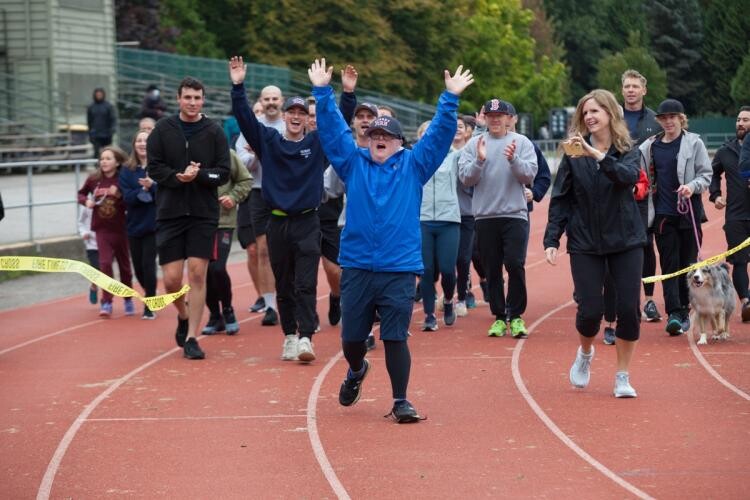
She helped Sloan fall in love with the sport, which eventually led him to Surrey’s regional Special Olympics. Sloan continues to run with the help of his sisters, keeping Kovacs’ spirit alive, singing a song they sang together on runs (“We Are the Champions” by Queen).
All the proceeds from Sloan’s fundraiser will support myeloma cancer research and programs. Donations can still be made on his fundraising page on the Canadian Cancer Society website.
(11/25/2021) ⚡AMPby Marley Dickinson
Drew Hunter and Weini Kelati Will lead fields for Thursday’s Manchester Road Race
The elite fields for Thursday’s Manchester Road Race in Manchester, Conn., have been finalized, race organizers reported this morning. The classic Thanksgiving Day race, founded in 1927, will return to its usual 4.748-mile, hilly loop with the start and finish on Main Street after being held virtually last year. Among the hundreds of “Turkey Trots” to be held in the United States on Thursday, Manchester is the only event with a truly top-class elite field. Organizers expect 8,700 runners to answer the starter’s gun at 10:00 a.m. EST.
“Our elite runner coordinator, Jim Harvey, has done a brilliant job of assembling excellent fields of elite runners for our return to Main Street and the celebration of our 85th Manchester Road Race this year,” said Dr. Tris Carta, president of the Manchester Road Race Committee, through a statement. “It is going to be a very exciting road race.”

The women’s contest will feature an interesting match-up between USA 5-K champion Weini Kelati and 2:22 marathoner Keira D’Amato. Both American women will be running Manchester for the first time.
Also likely to contend for the win are Kenyans Edna Kiplagat, the two-time world marathon champion, and Monicah Ngige, most recently fourth at the Boston Marathon. Also entered are Britain’s Amy-Eloise Markovc, the 2021 European indoor 3000m champion, and Americans Taylor Werner, the 2019 NCAA Championships 5000m runner-up, and Katie Izzo, fourth at the 2019 NCAA Championships in the 10,000m. In all, ten women have track or road 5-K personal bests under 16 minutes. Kiplagat was the Manchester winner in 2019.
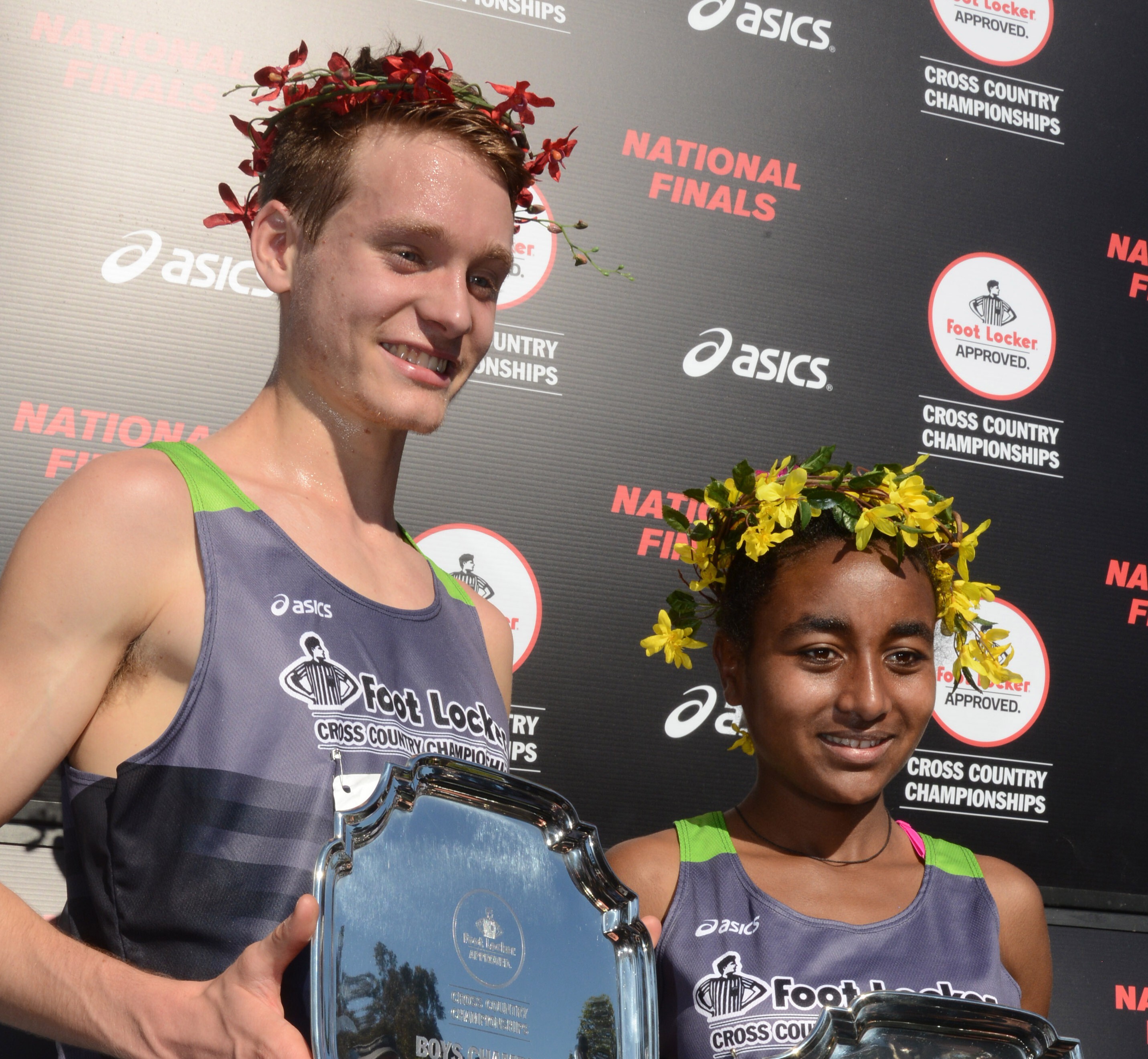
Drew Hunter, the newly-crowned USA 5-K road running champion, leads the men’s field and will be making his Manchester debut. Hunter’s biggest challengers will likely be 2:07 marathon Leonard Korir, veteran Sam Chelanga, and two-time Falmouth Road Race champion Ben Flanagan, a Canadian. A total of 14 men have sub-14:00 5000m personal bests.
Thursday’s race has a generous $47,800 prize money purse, and the top-3 men and women will receive $7,000, $4,000 and $3,000, respectively.
Behind the elites, 75 year-old Amby Burfoot will run Manchester for the 59th consecutive year (he ran virtually in 2020 using the race’s traditional course). Burfoot, the 1968 Boston Marathon champion, won the Manchester Road Race nine times from 1968 through 1977. Should he finish the race on Thursday he will earn sole ownership of the record for most total Manchester finishes at 59.
Thursday’s races will be broadcast on the Connecticut Fox affiliate, Fox 61. Their coverage will be streamed live and free globally at fox61.com at 10:00 a.m. EST.
The complete elite fields are below with 5000m personal bests.
WOMEN
–Weini KELATI (USA), 14:58.24
Amy-Eloise MARKOVC (GBR), 15:03.22
Aisling CUFFE (USA), 15:11.13
Taylor WERNER (USA), 15:11.19i
Katie IZZO (USA), 15:13.09i
Monicah NGIGE (KEN), 15:16 (road)
Edna KIPLAGAT (40+/KEN), 15:20 (road)
Sarah INGLIS (GBR), 15:24.17
Fiona O’KEEFFE (USA), 15:31.45
Tristin VAN ORD (USA), 15:53.44
Emeline DELANIS (FRA), 16:02.54
Keira D’AMATO (USA), 16:09.86
Annmarie TUXBURY (USA), 16:17.45
Emily SETLACK (40+/CAN), 16:26.31
Whitney MACON (USA), 35:36 (road 10-K)
MEN
–Sam CHELANGA (USA), 13:04.35i
Leonard KORIR (USA), 13:15.45
Drew HUNTER (USA), 13:17.55
Ben FLANAGAN (CAN), 13:20.67
Donn CABRAL (USA), 13:22.19
Jordan MANN (USA), 13:27.68i
Blaise FERRO (USA), 13:31.54
John DRESSEL (USA), 13:36.29
Alex OSTBERG (USA), 13:42.44
Mo HREZI (LBA), 13:42.80
Matt McCLINTOCK (USA), 13:47.68
Alfredo SANTANA (PUR), 13:48.10
Joey BERRIATUA (USA), 13:49.16
Julius DIEHR (USA), 13:56.79
Tai DINGER (USA), 14:09.41
Brendan PRINDIVILLE (USA), 14:10.96.
(11/24/2021) ⚡AMPby David Monti
Manchester Road Race
The Manchester Road race is one of New England’s oldest and most popular road races. The 86th Manchester Road Race will be held on Thanksgiving Day. It starts and finishes on Main Street, in front of St. James Church. The Connecticut Sports Writers’ Alliance recently honored the Manchester Road Race. The CSWA, which is comprised of sports journalists and broadcasters...
more...

